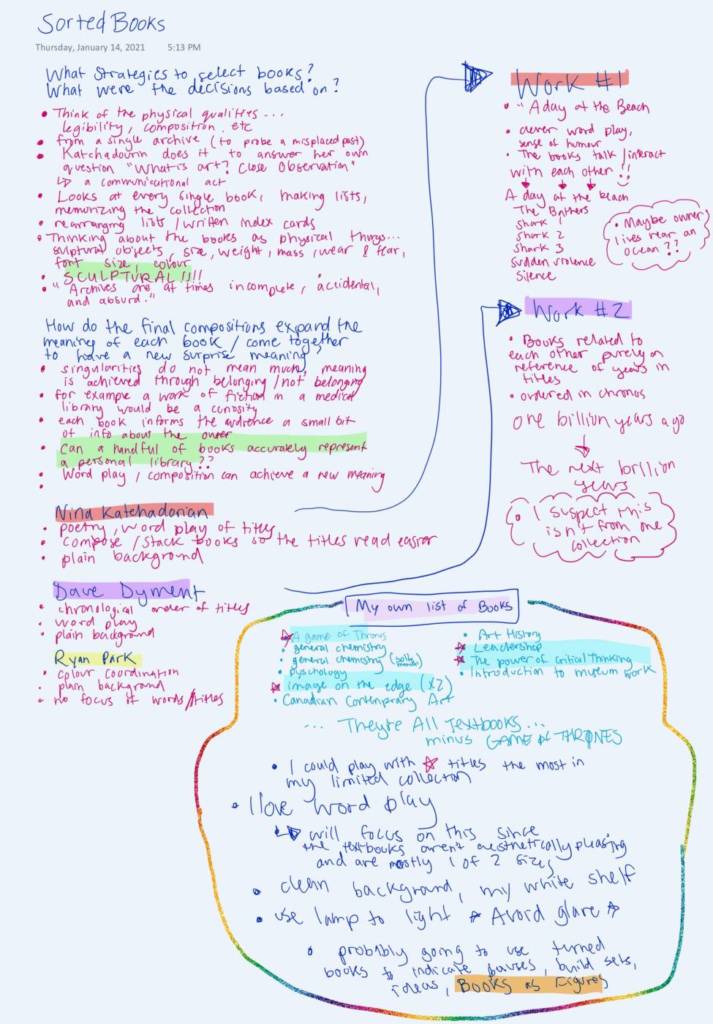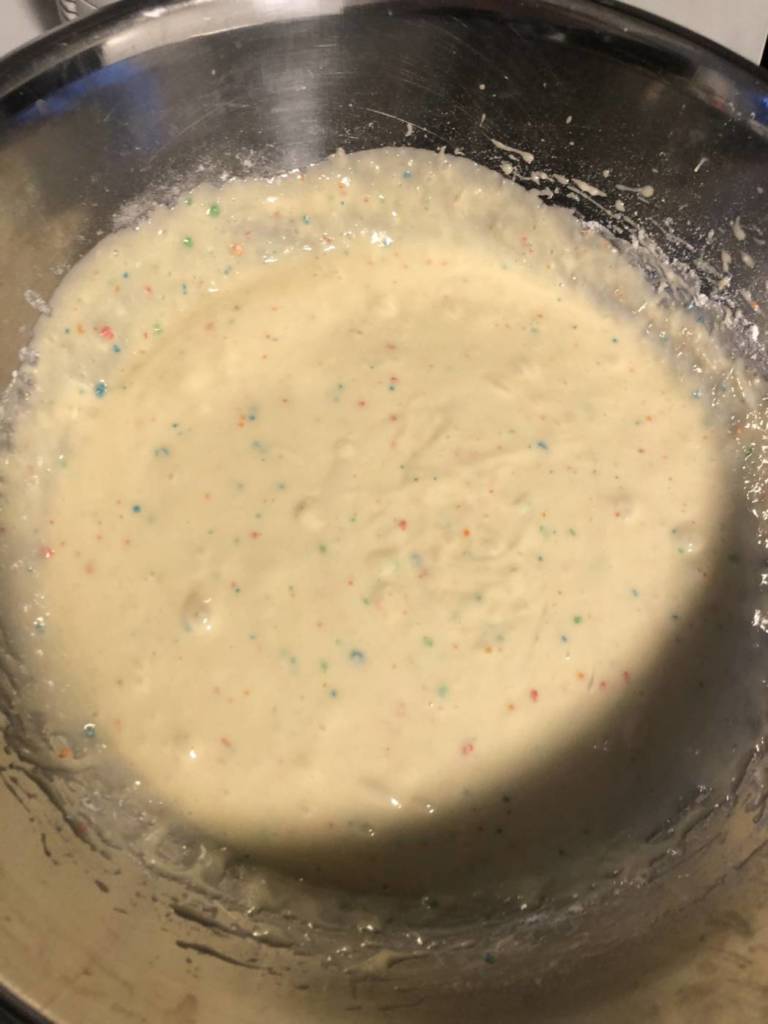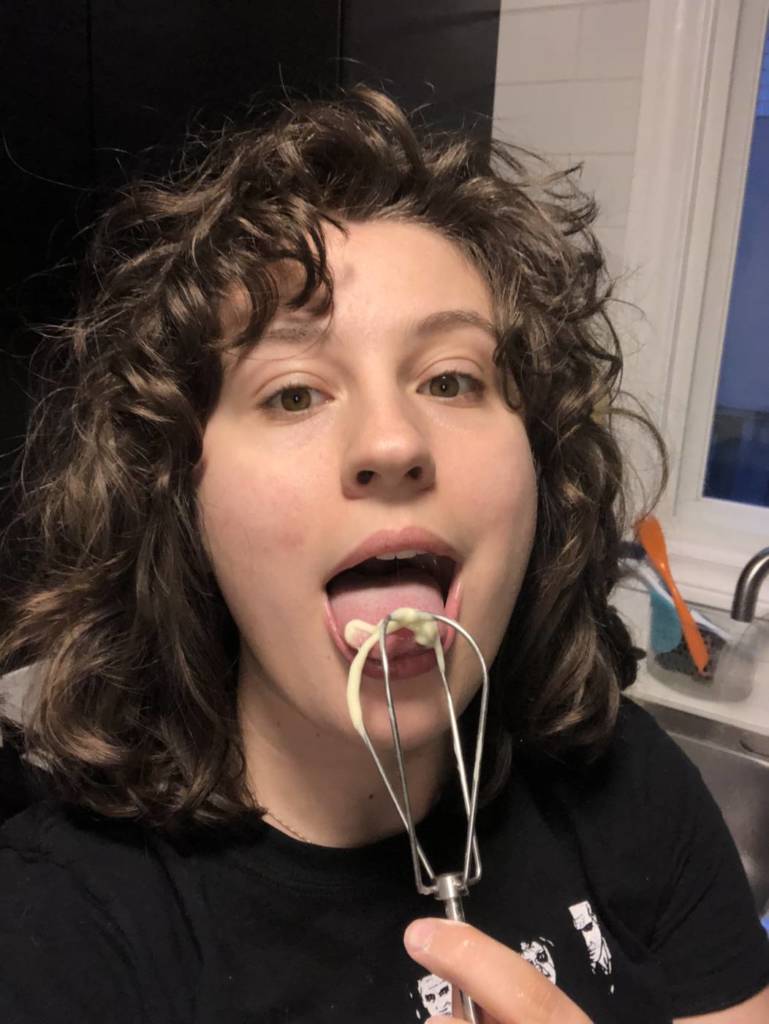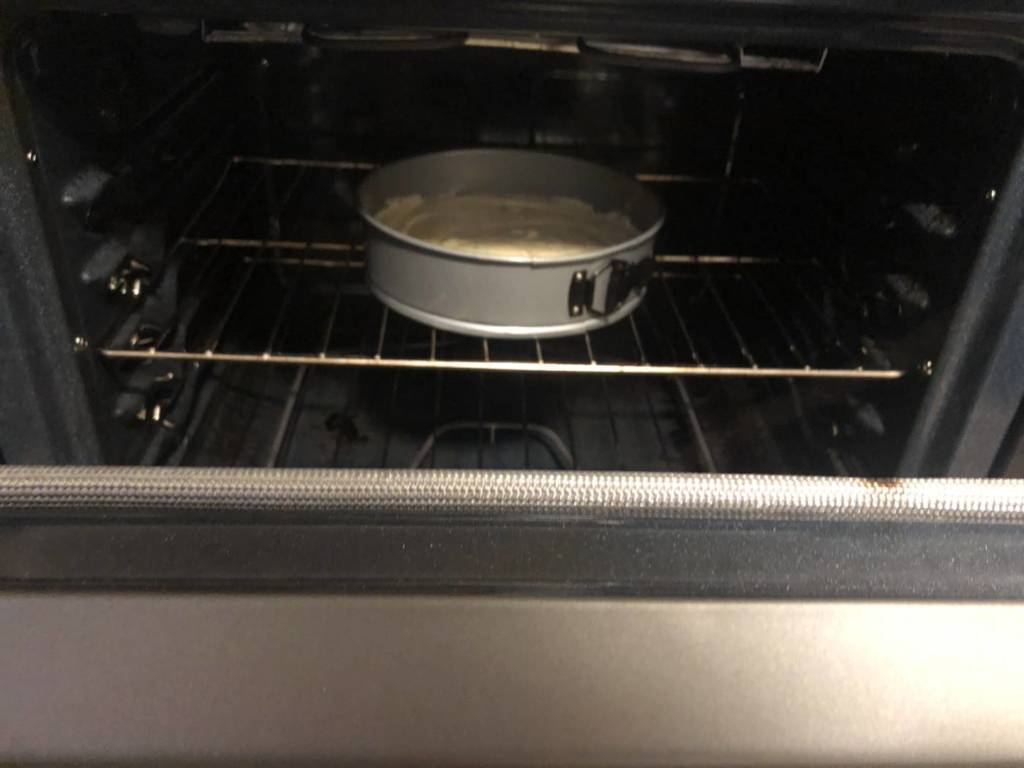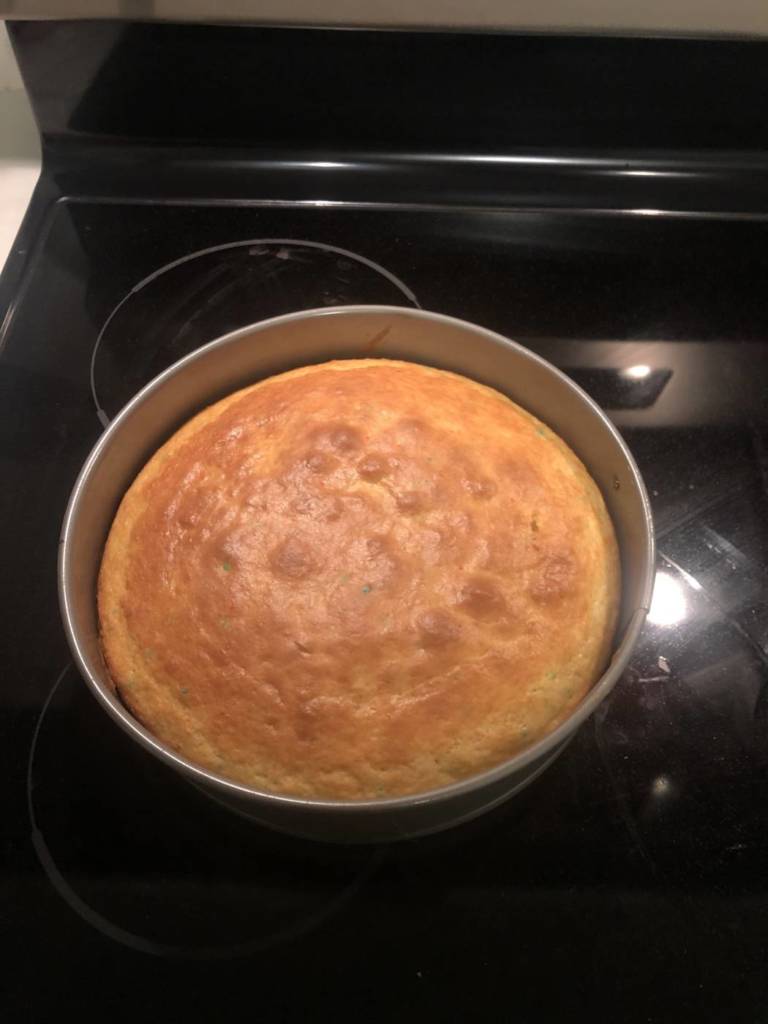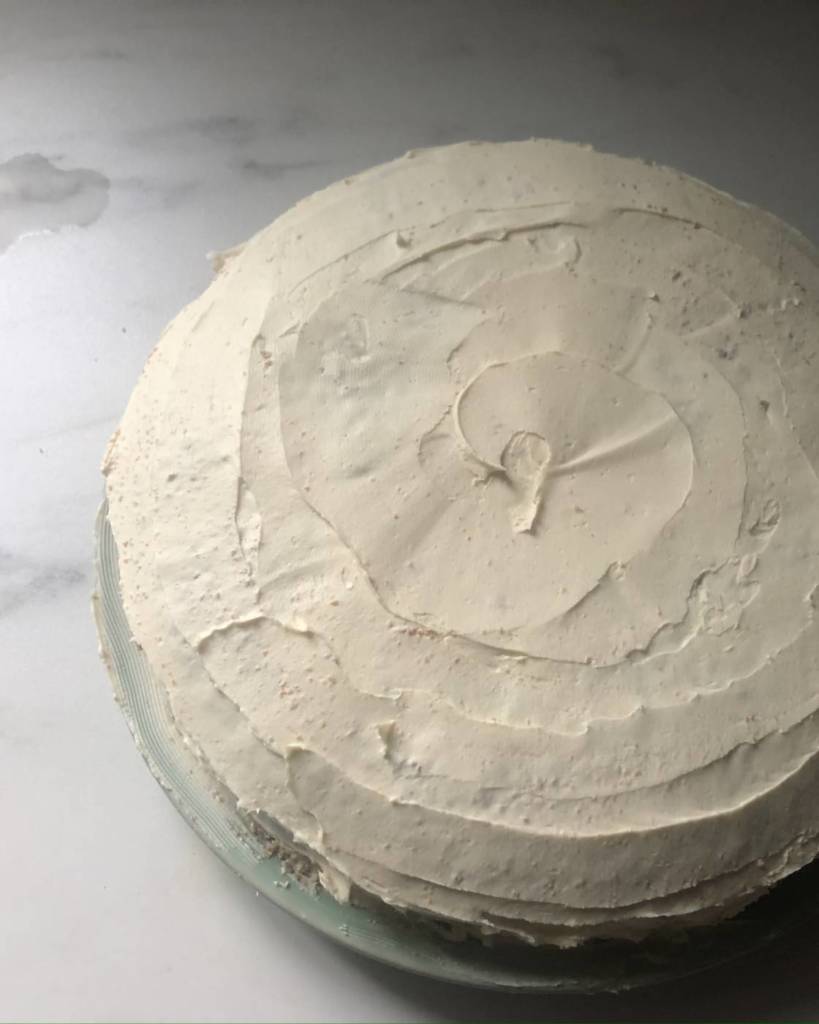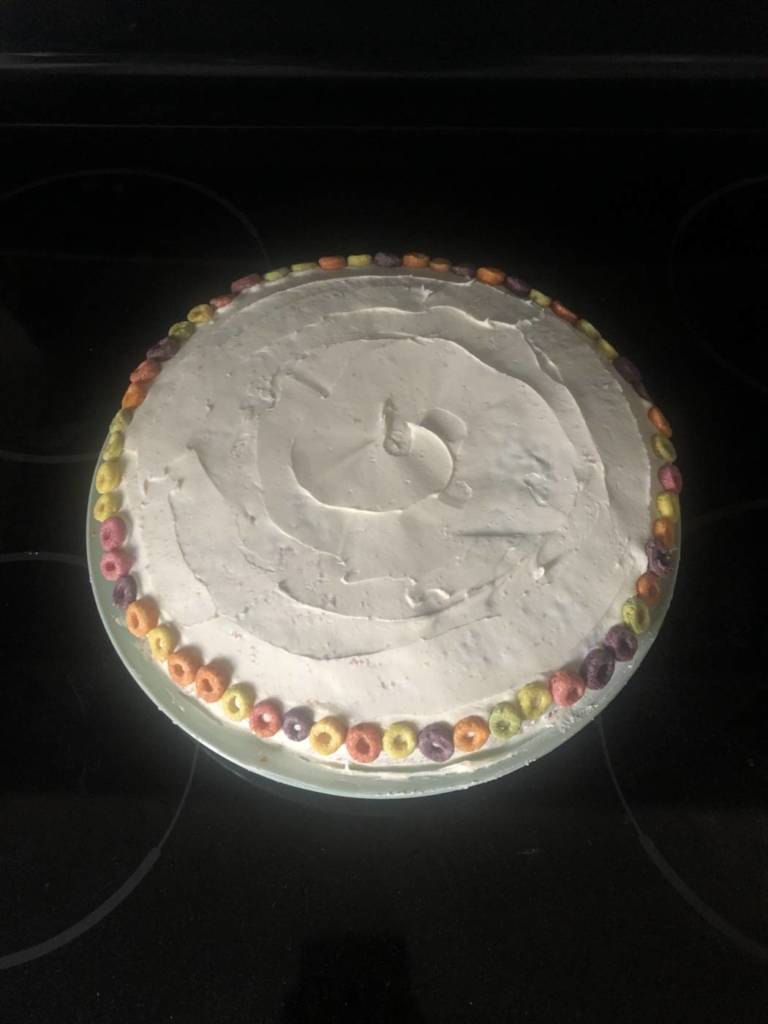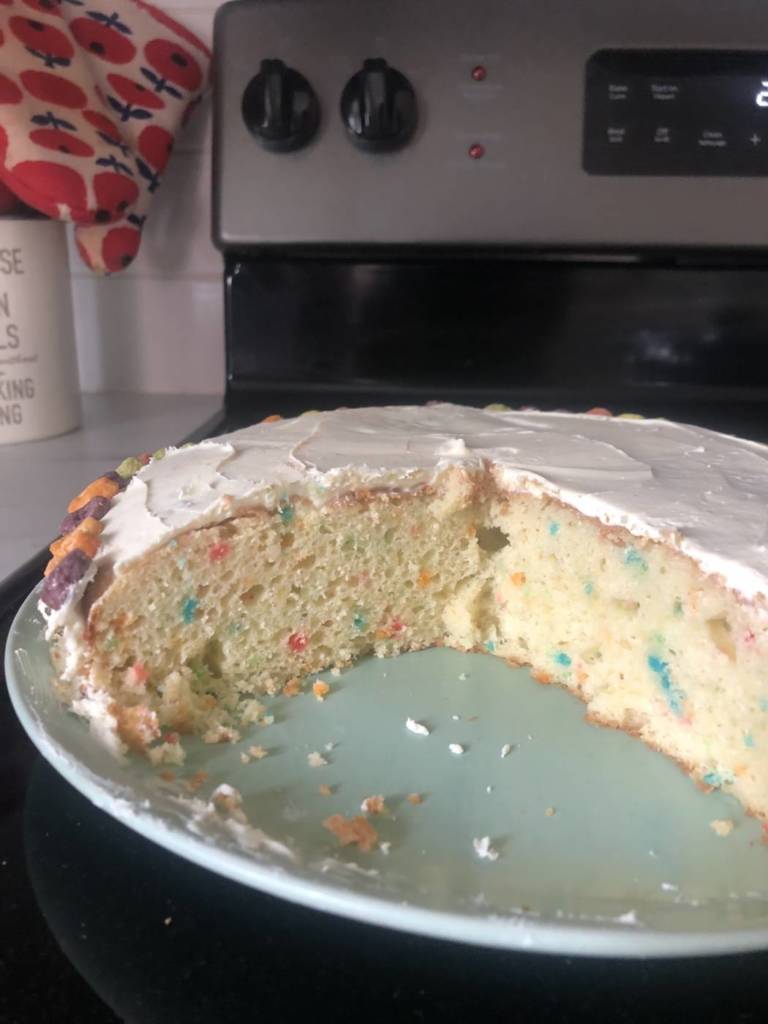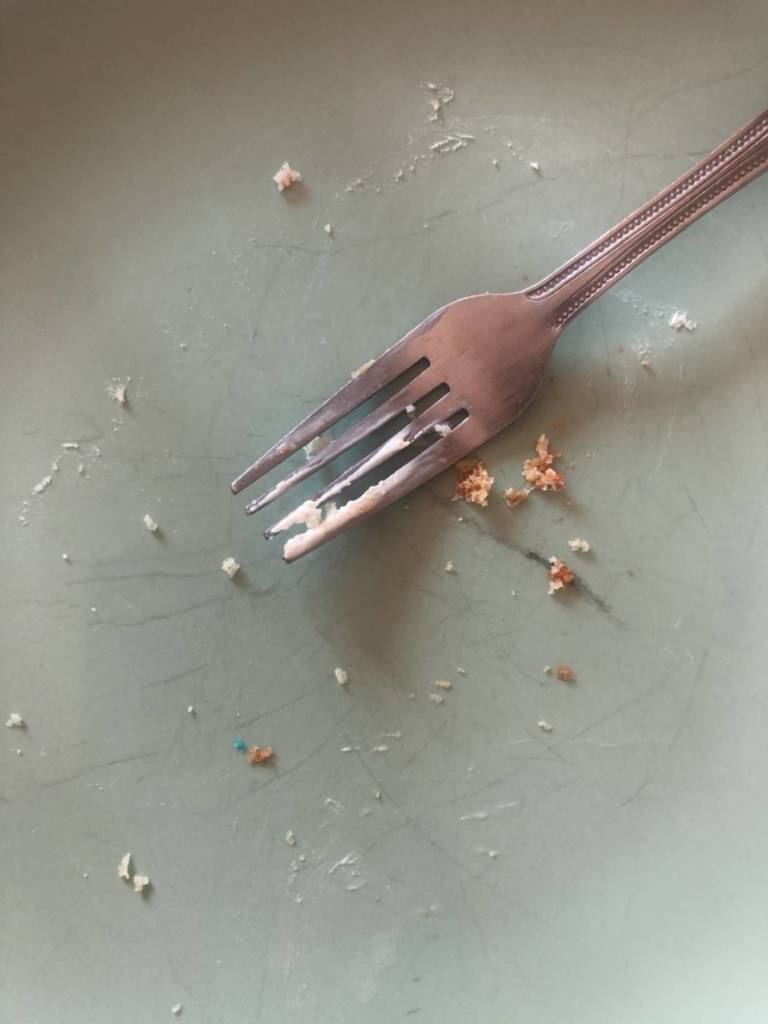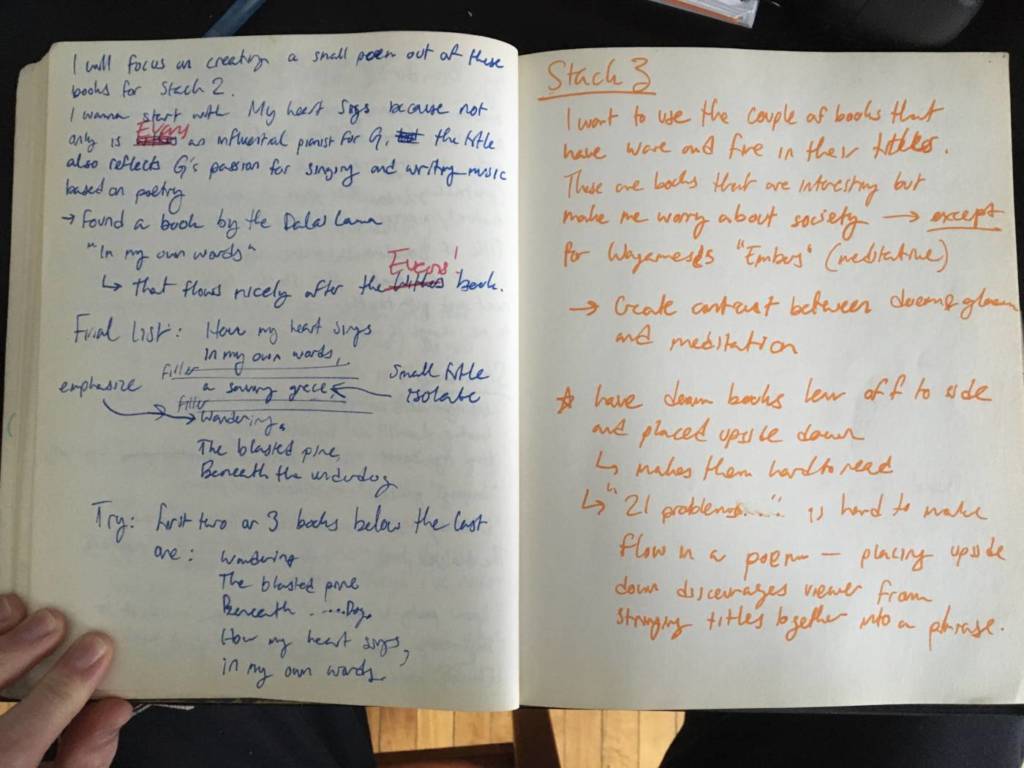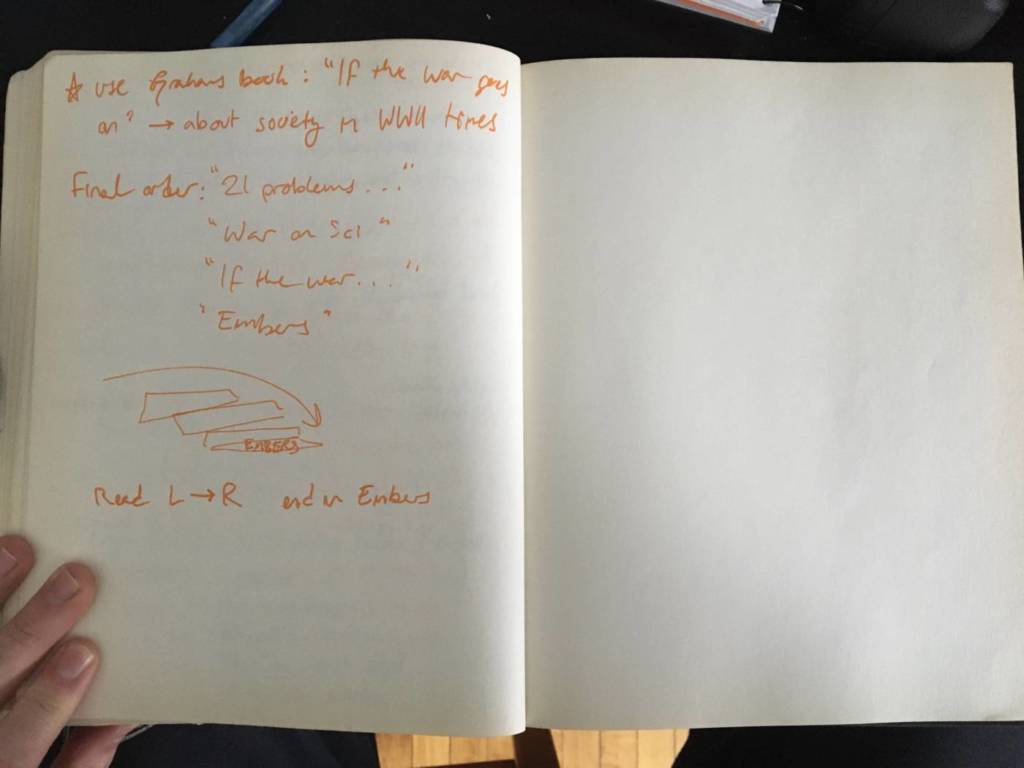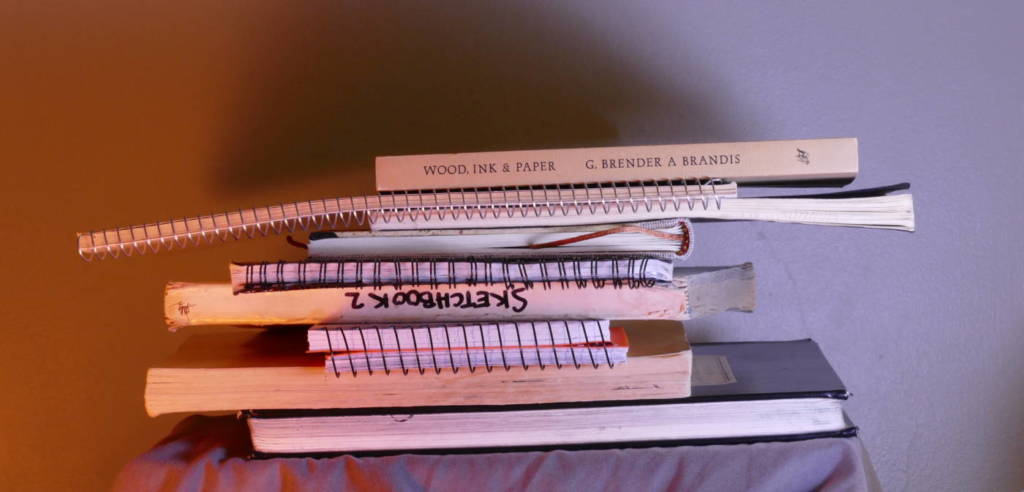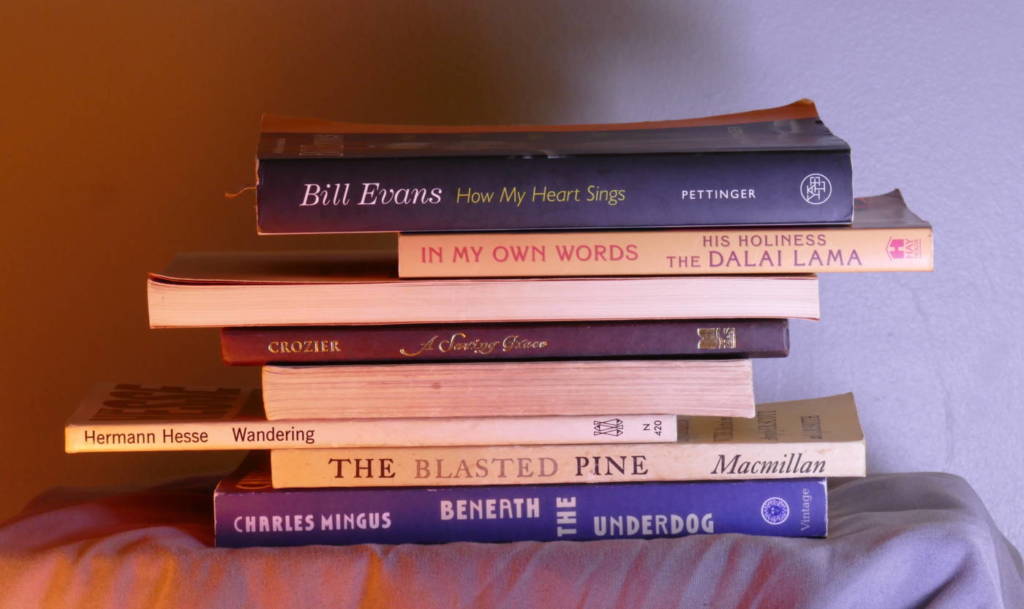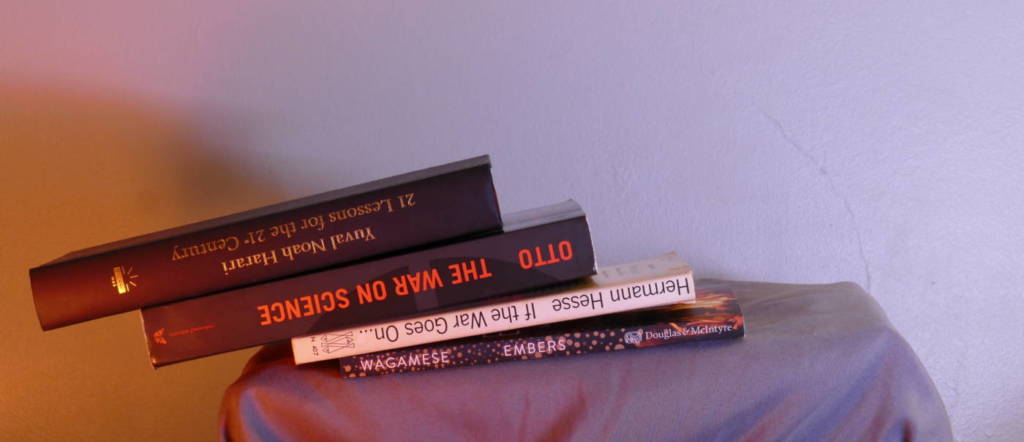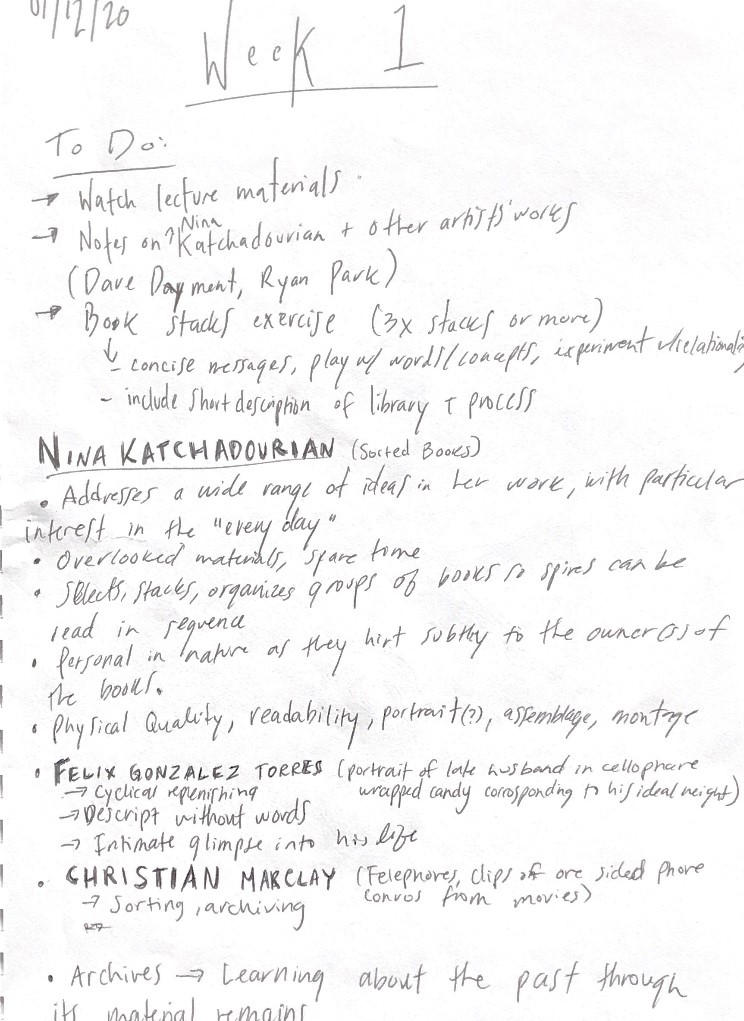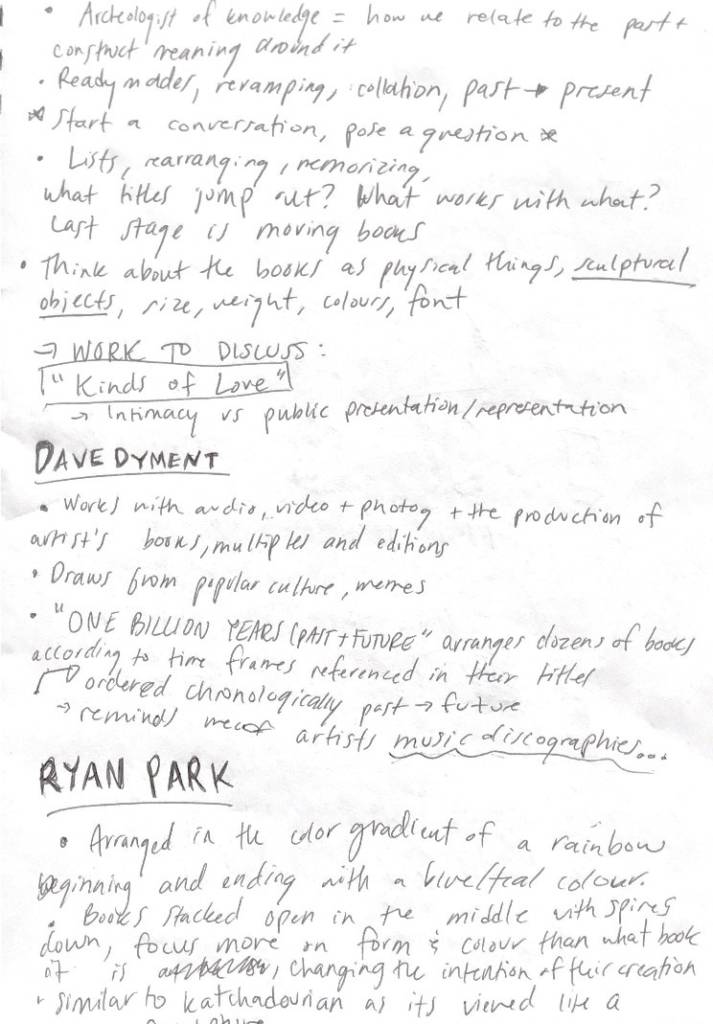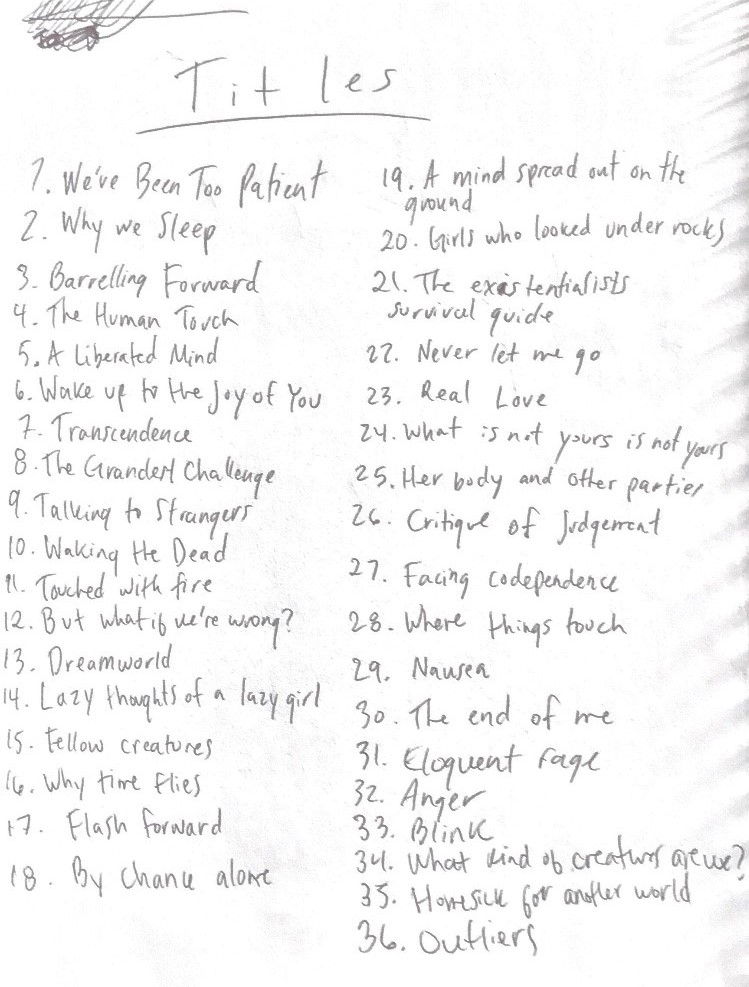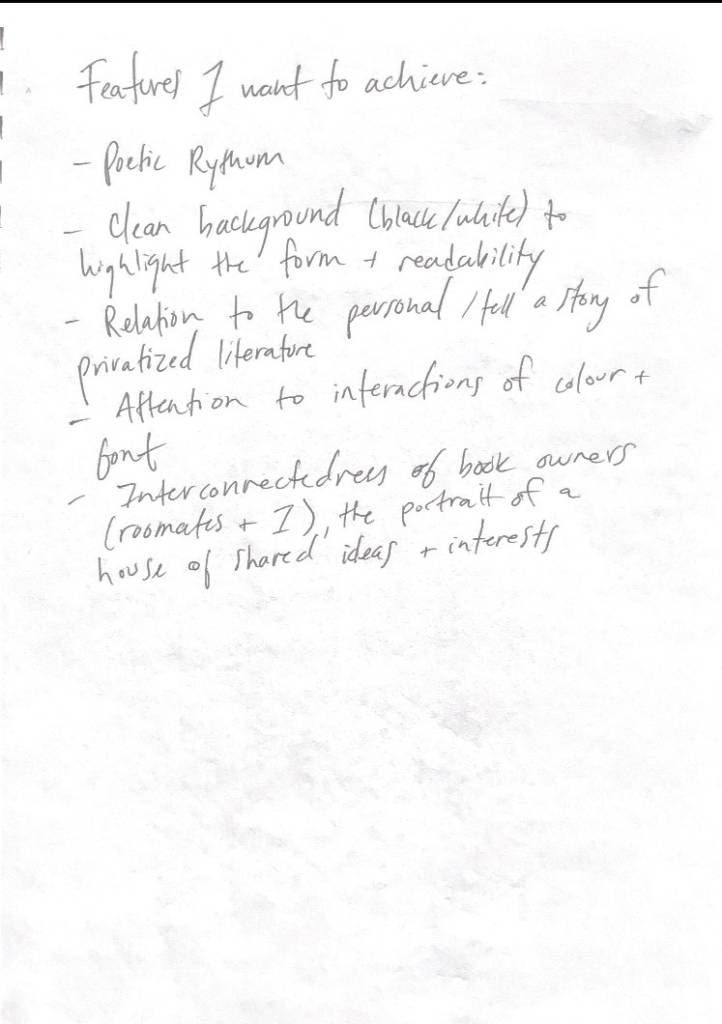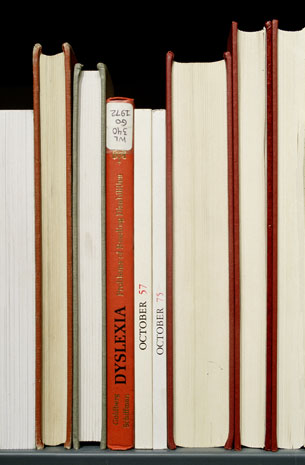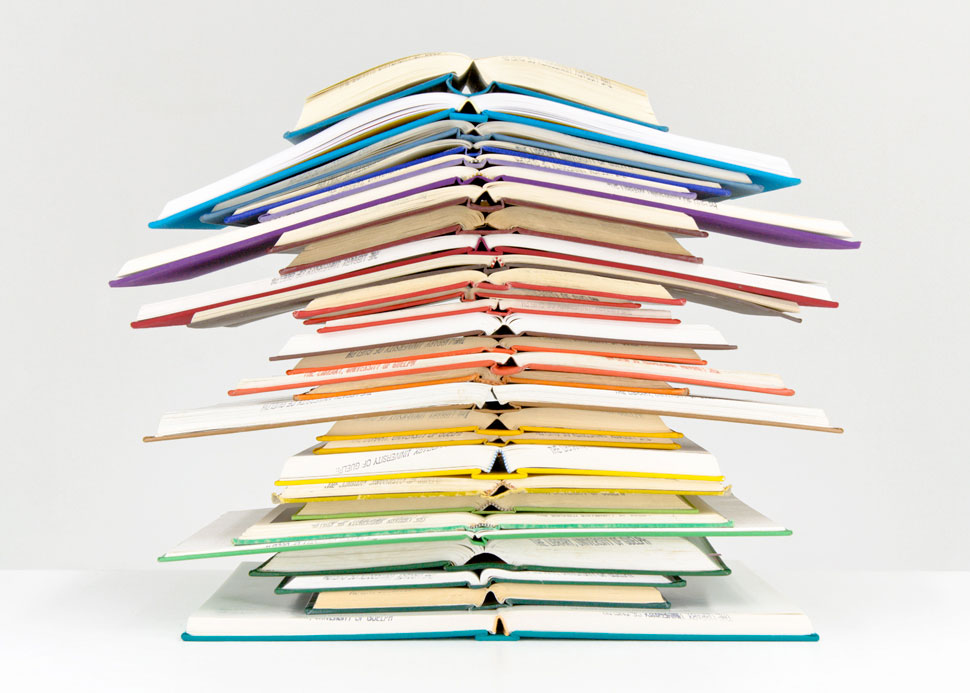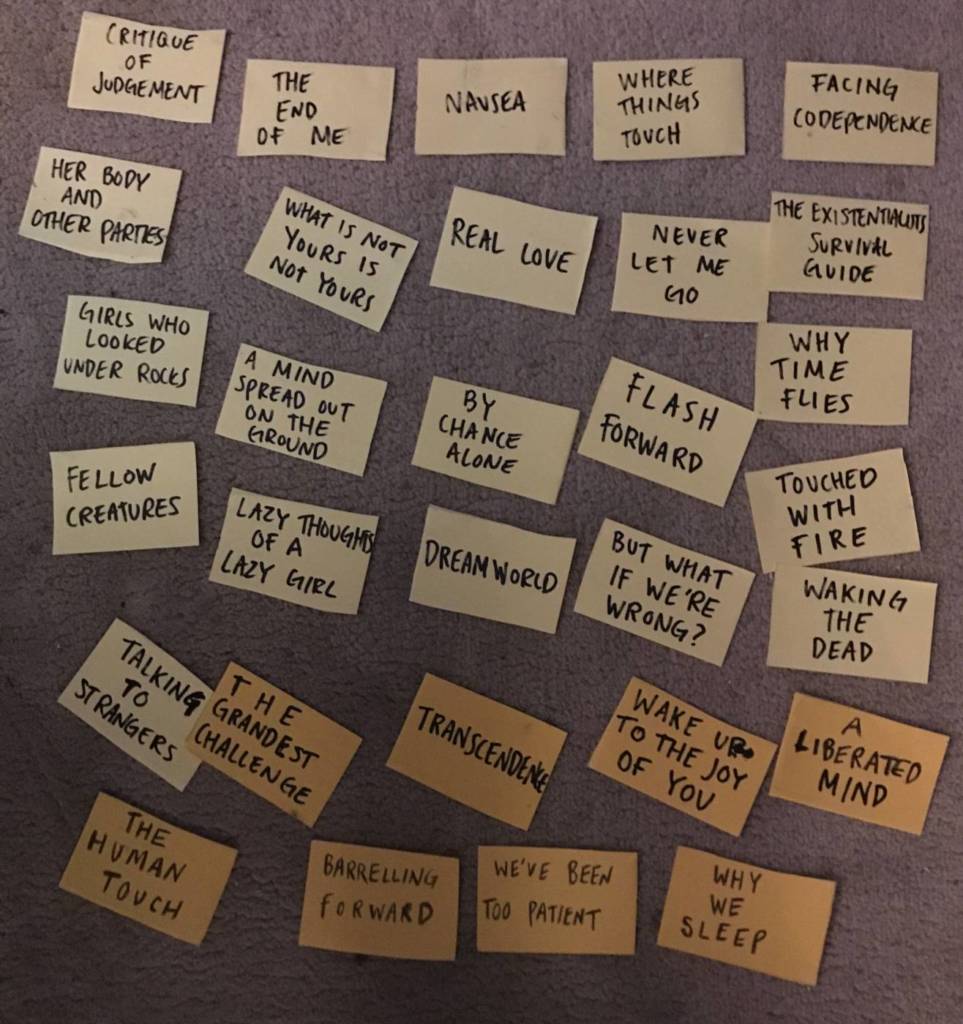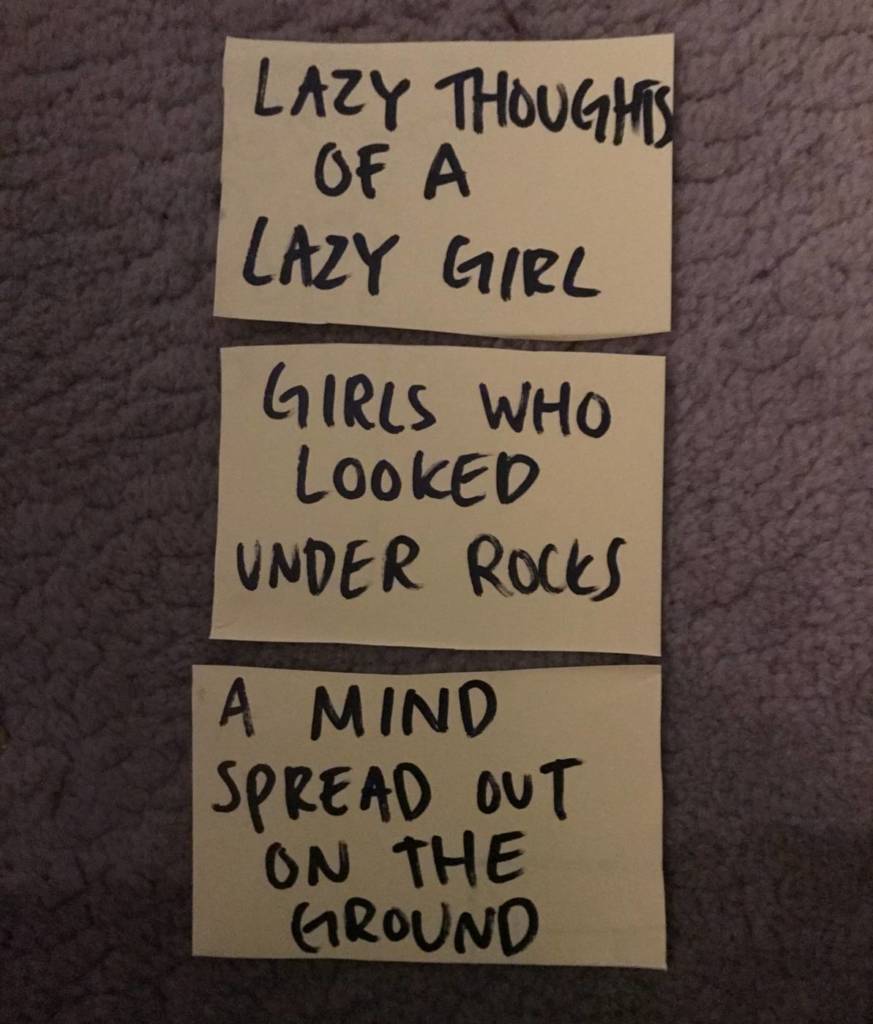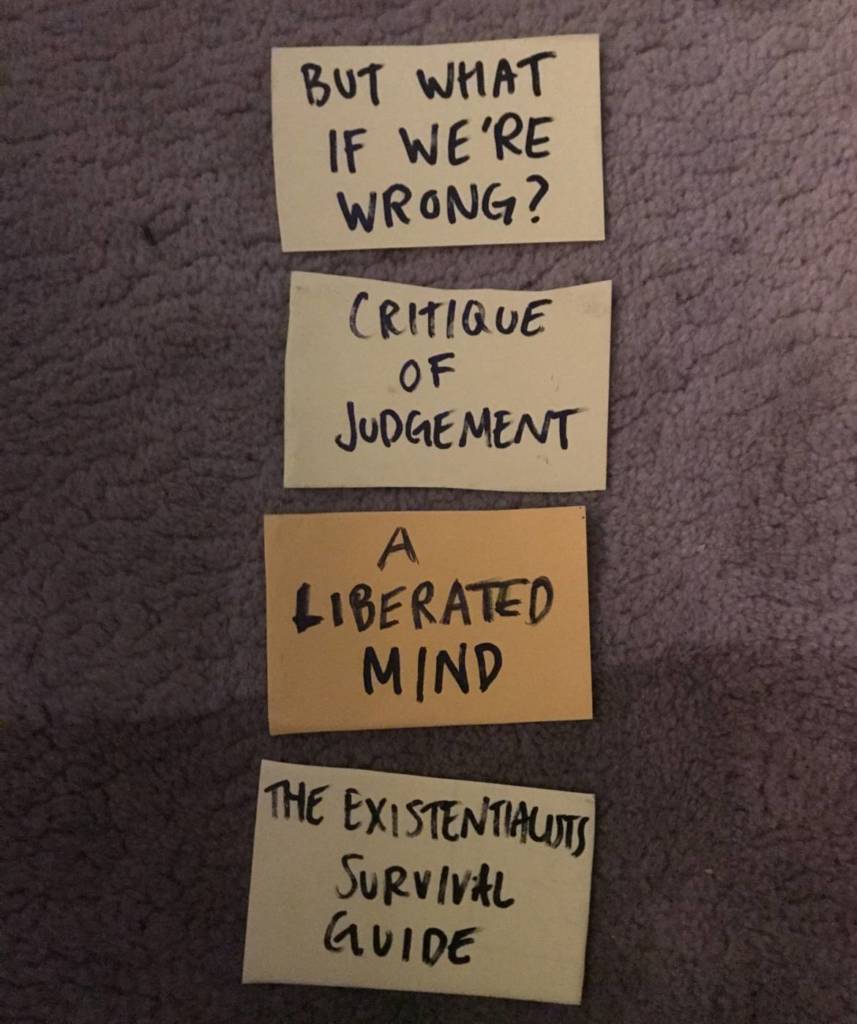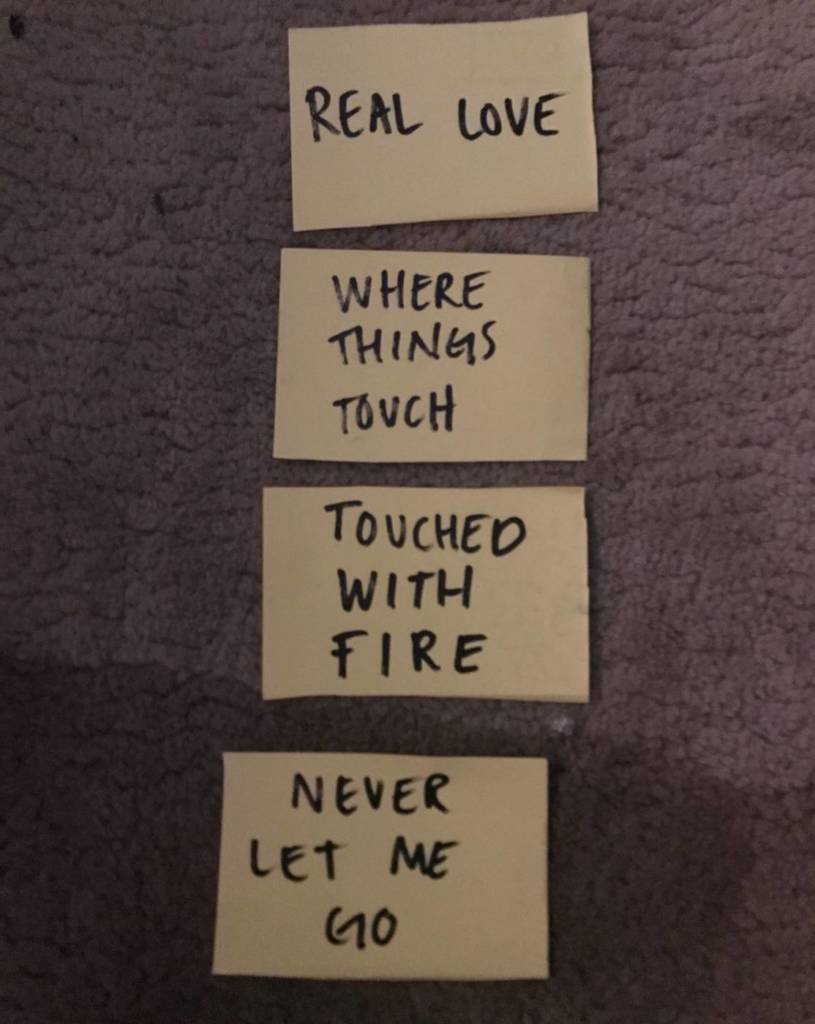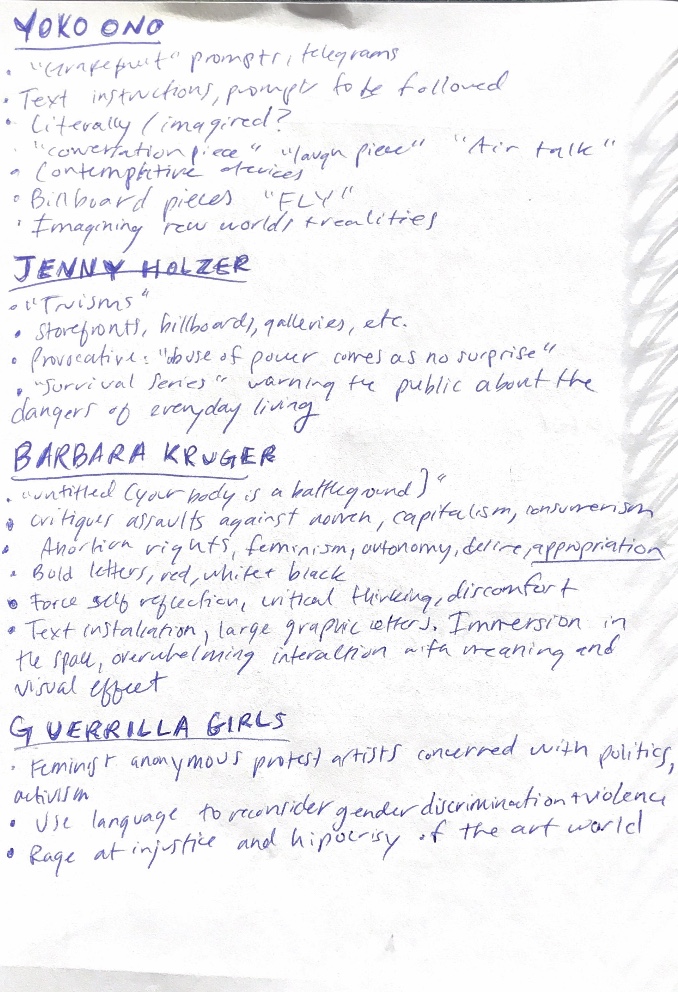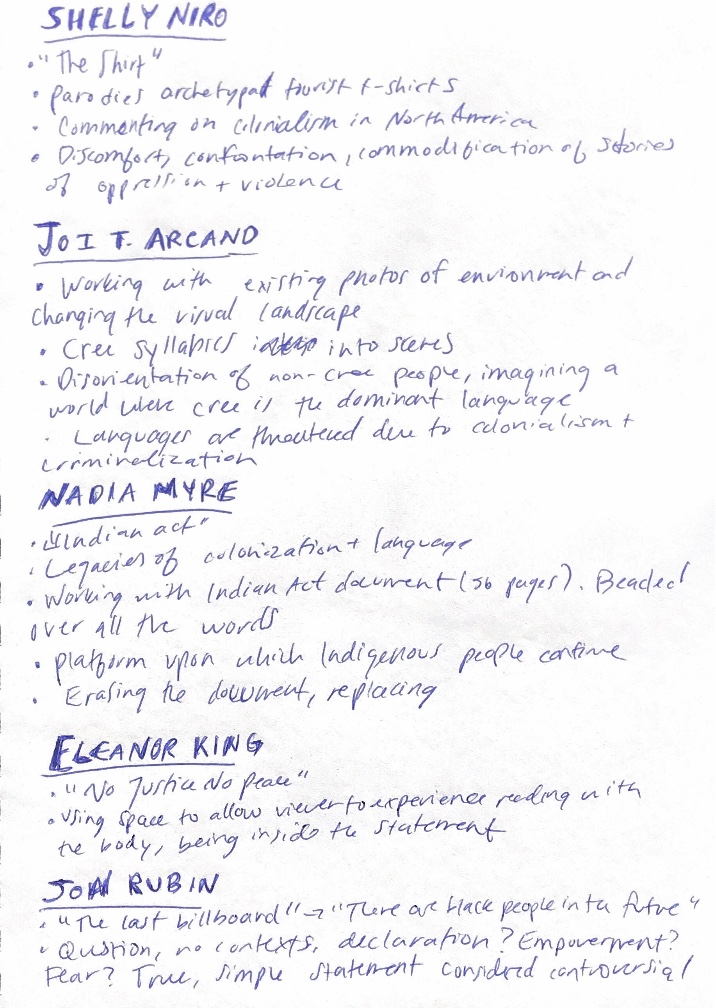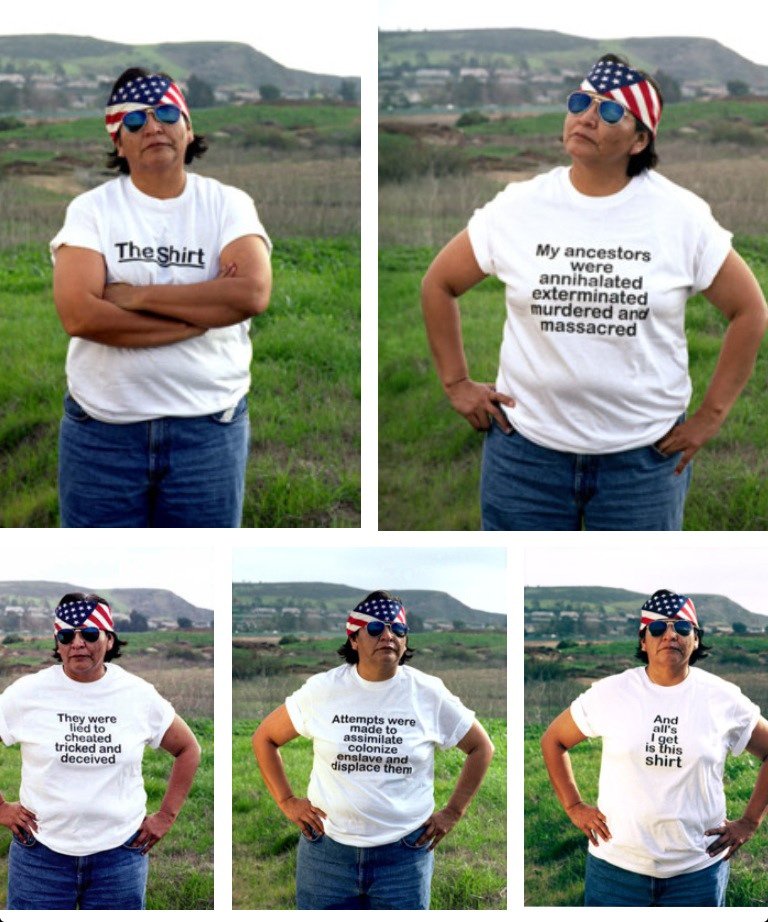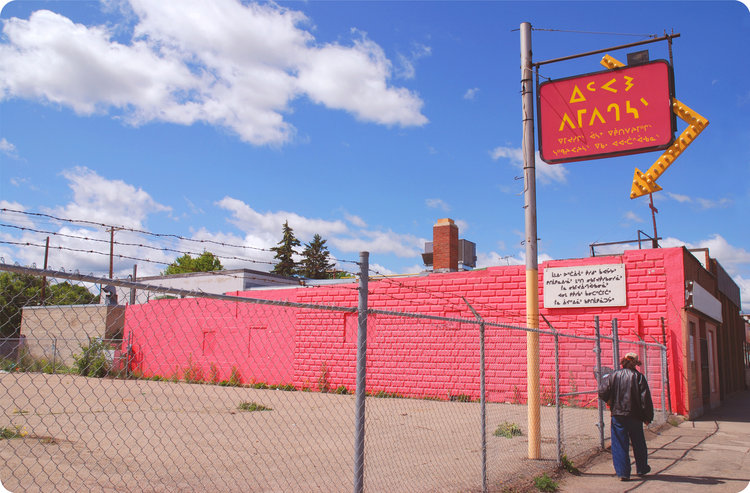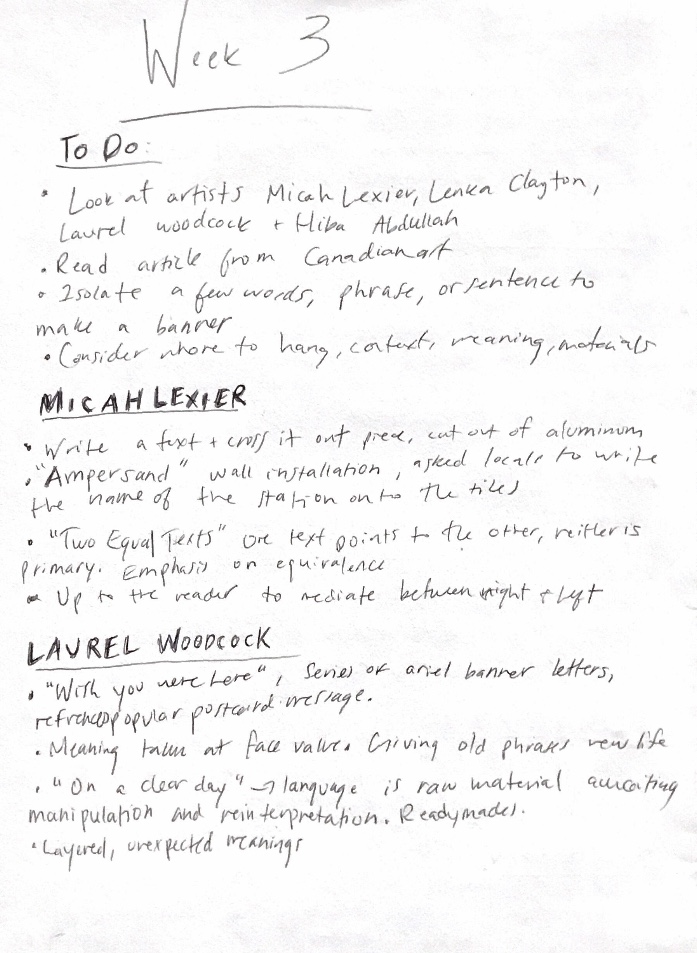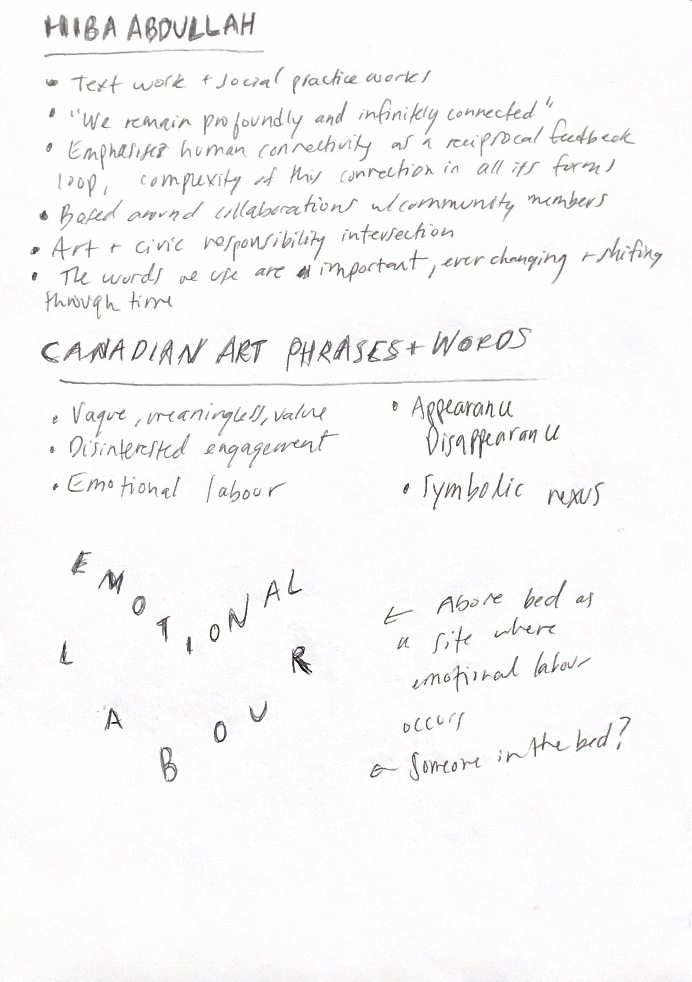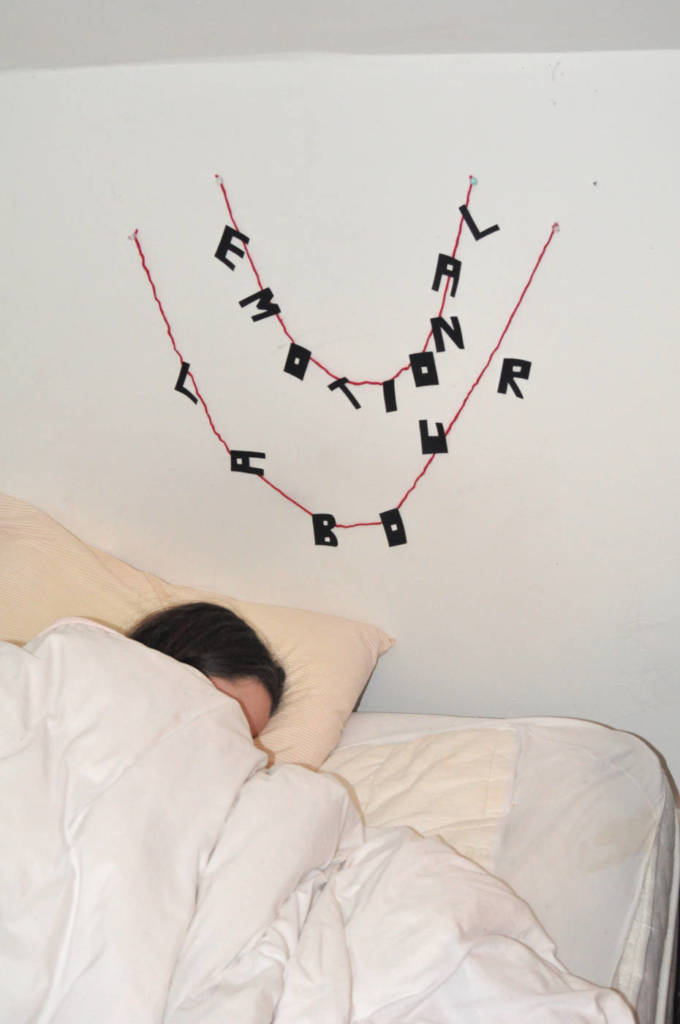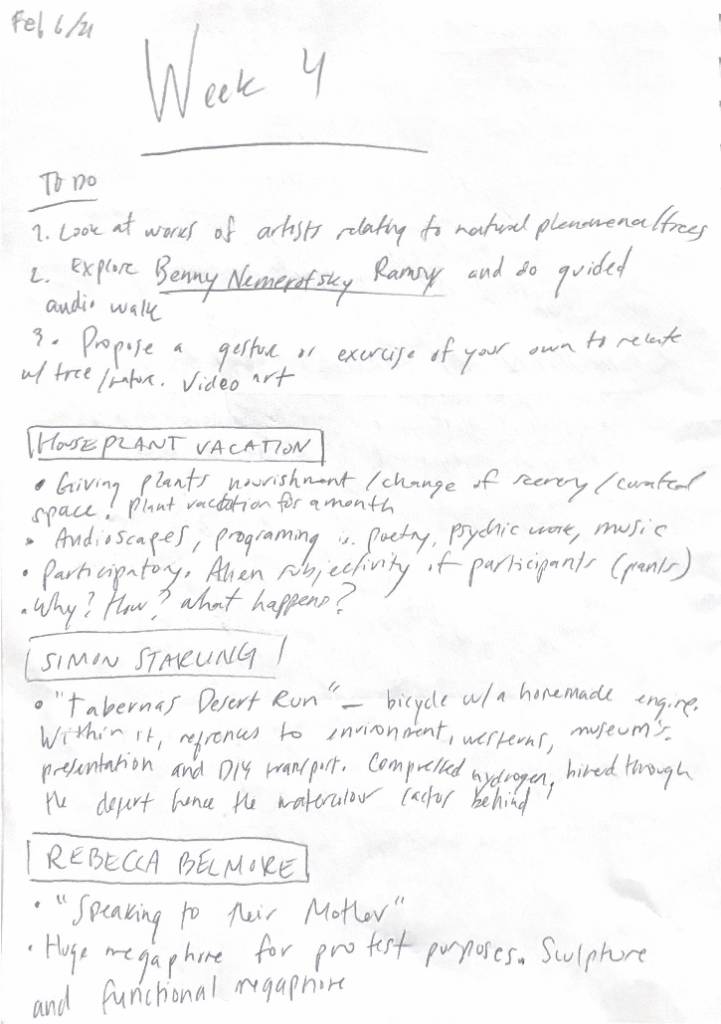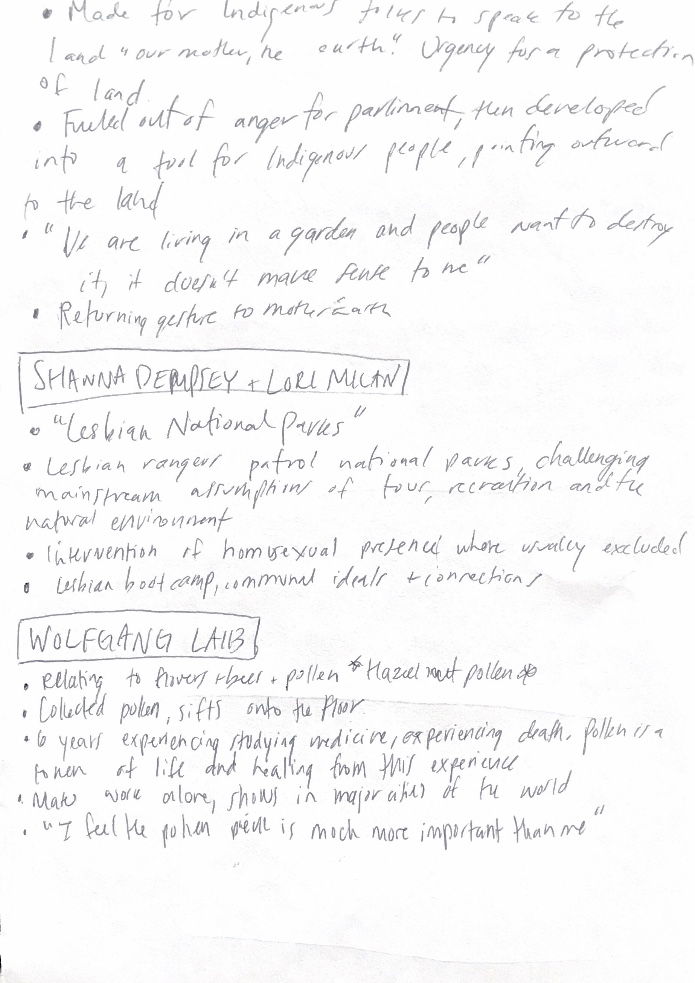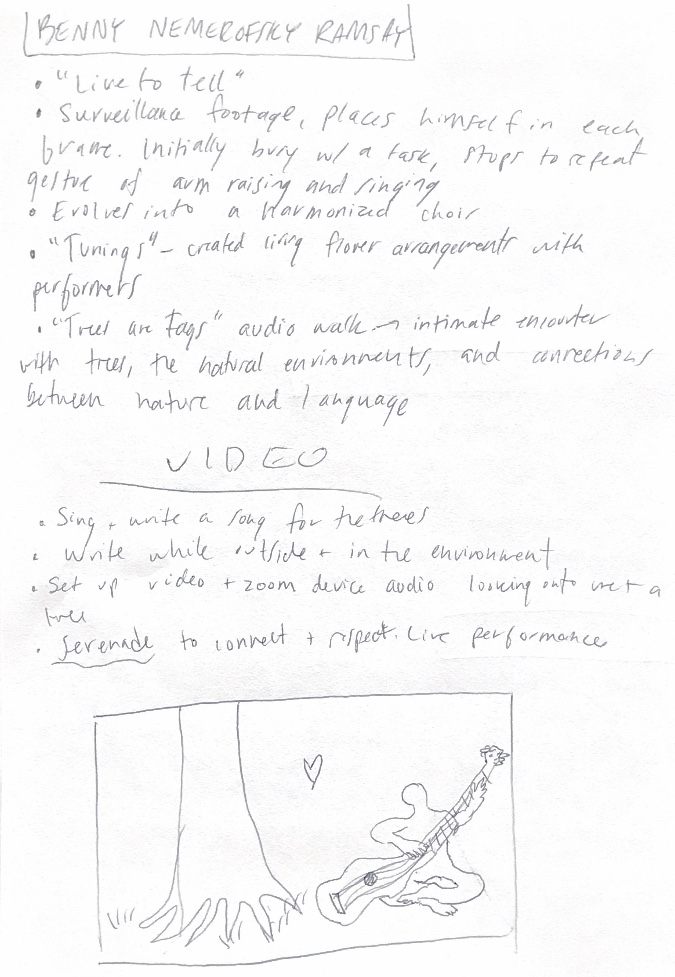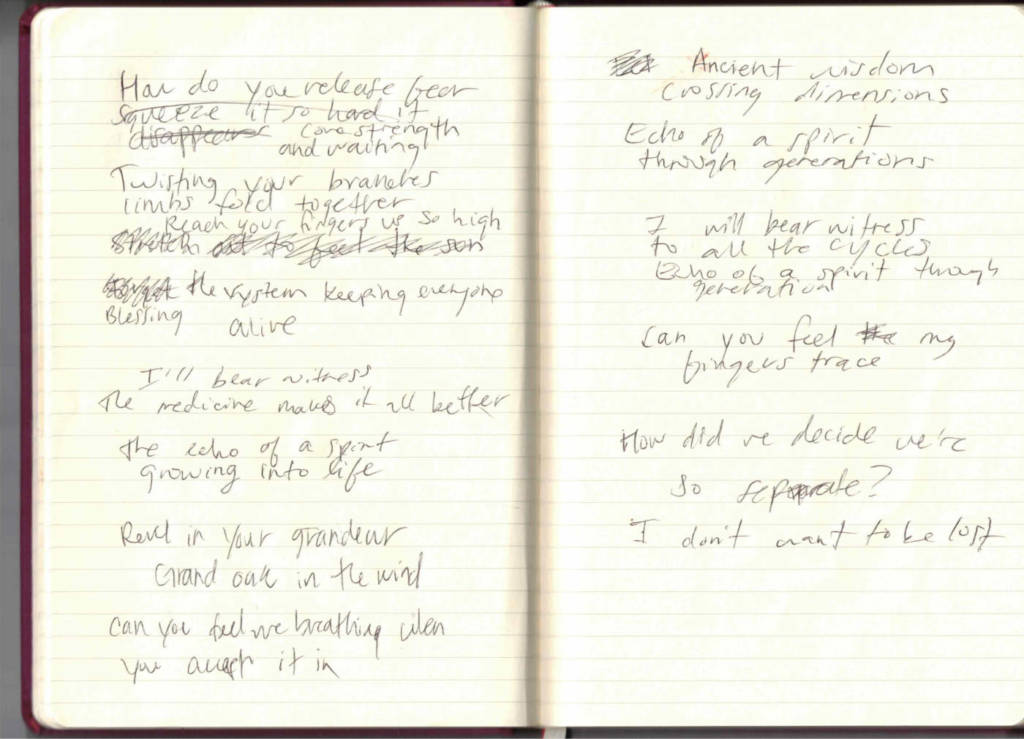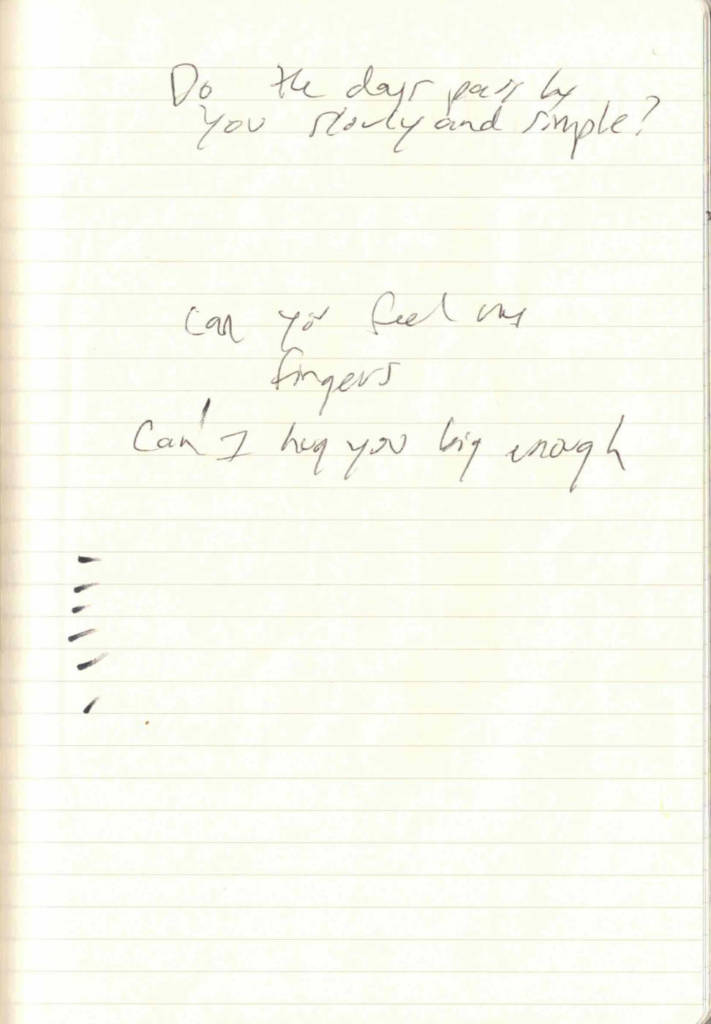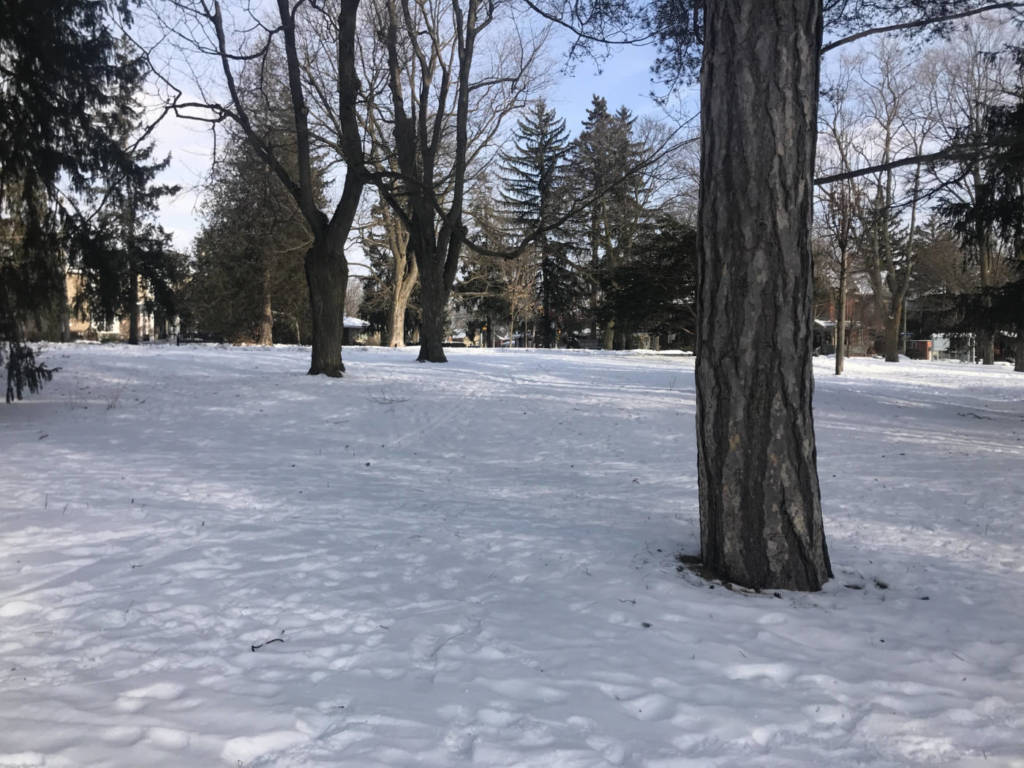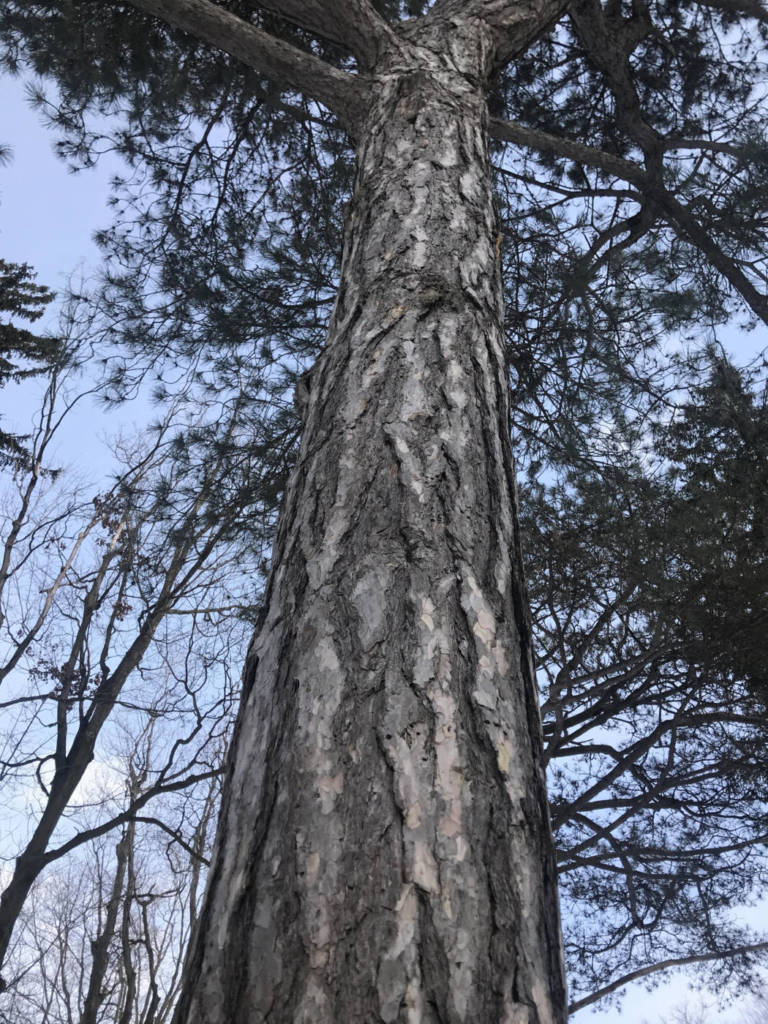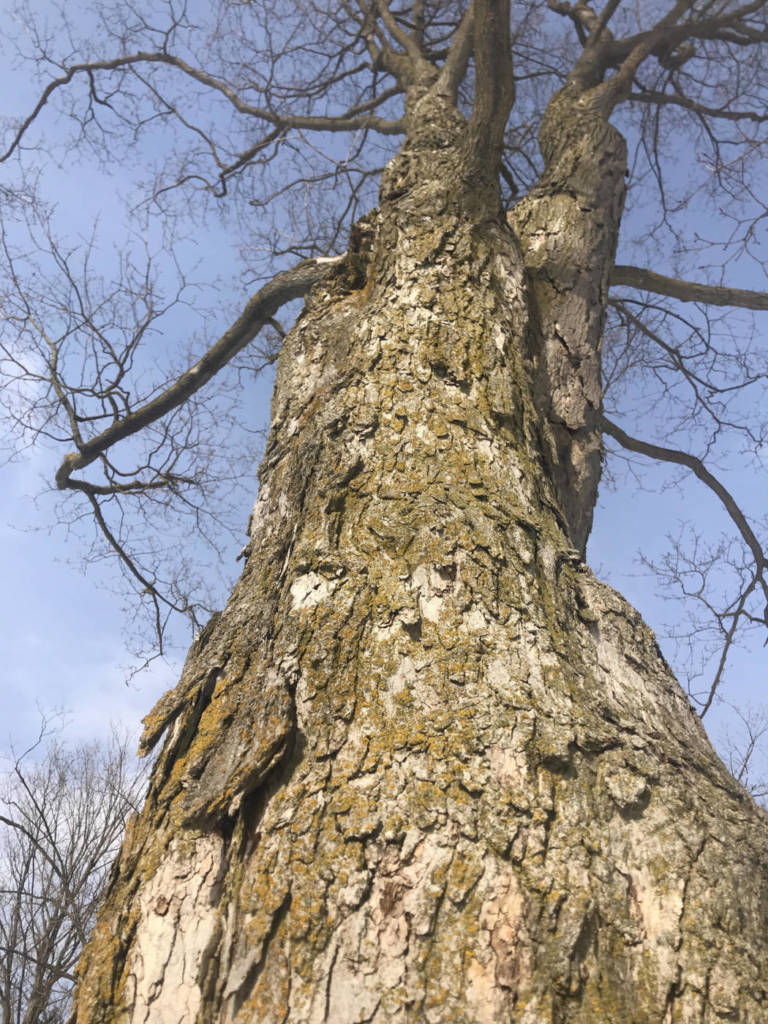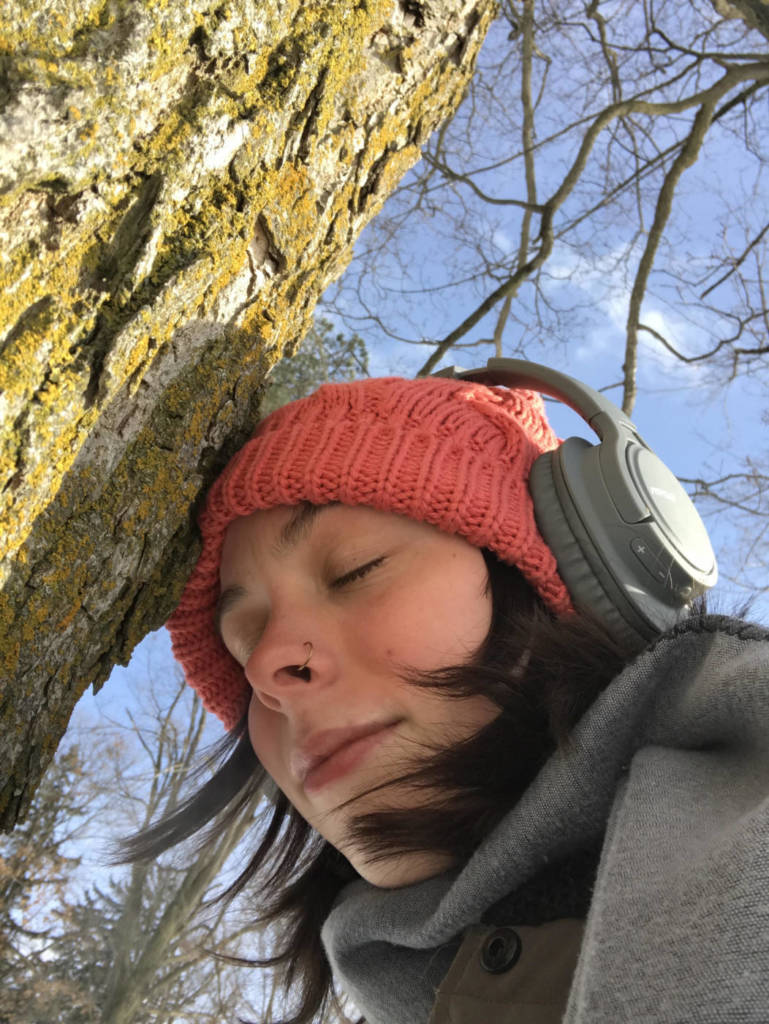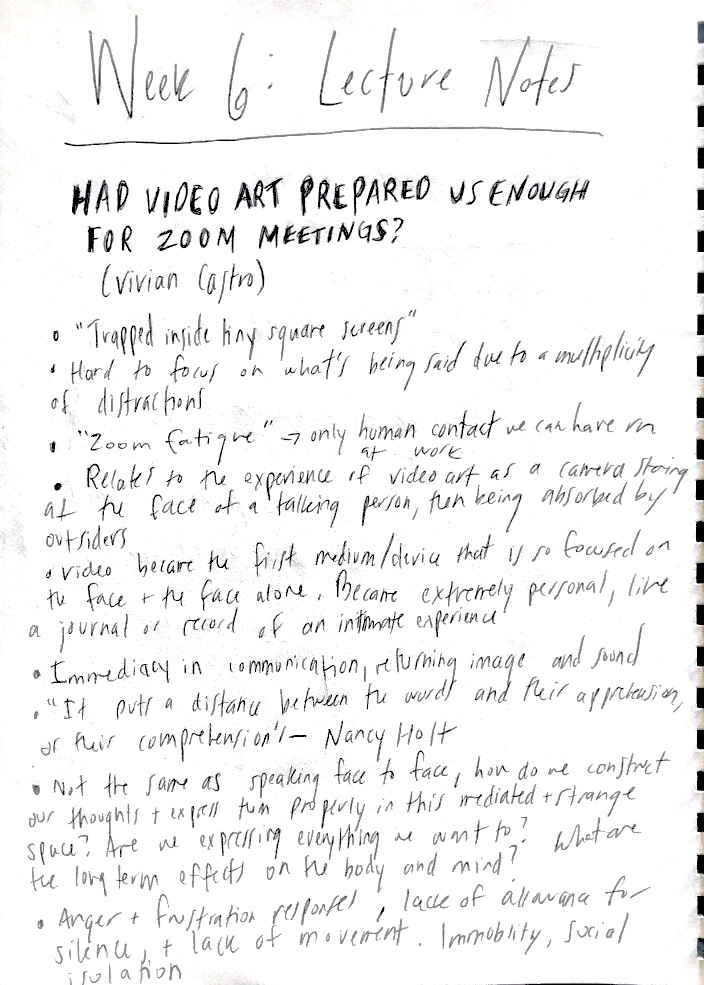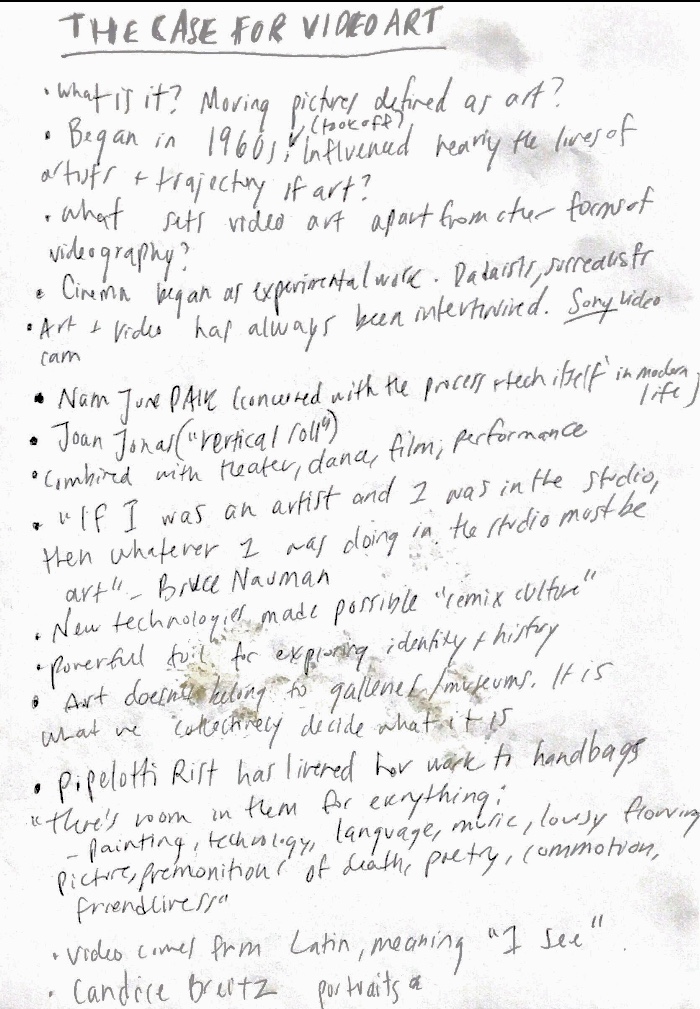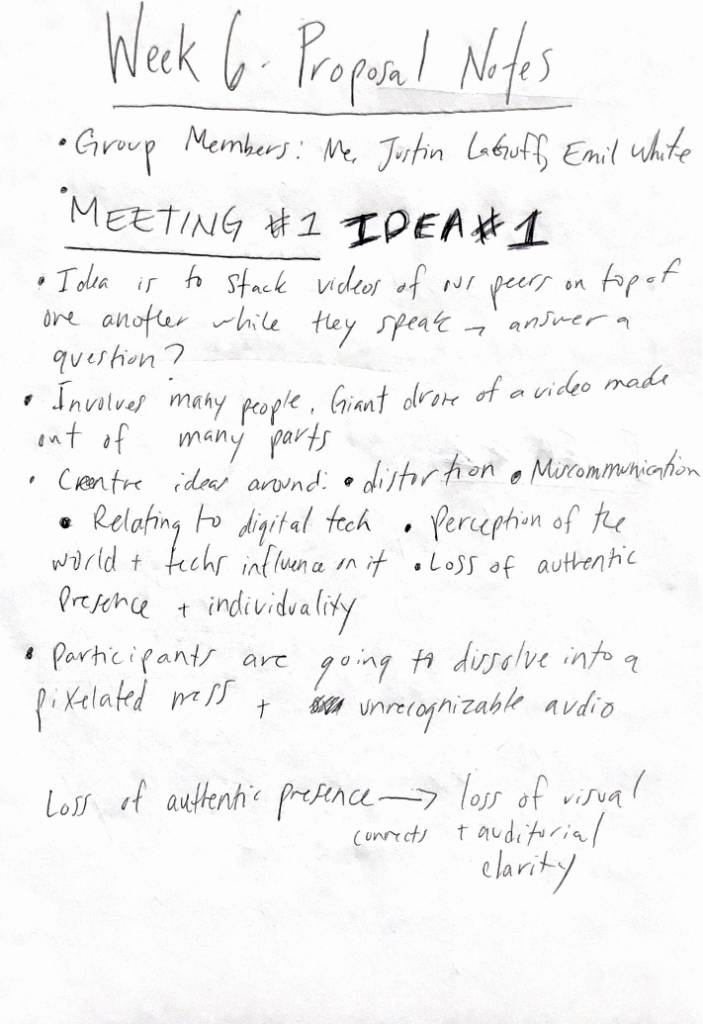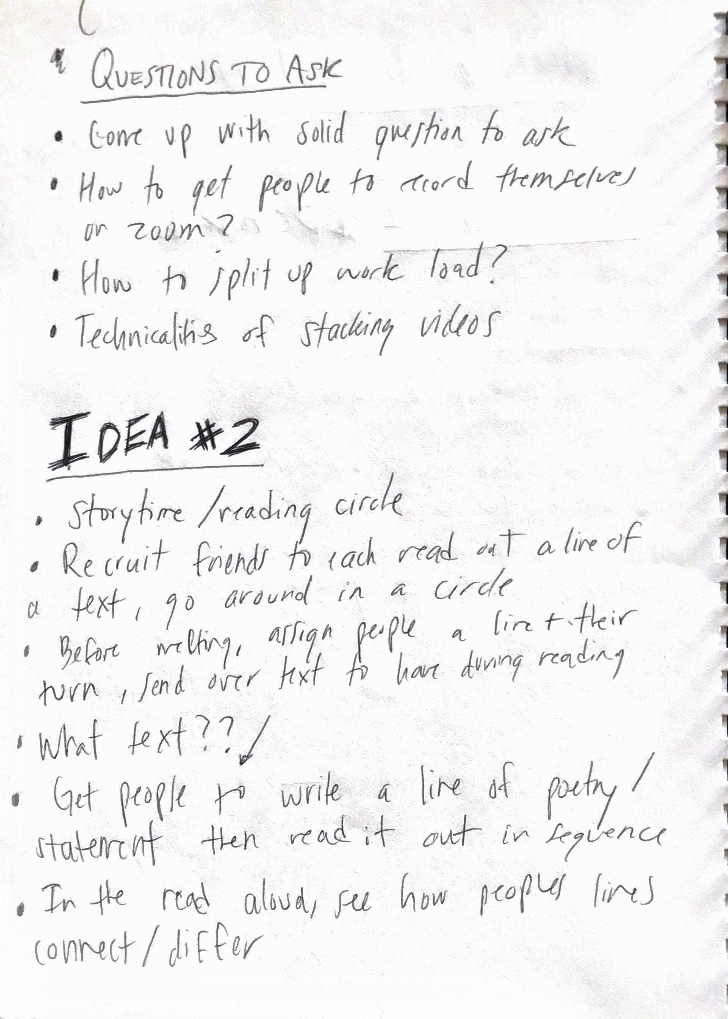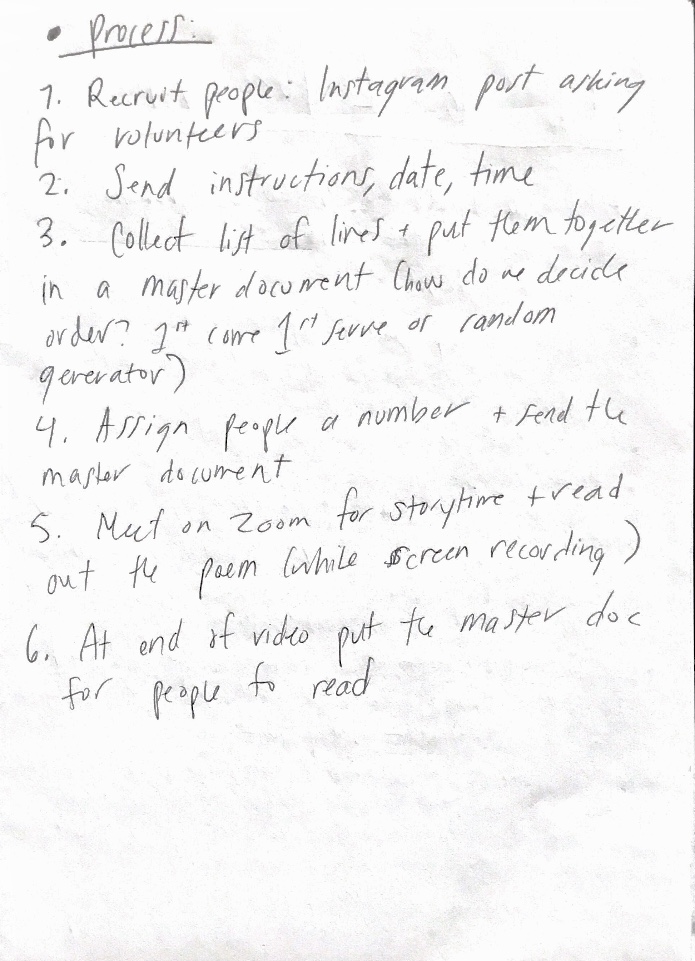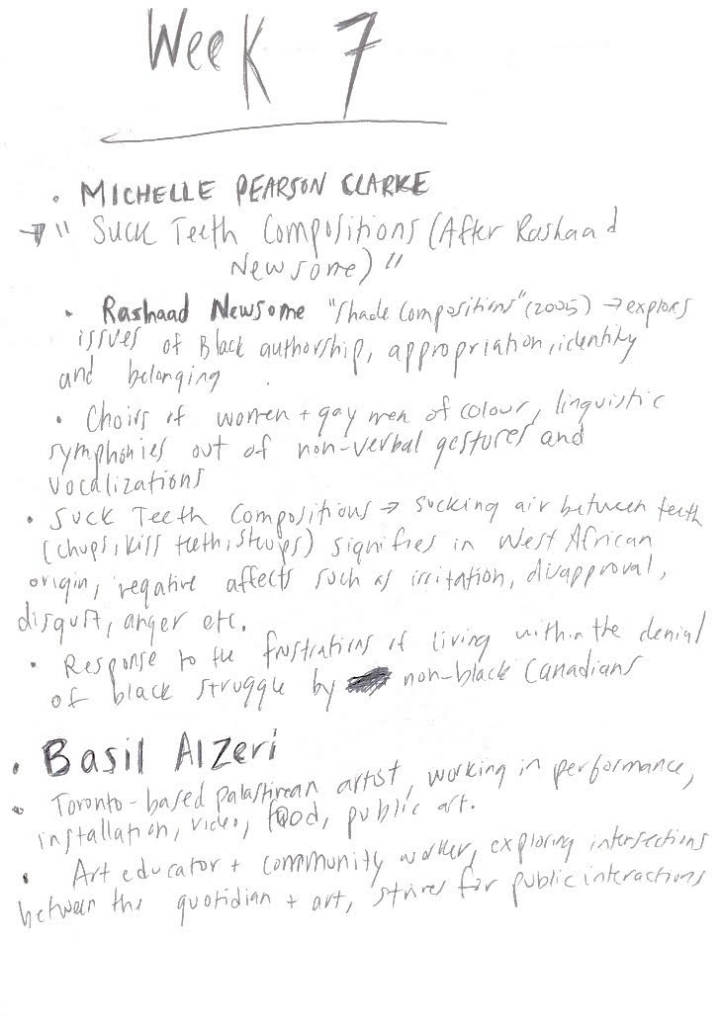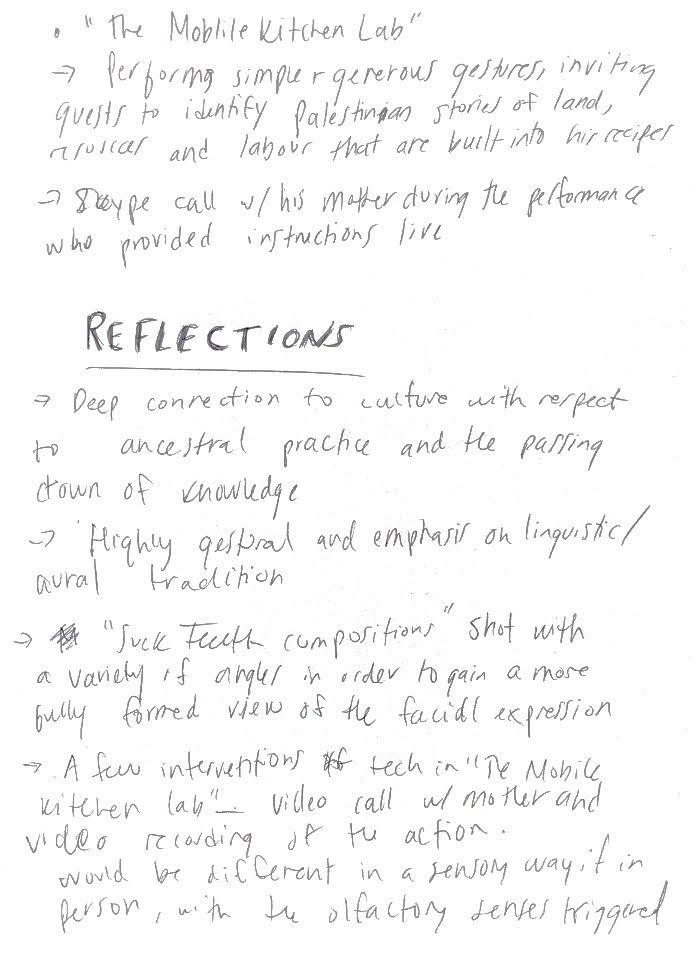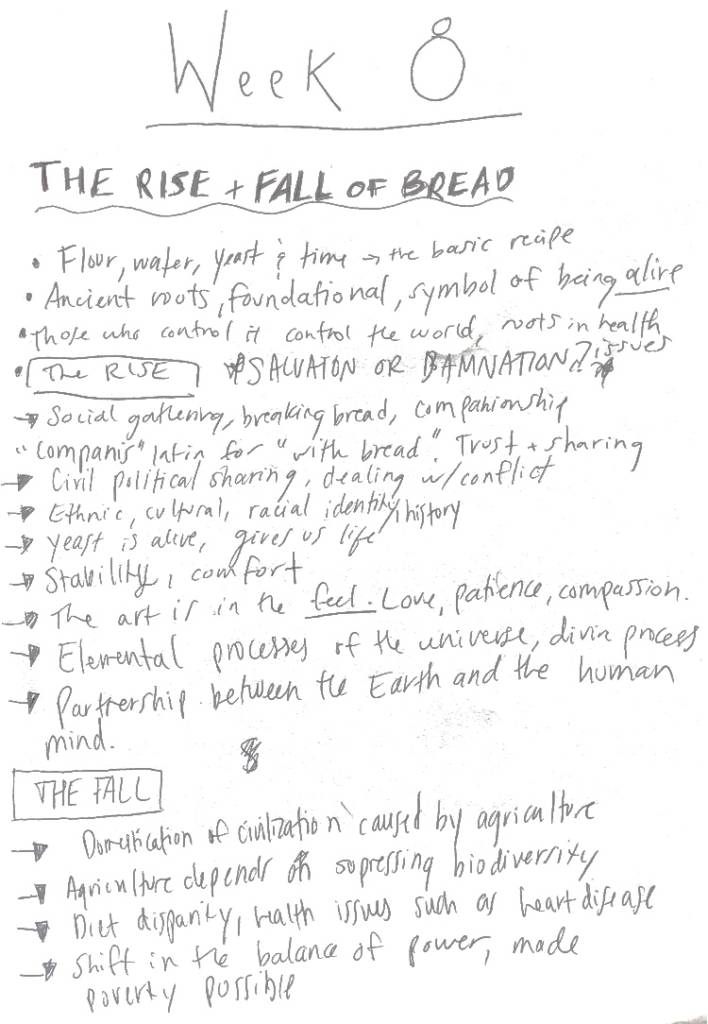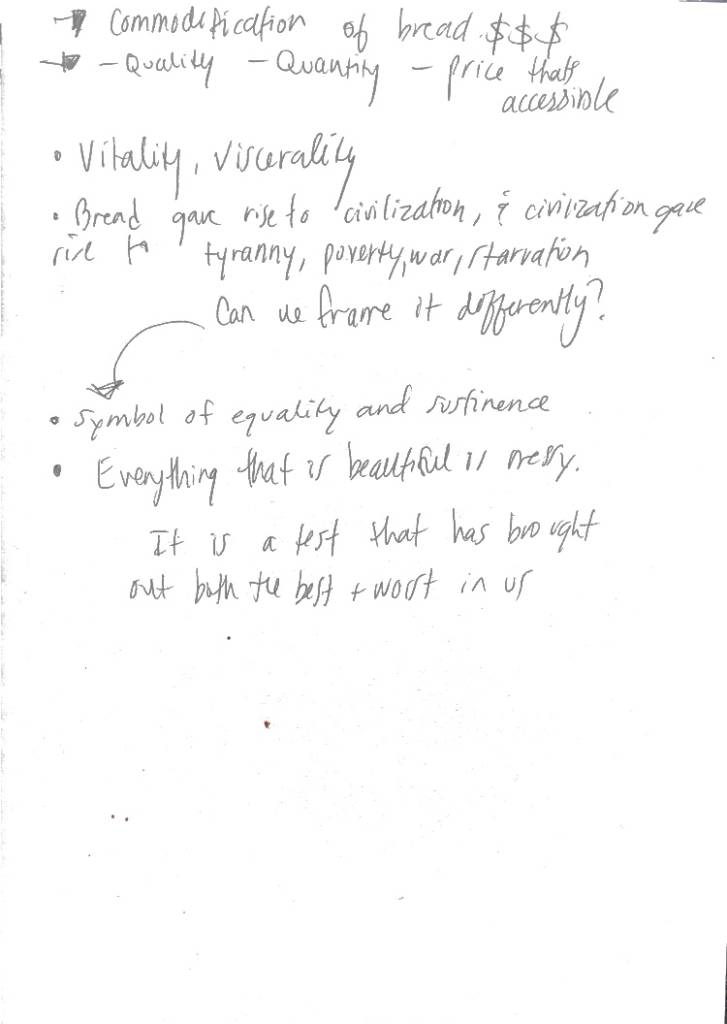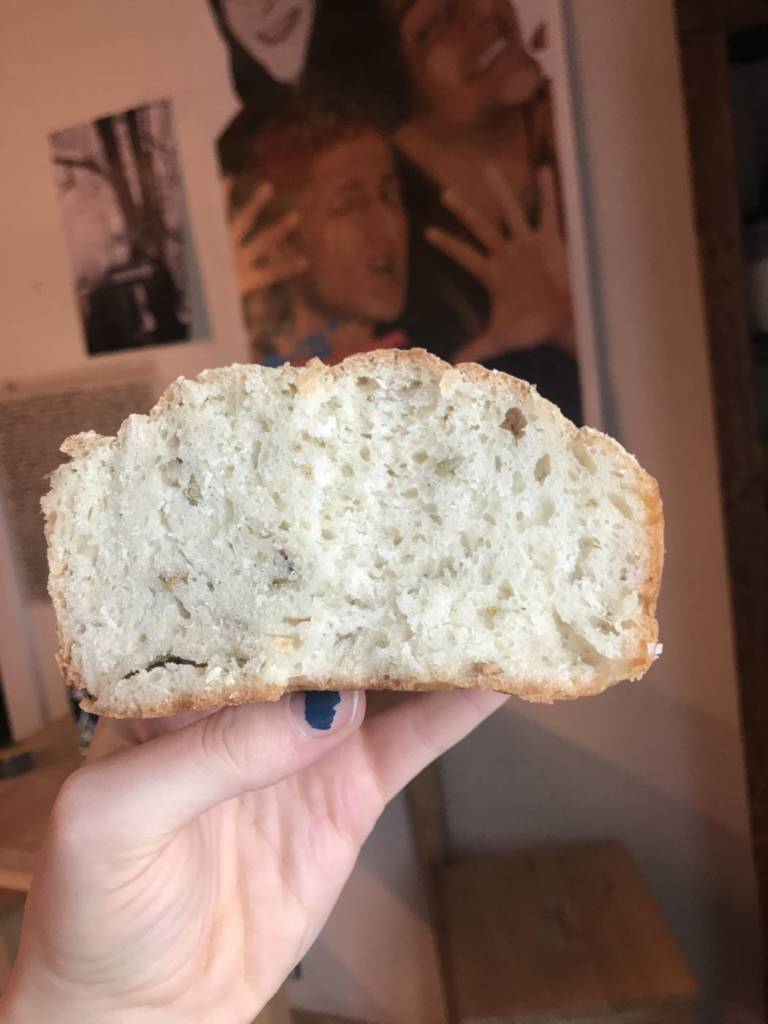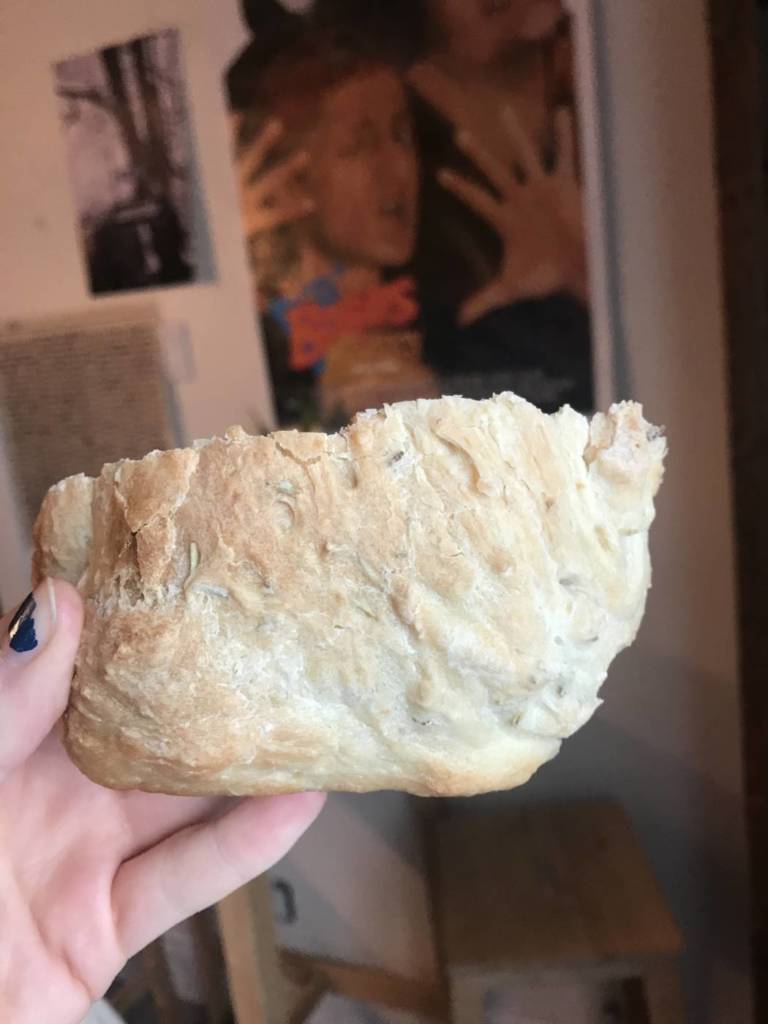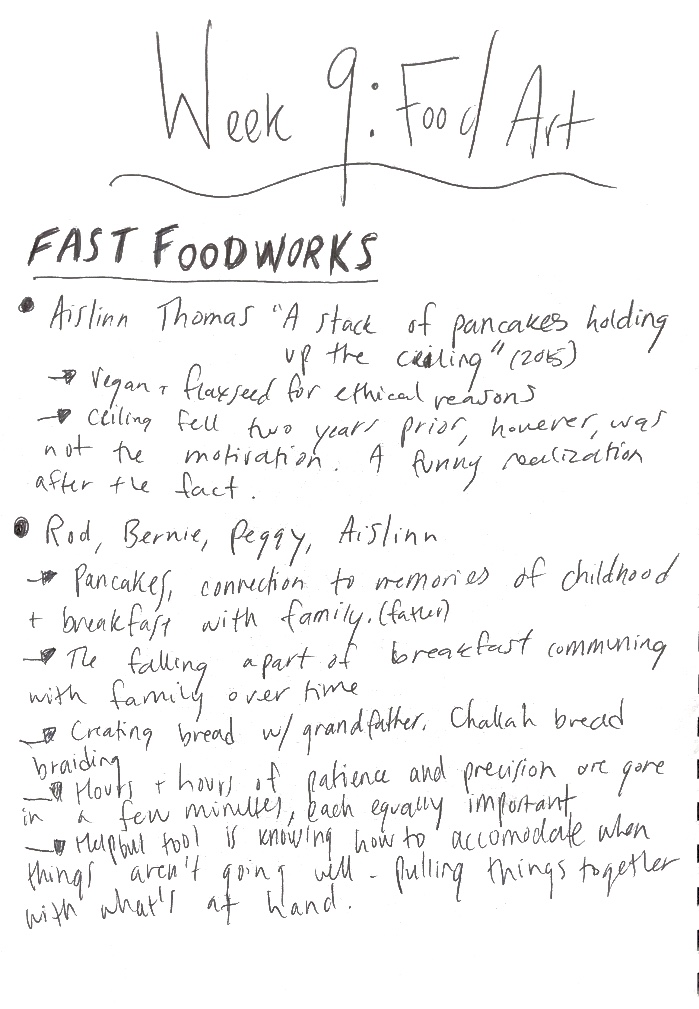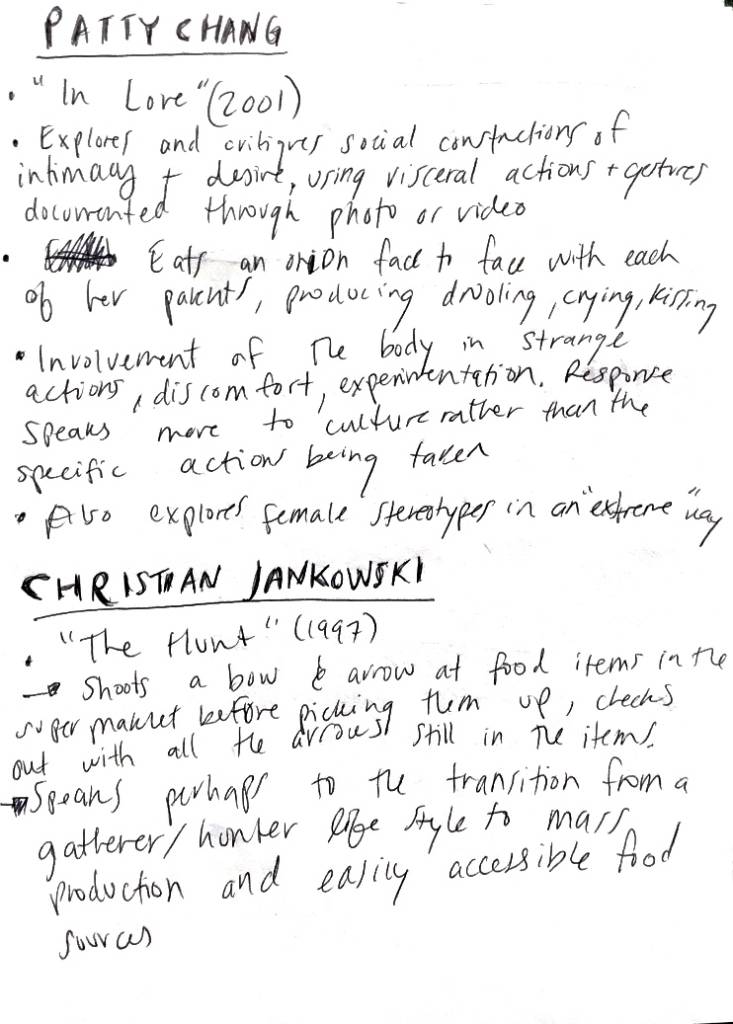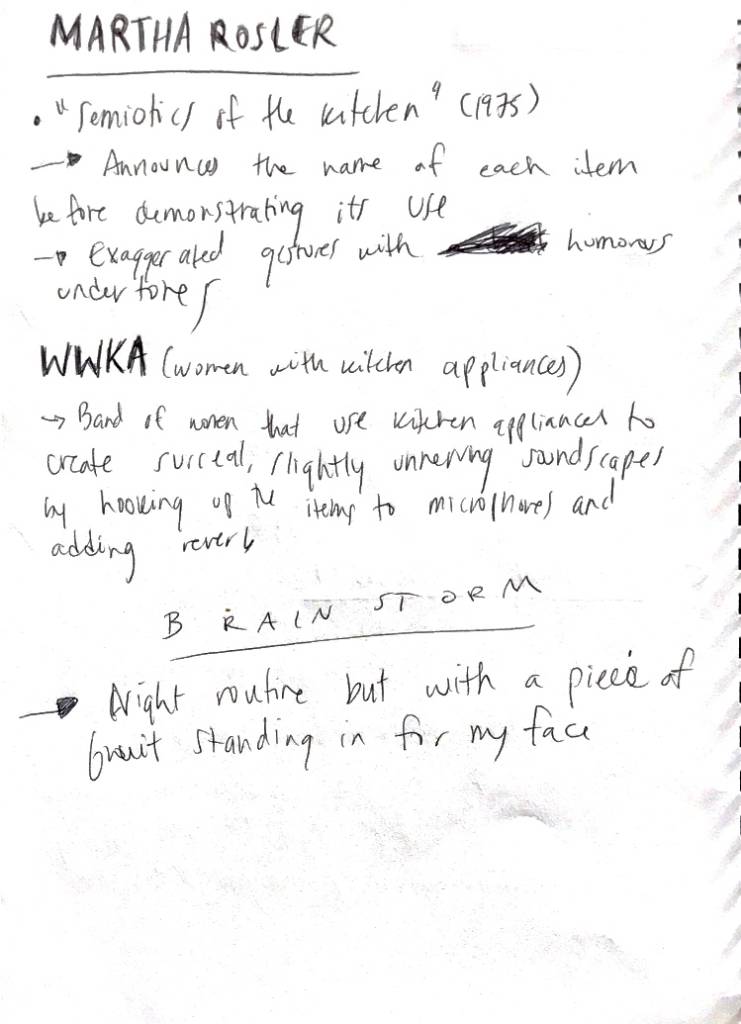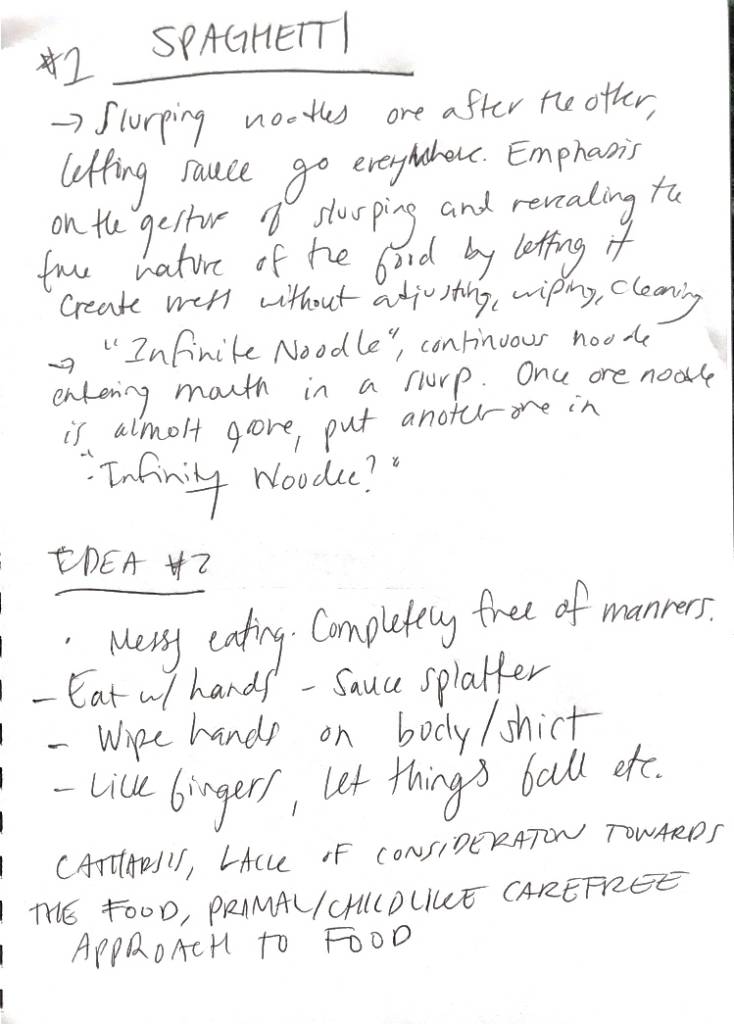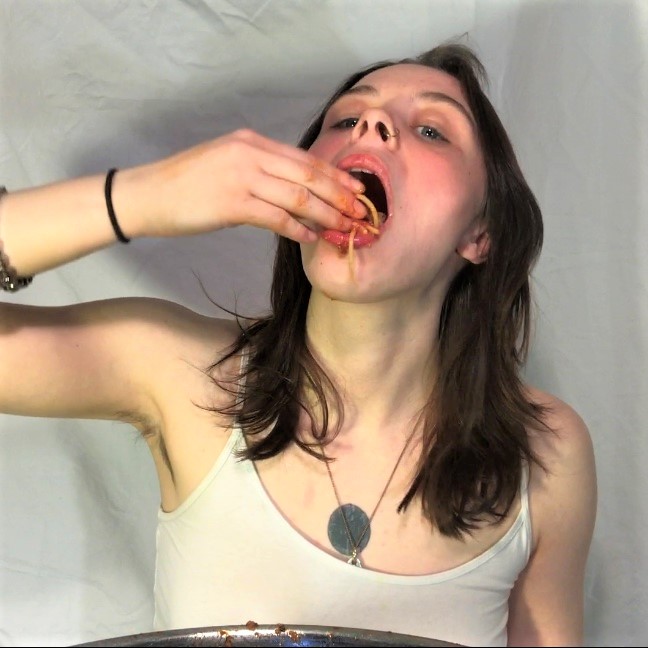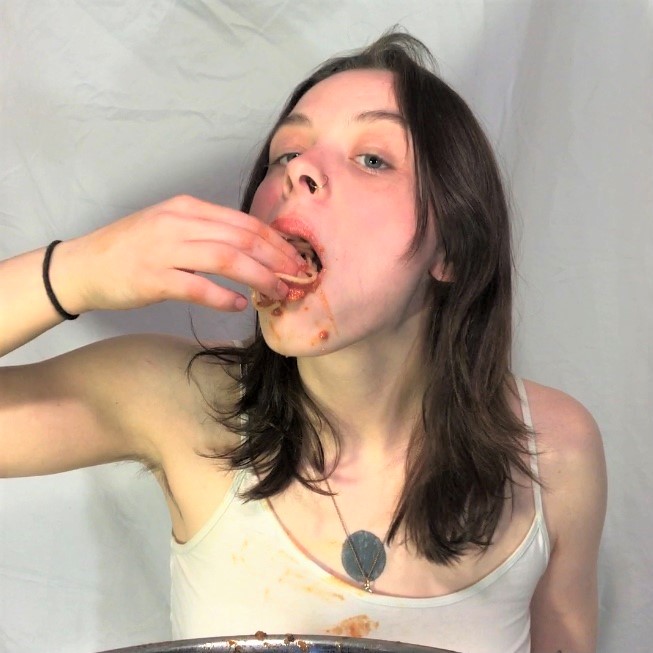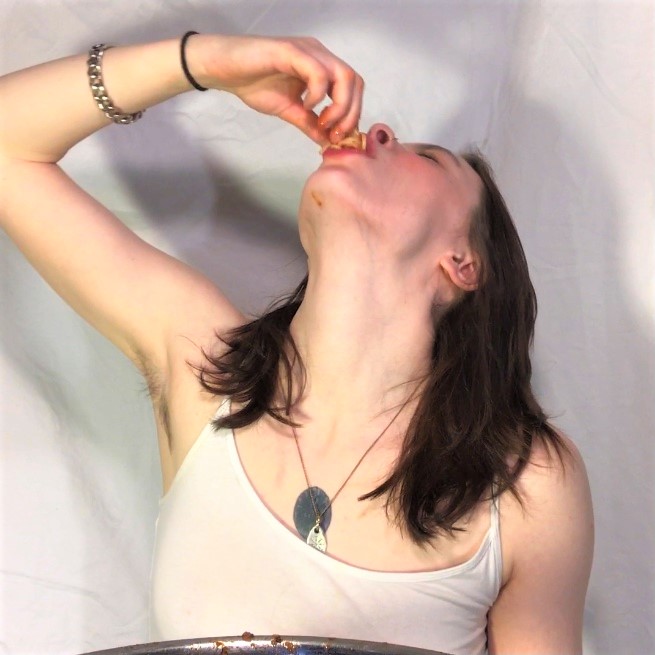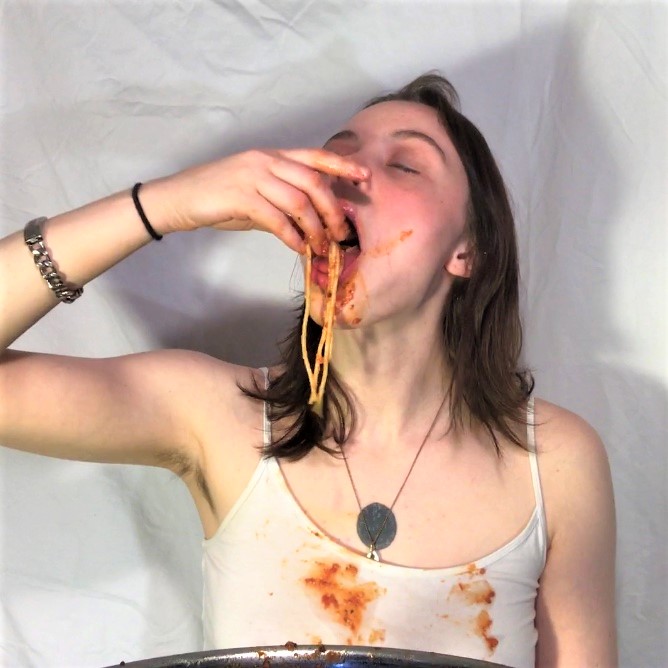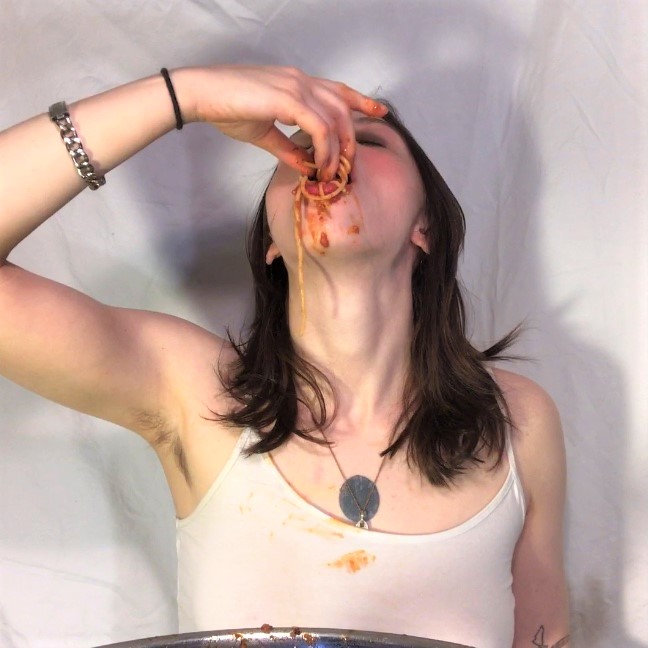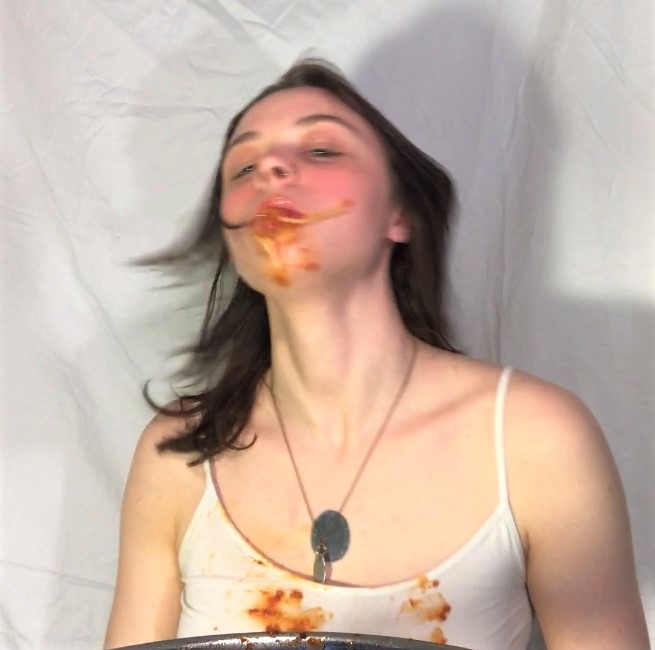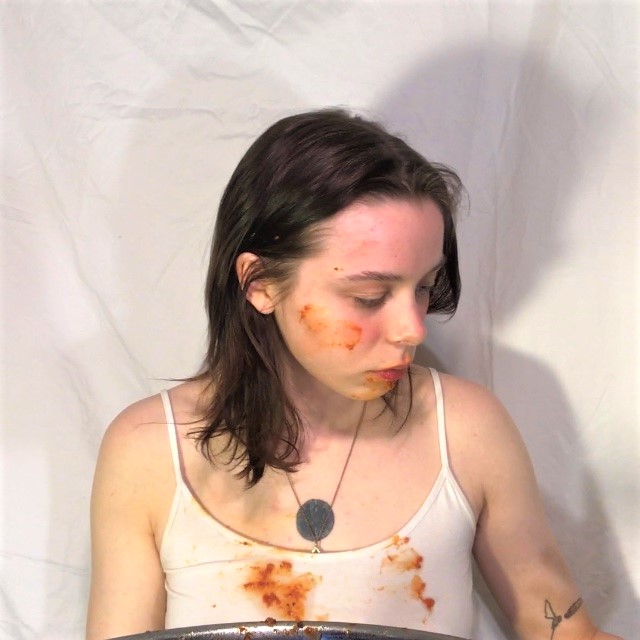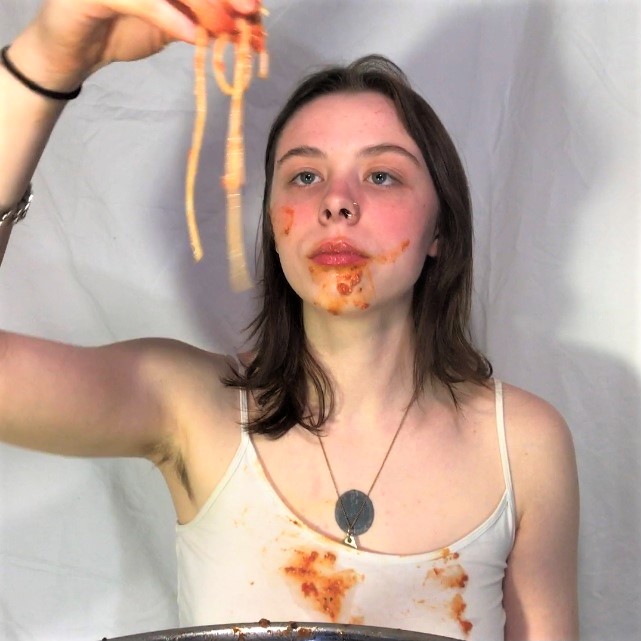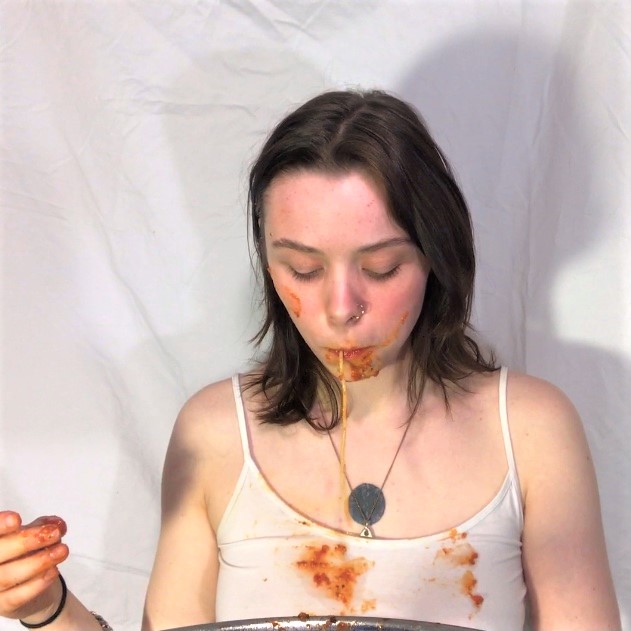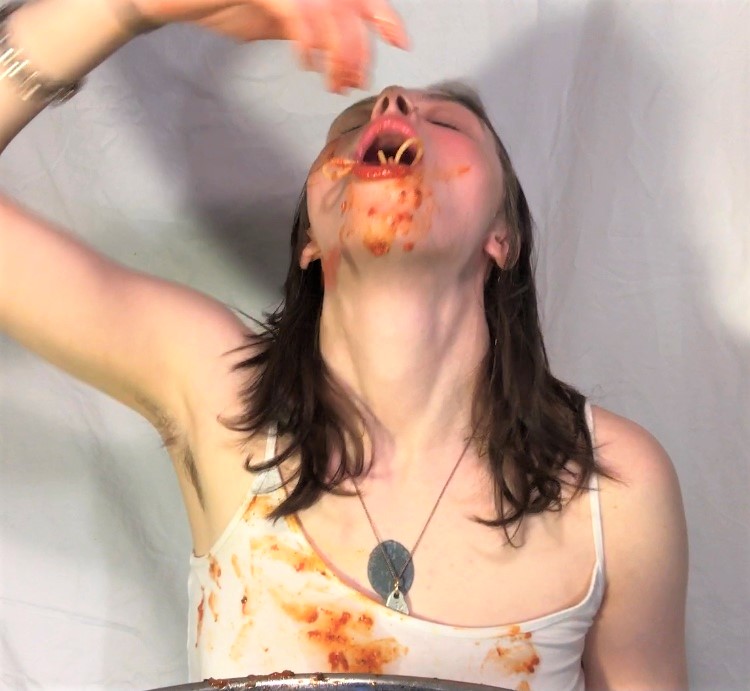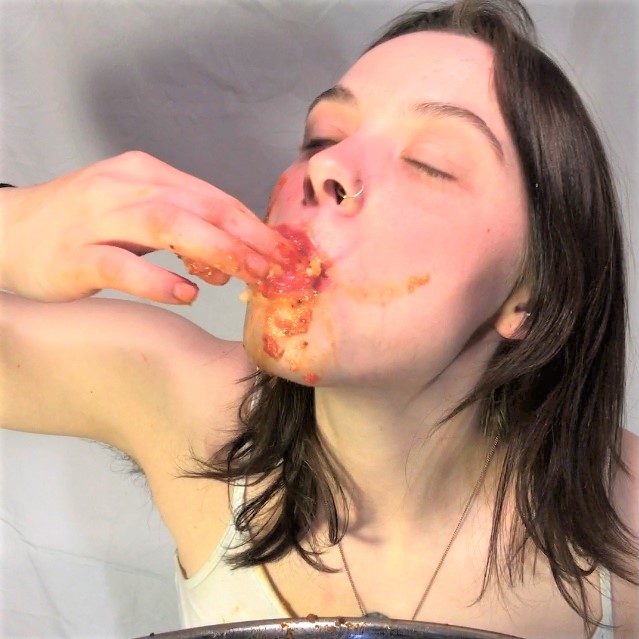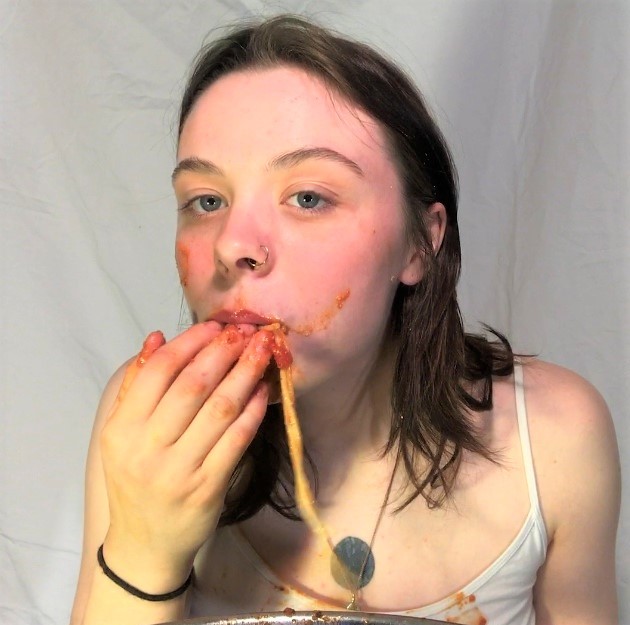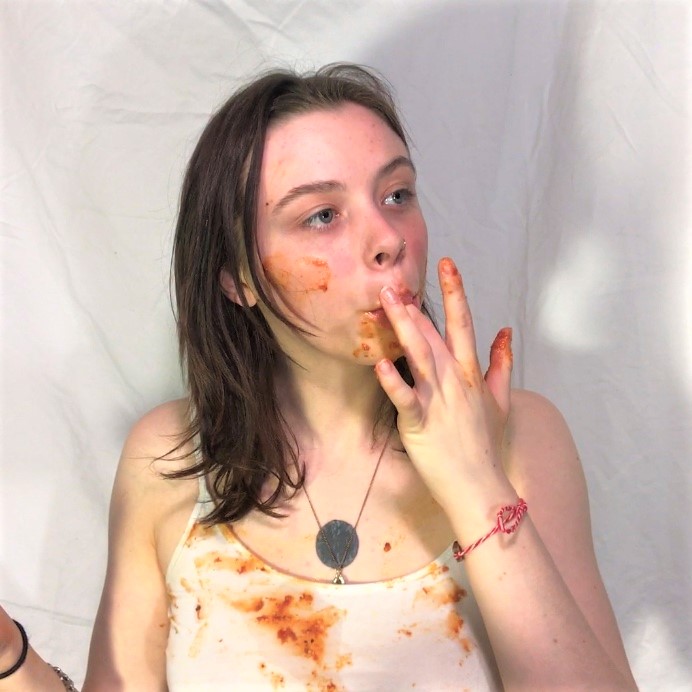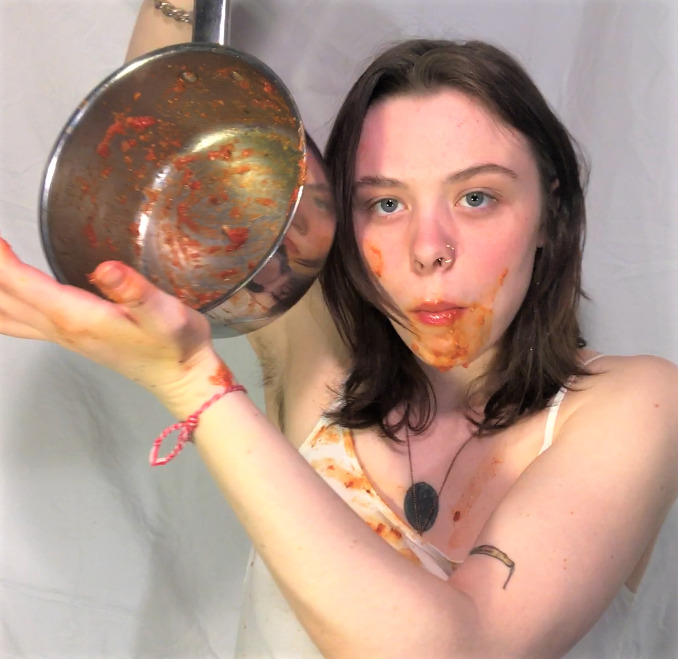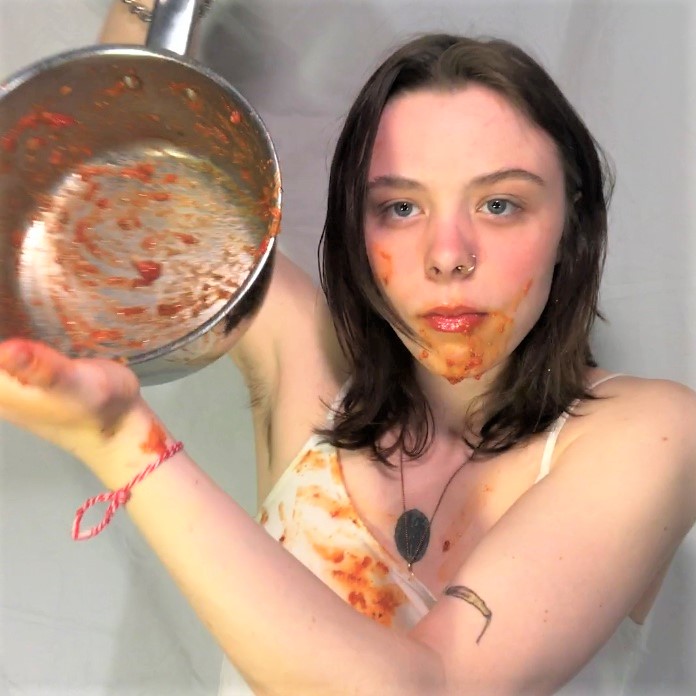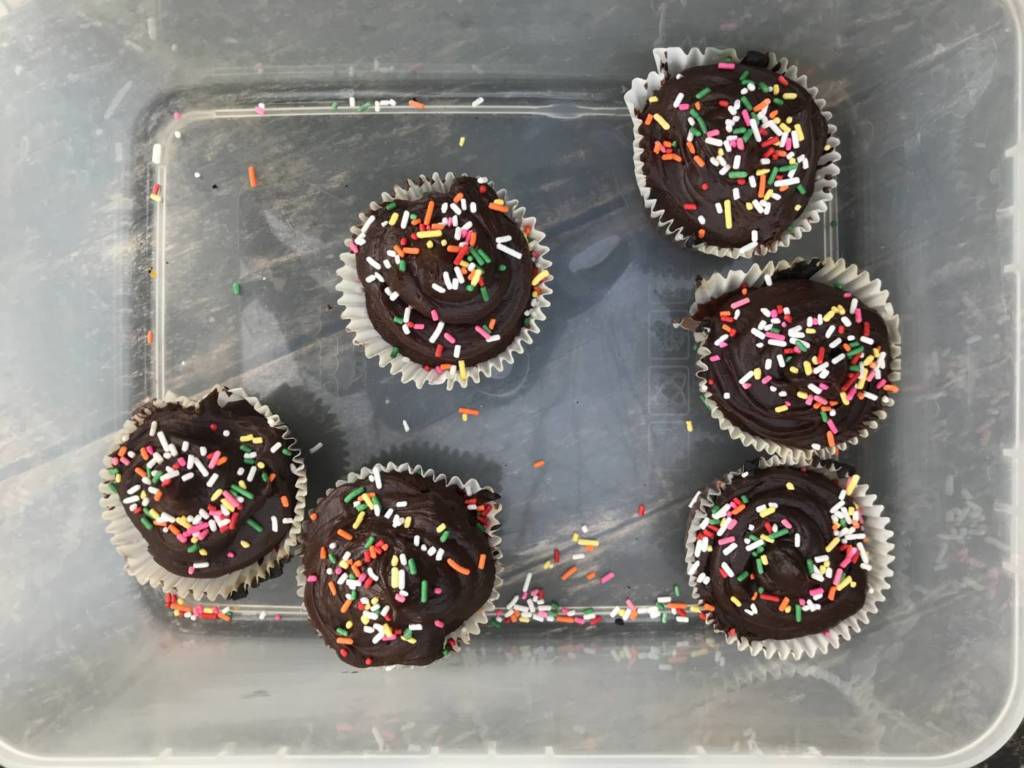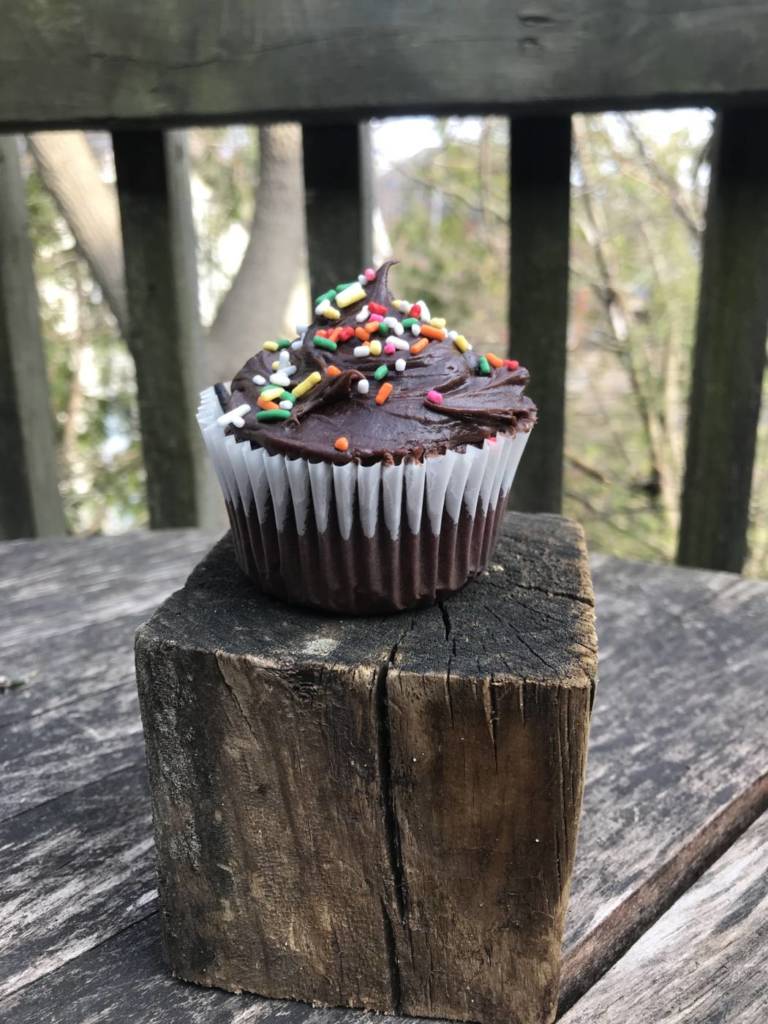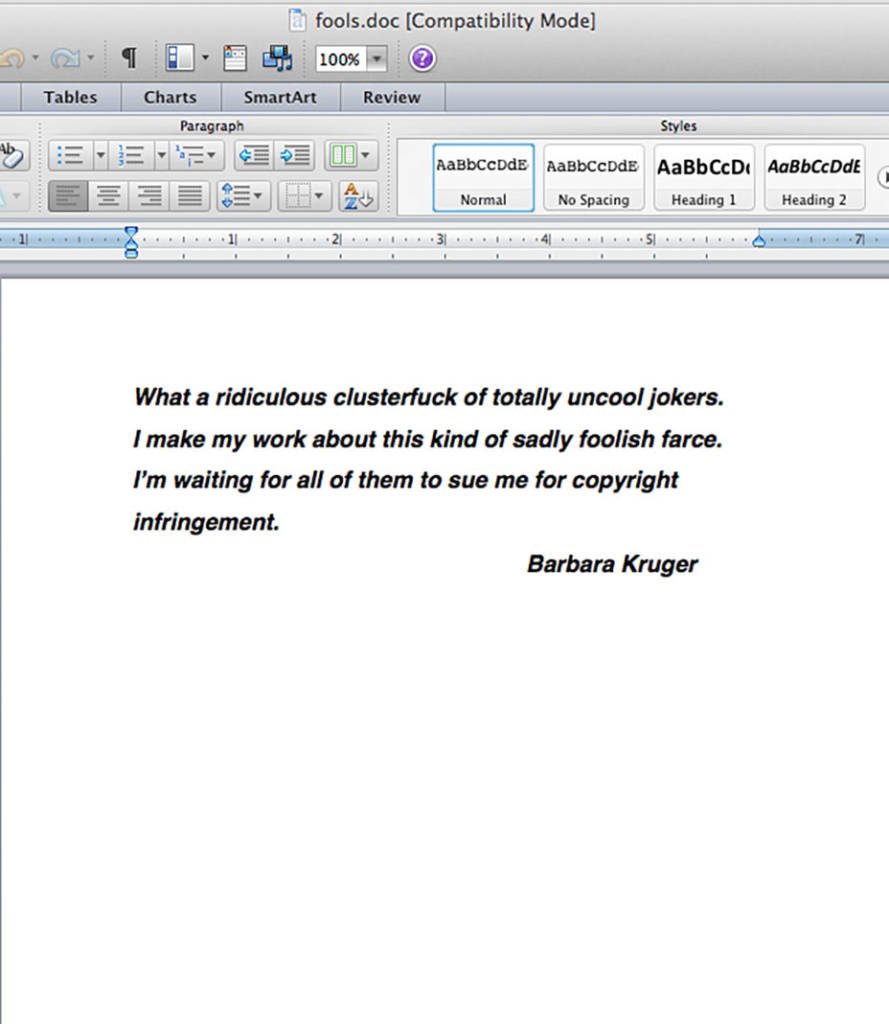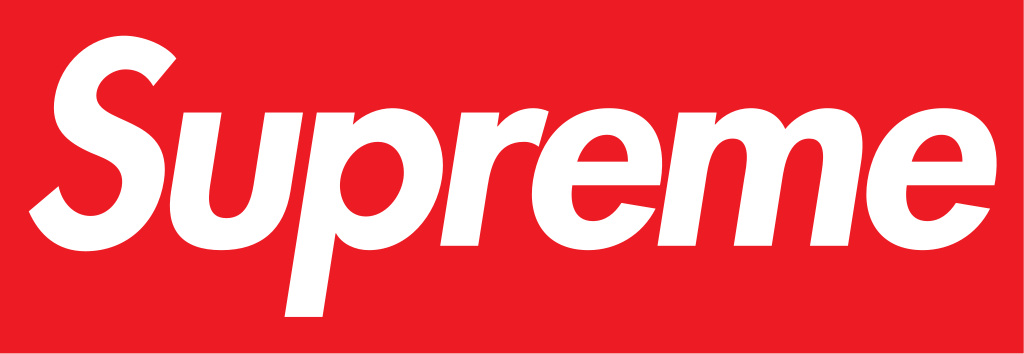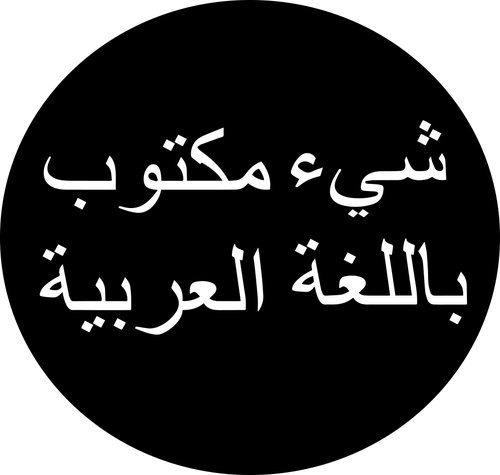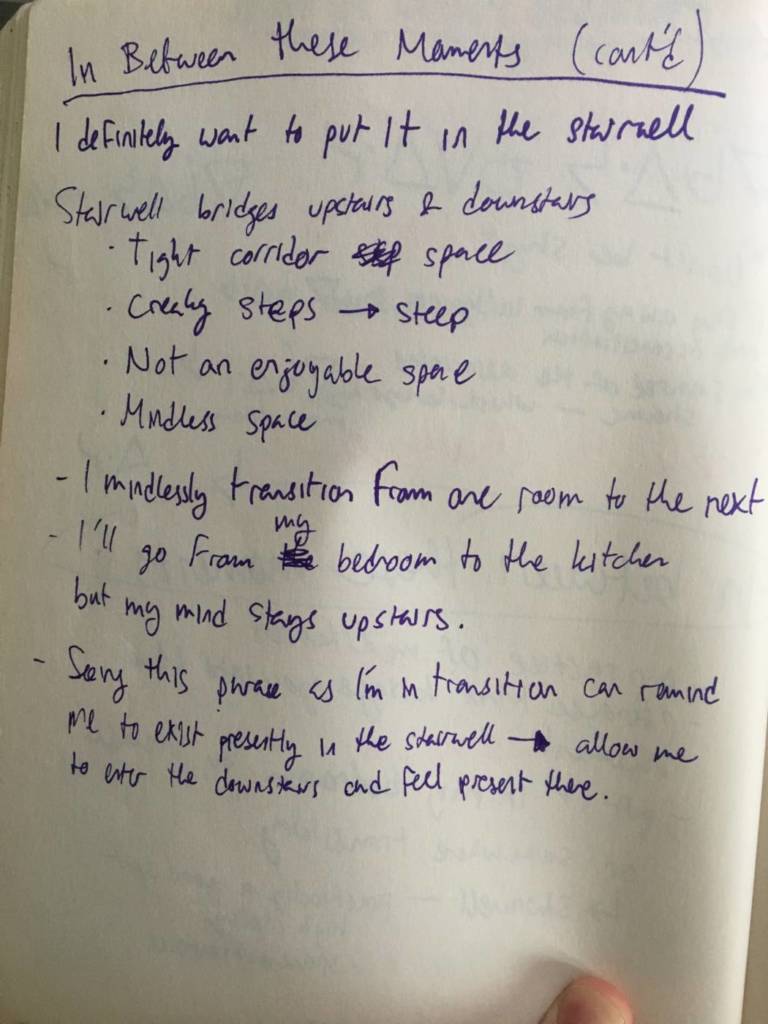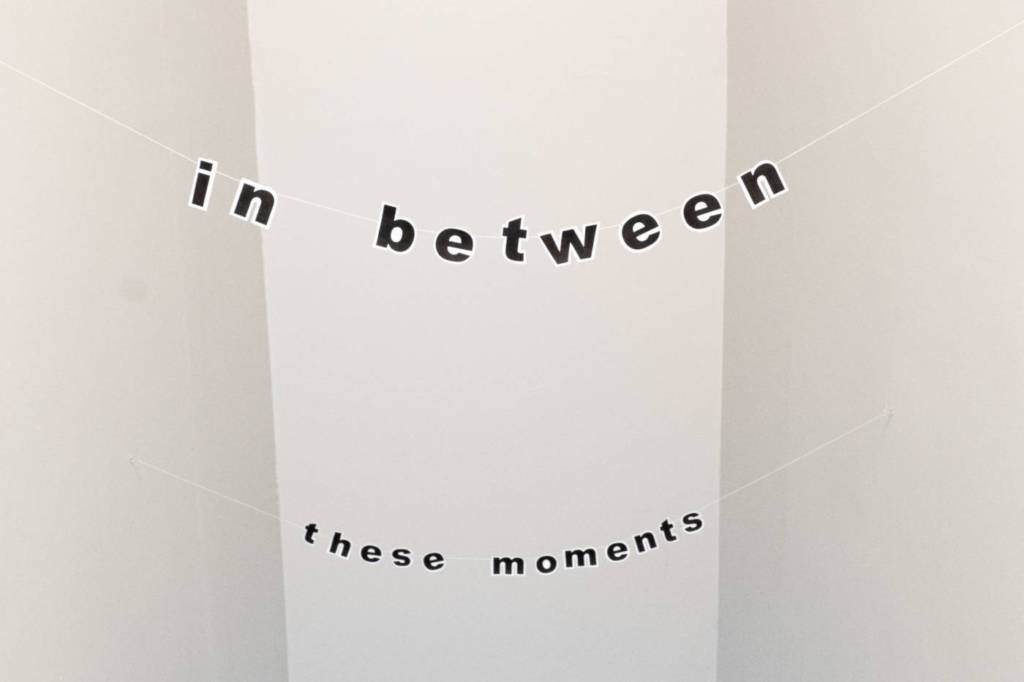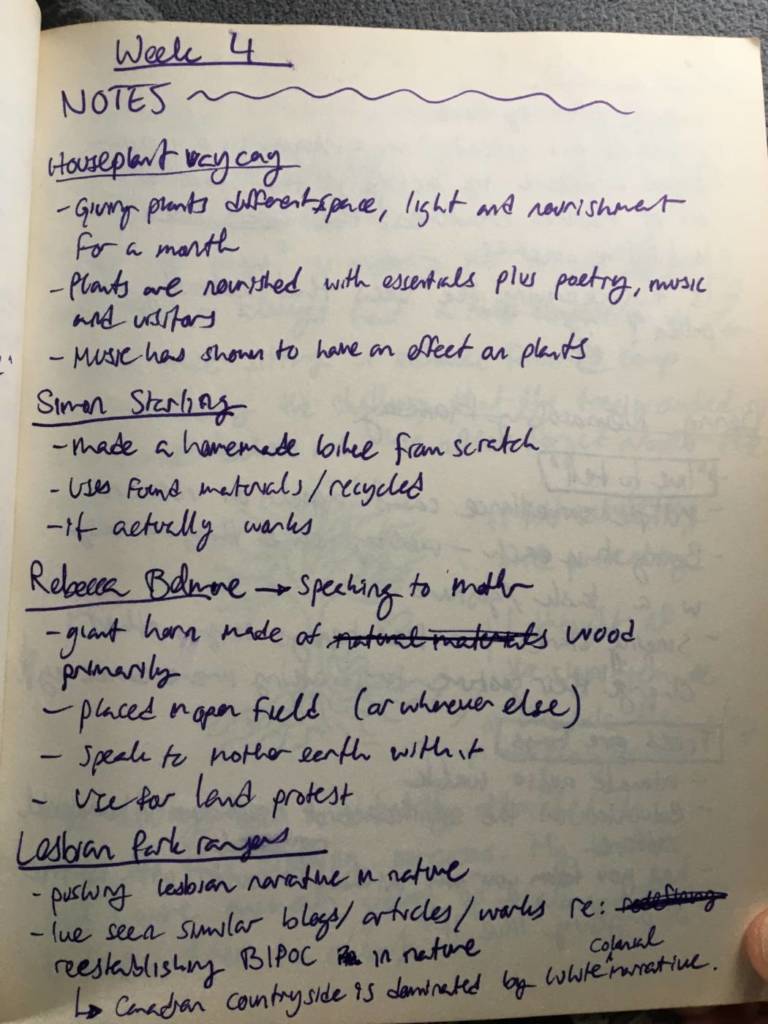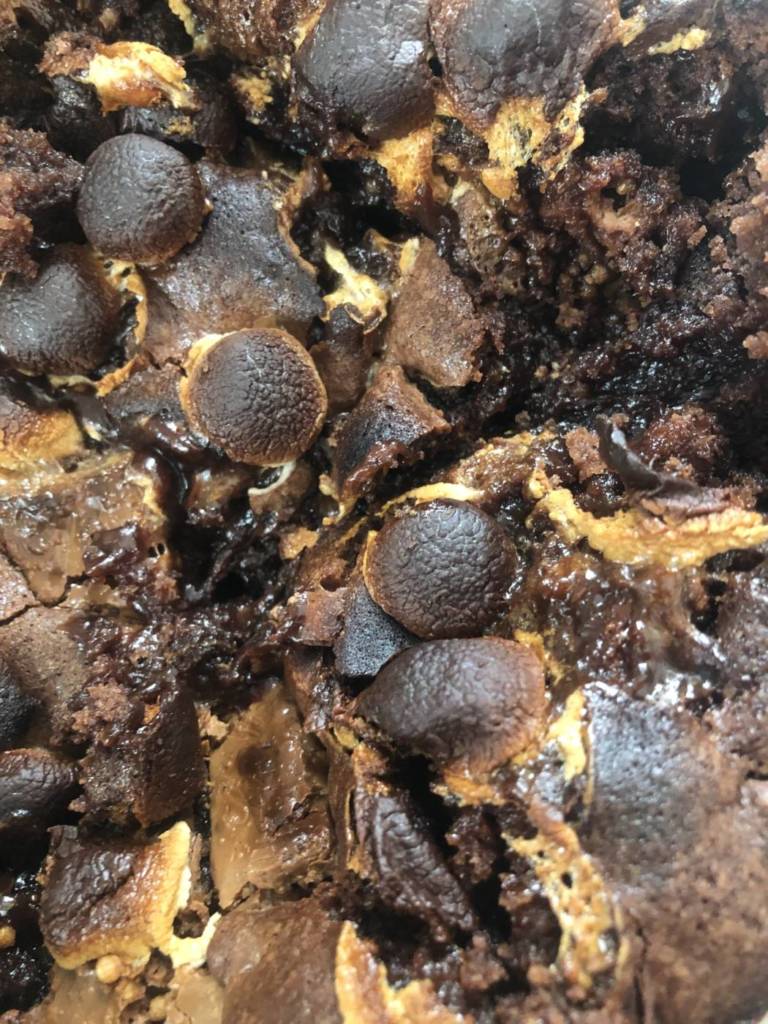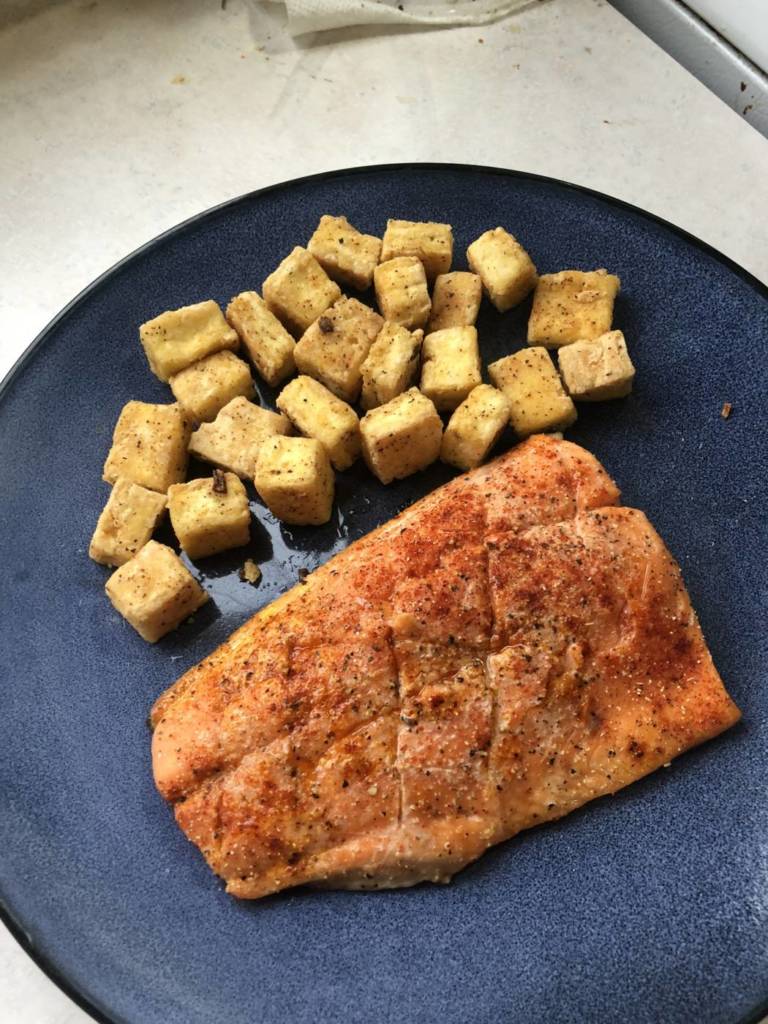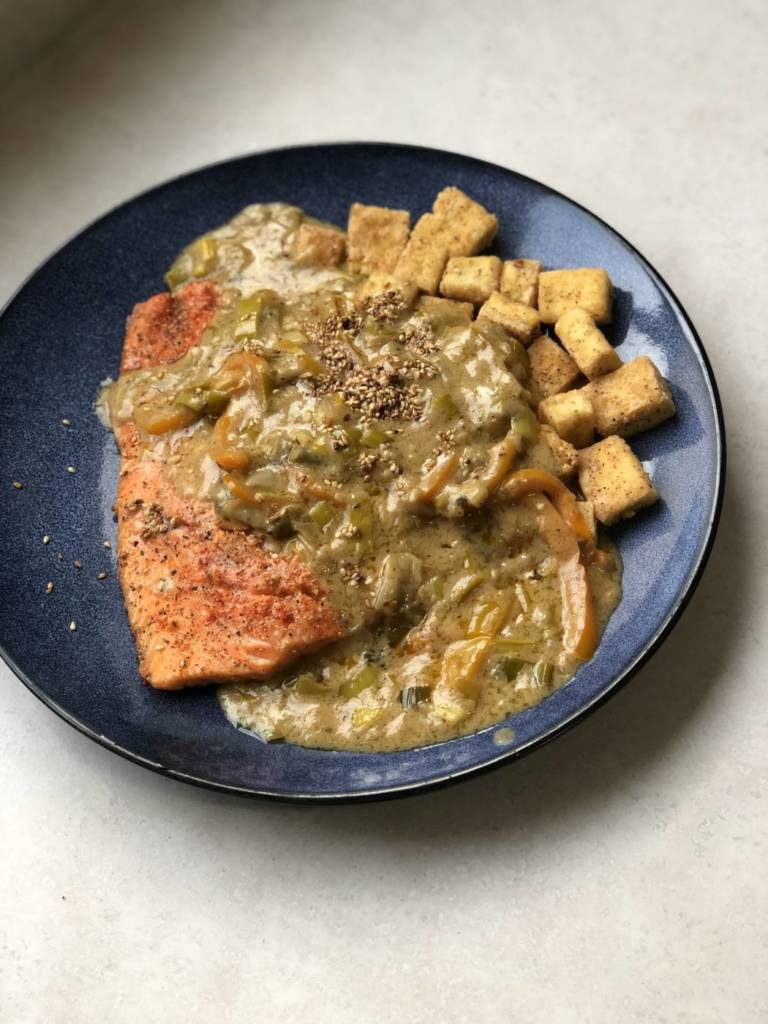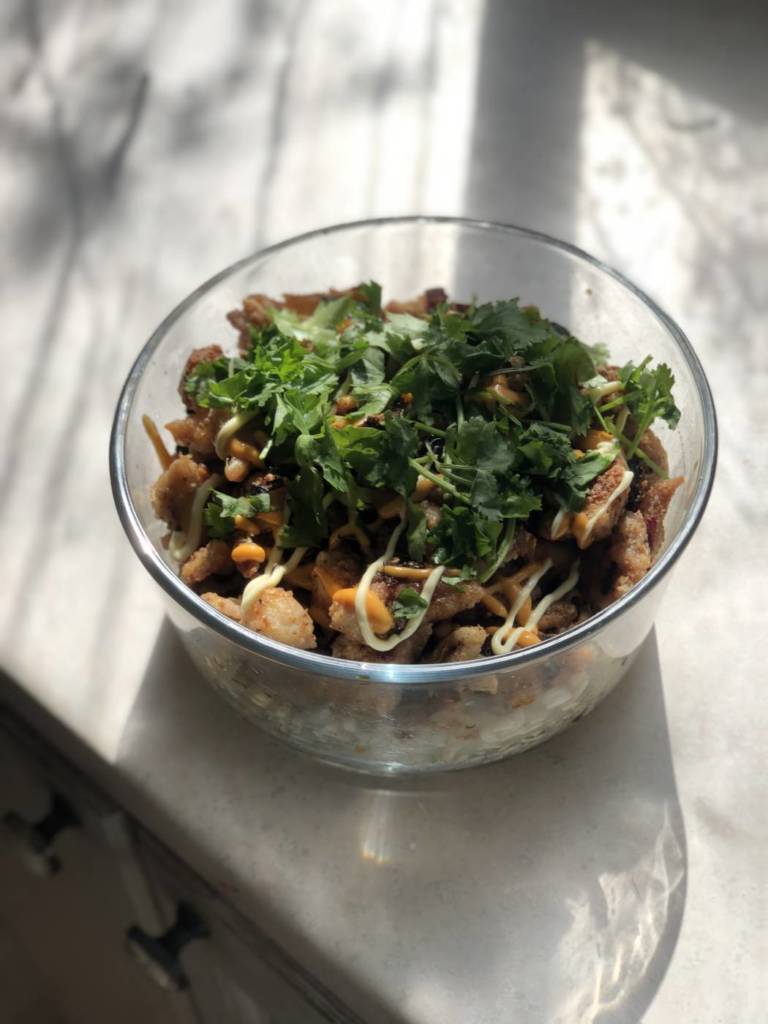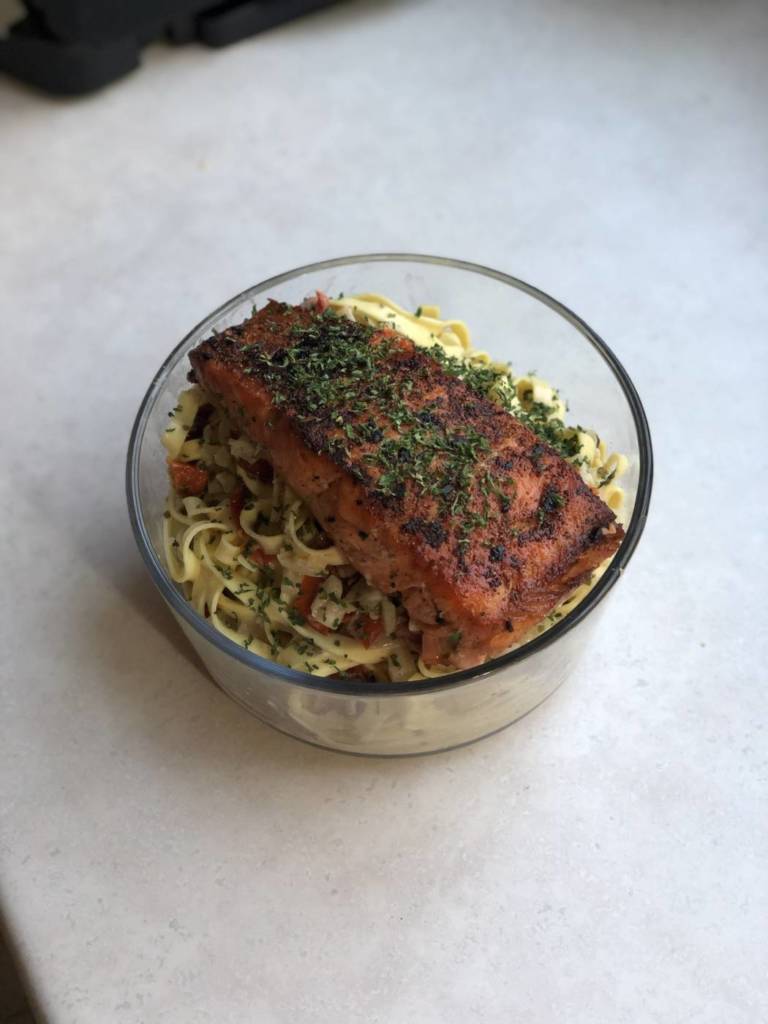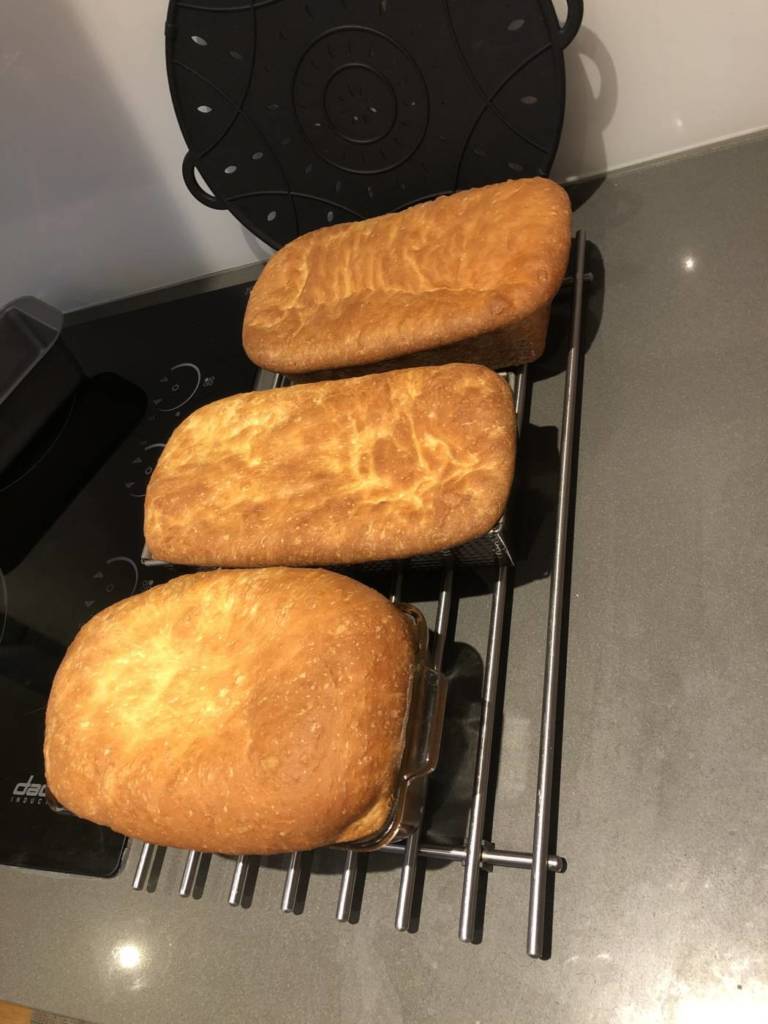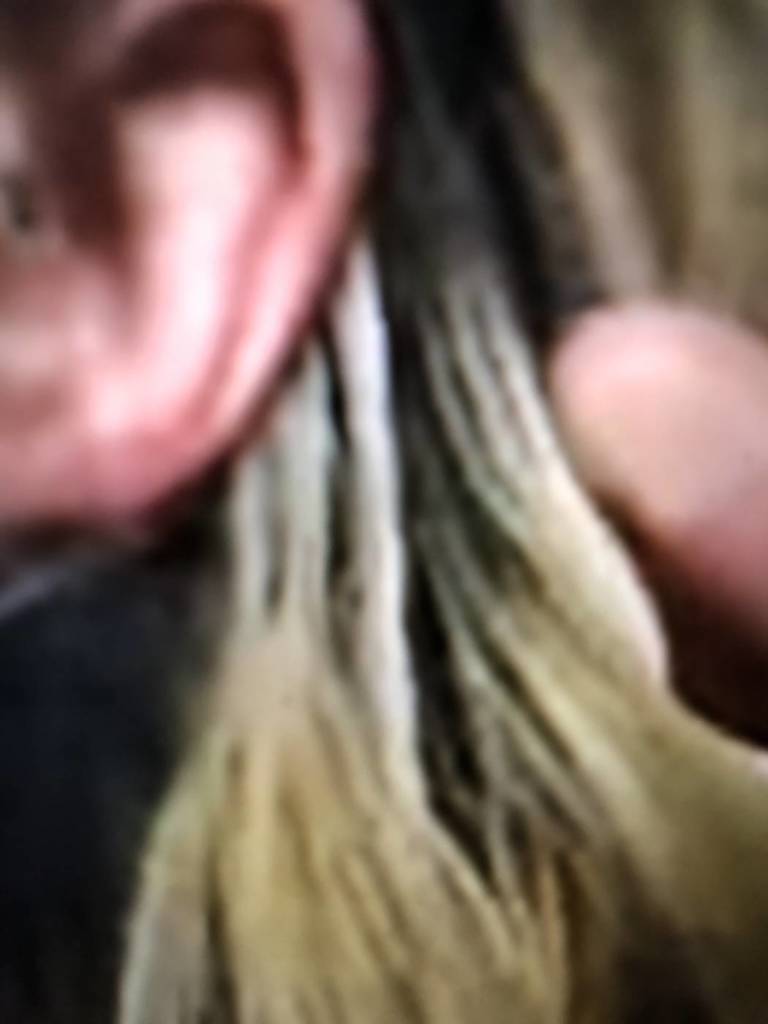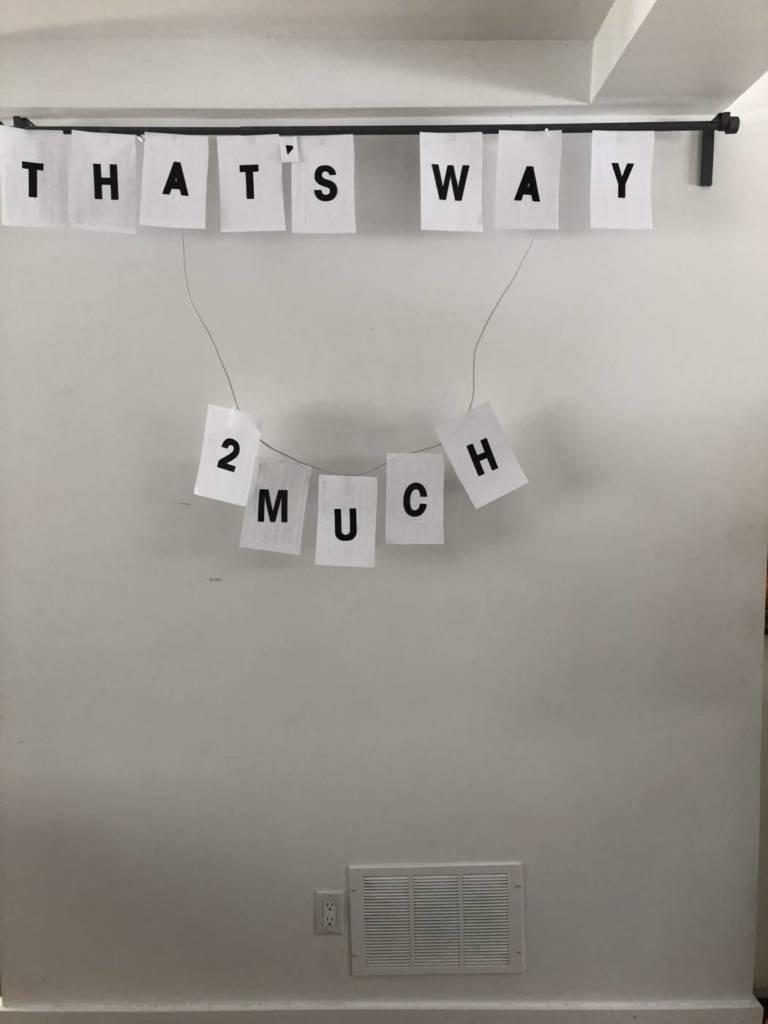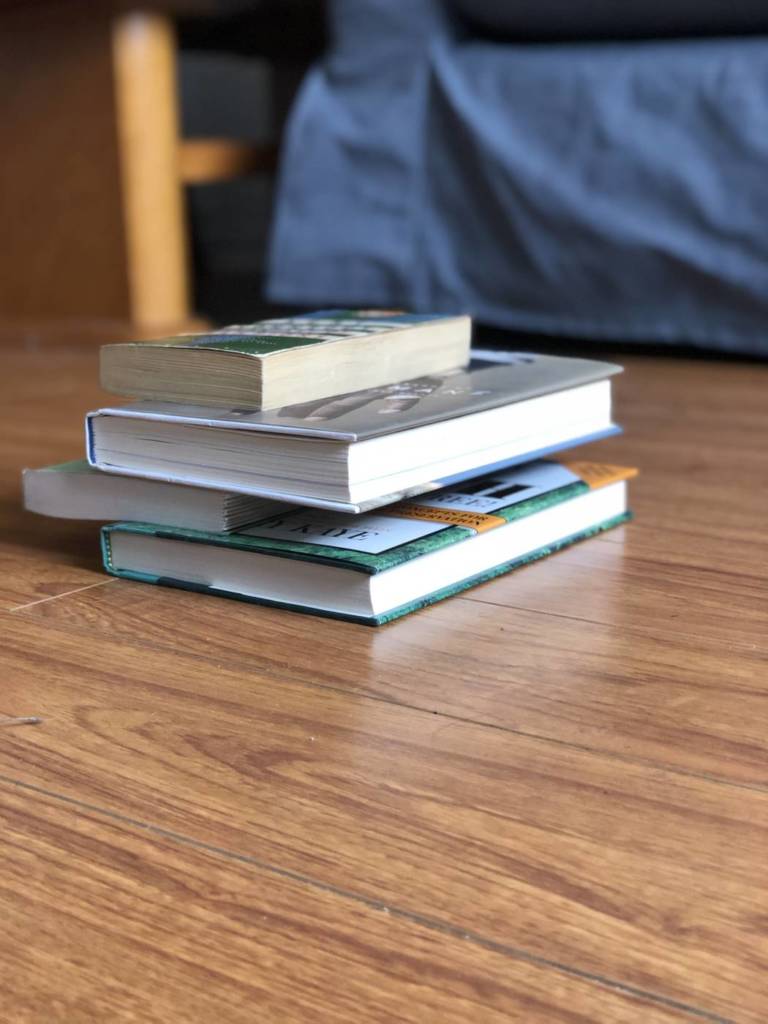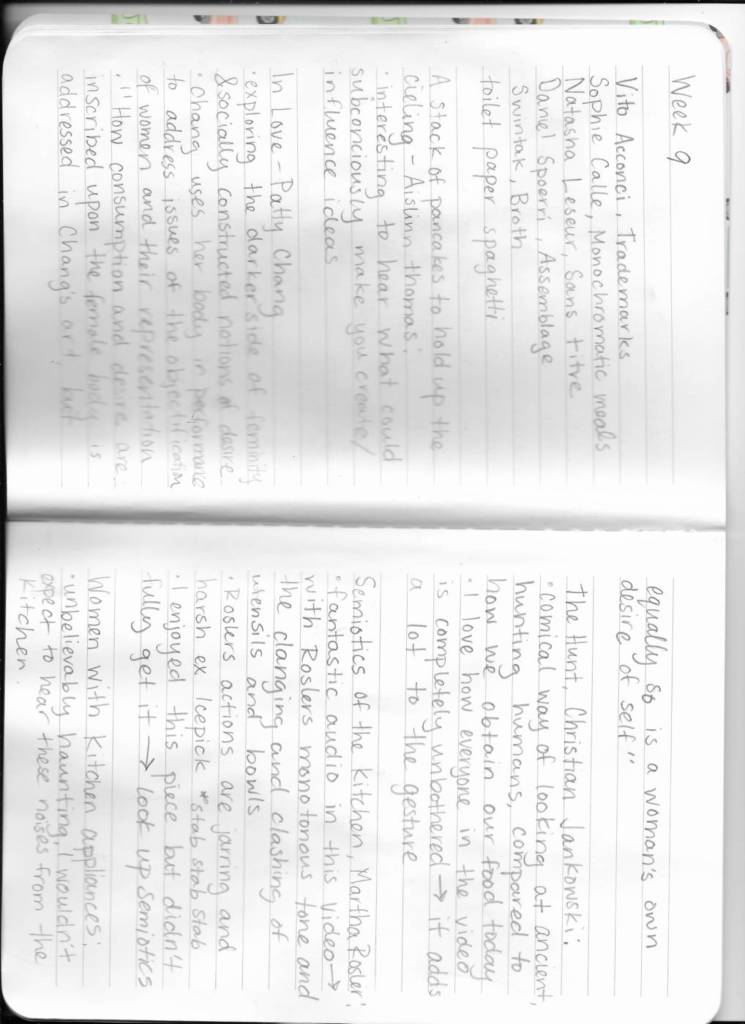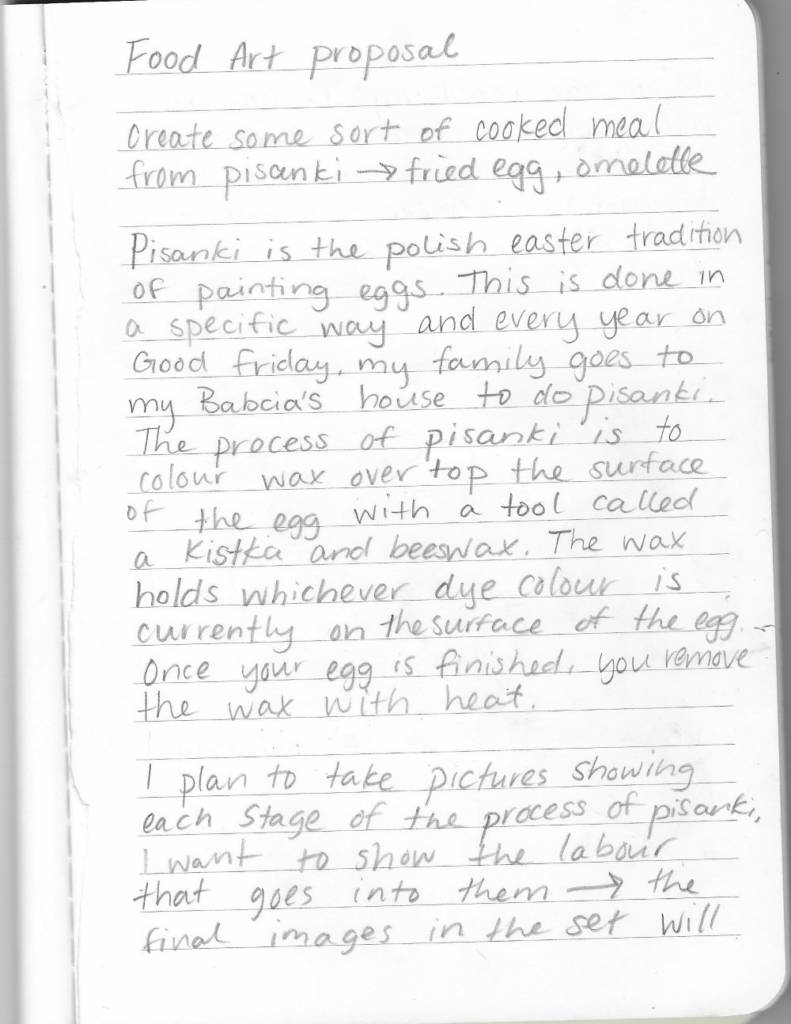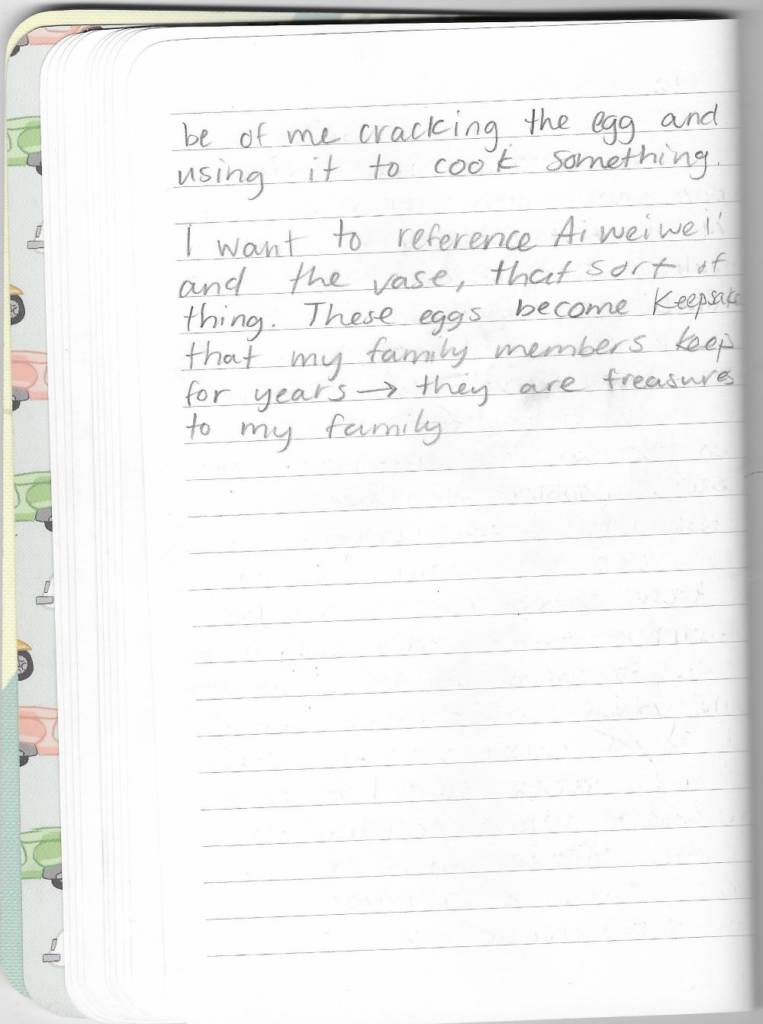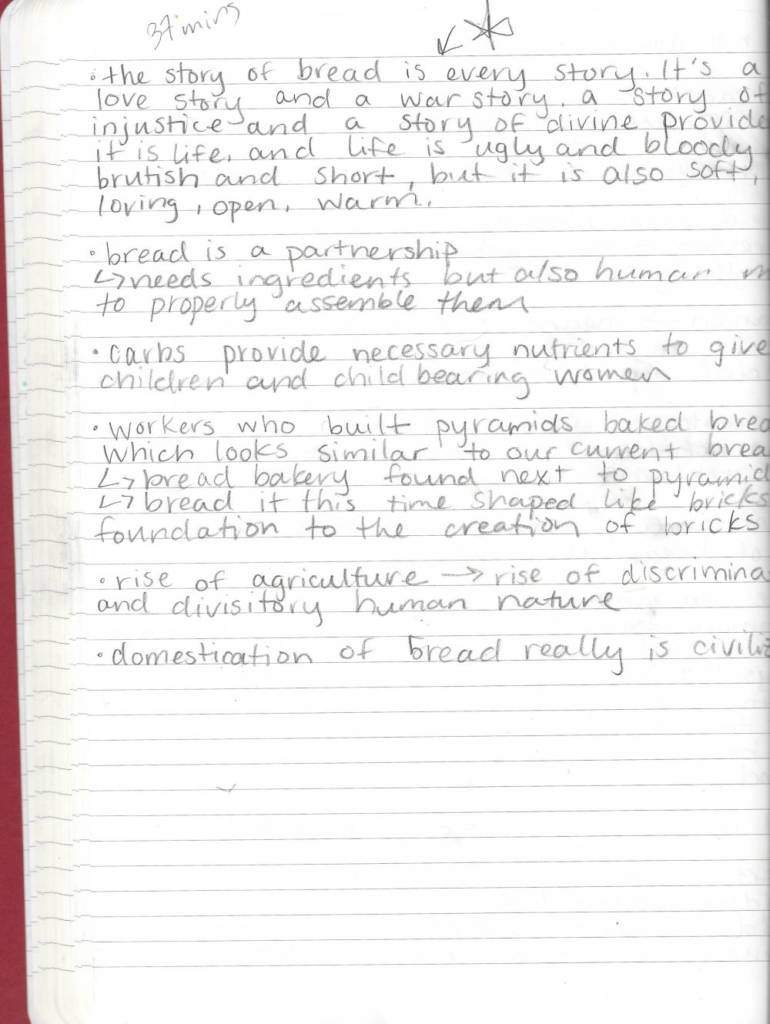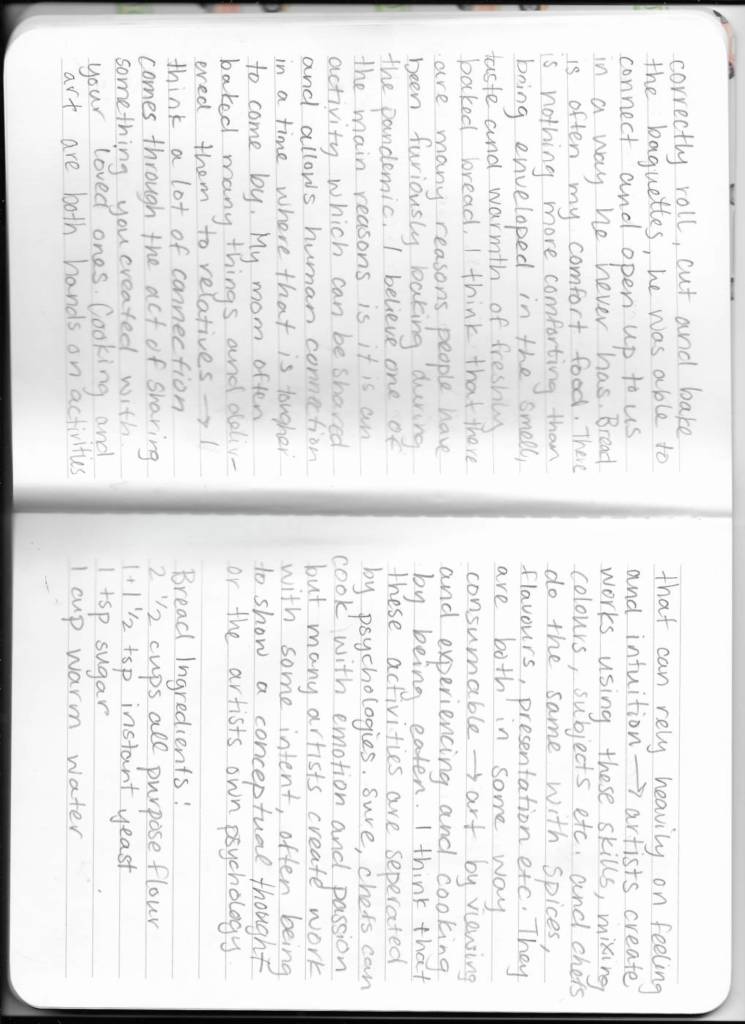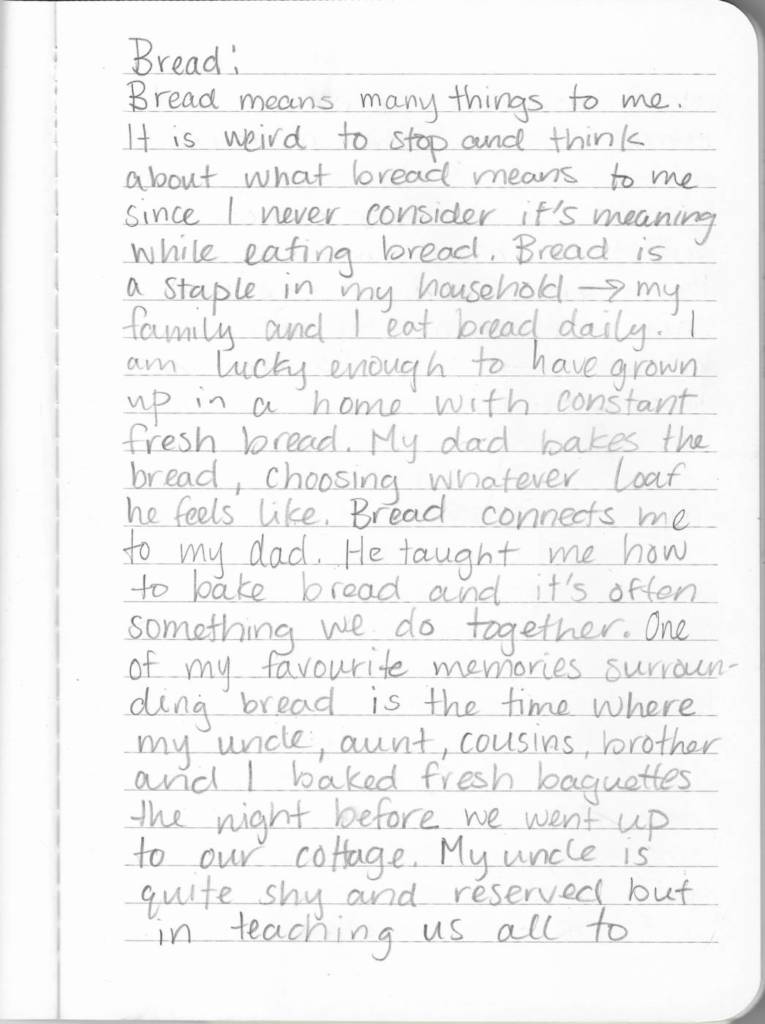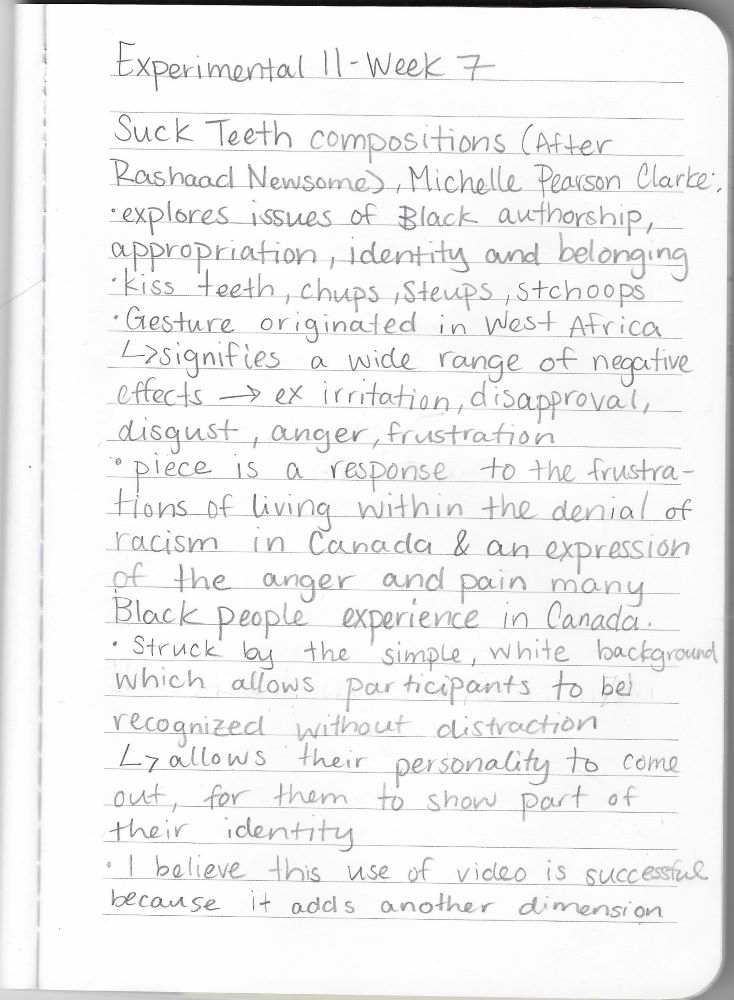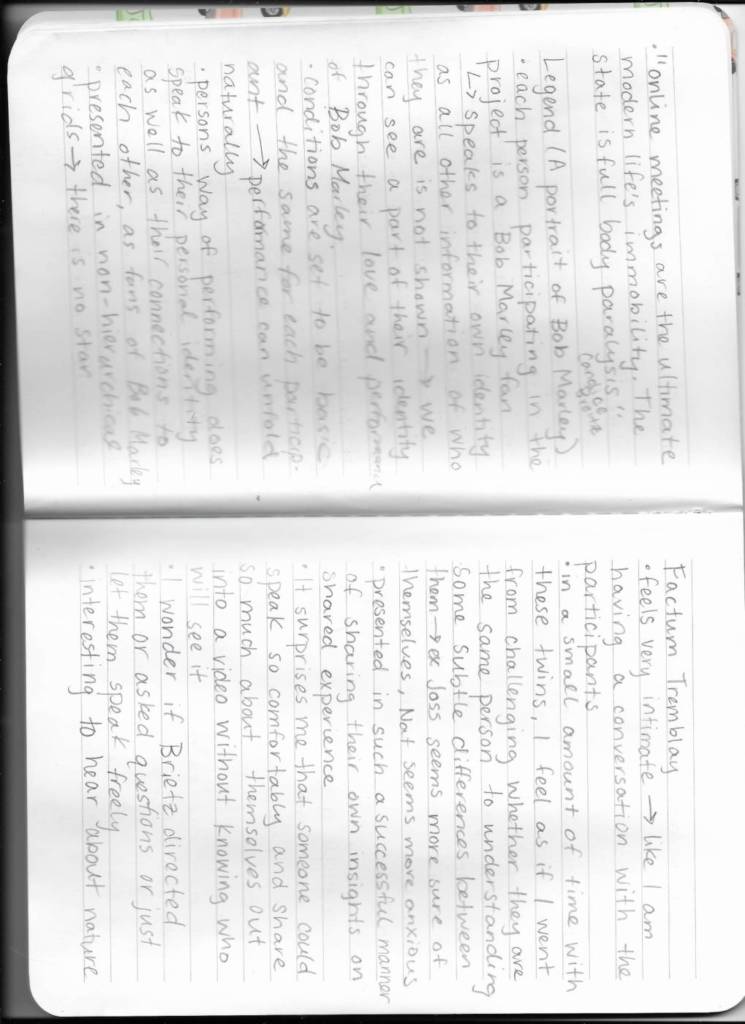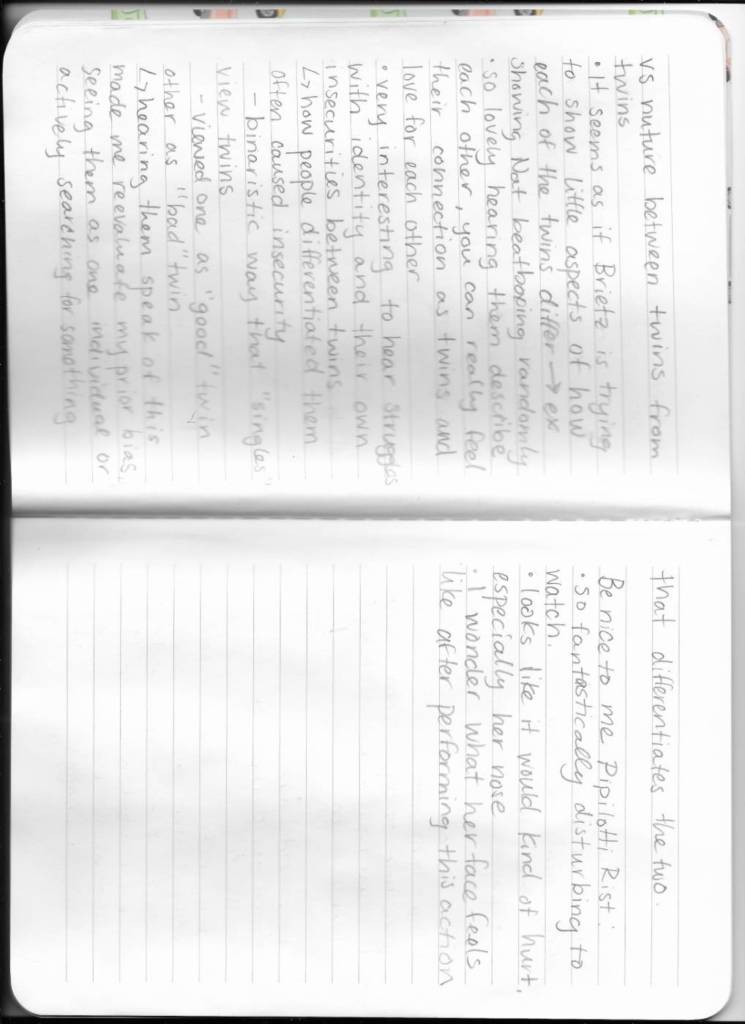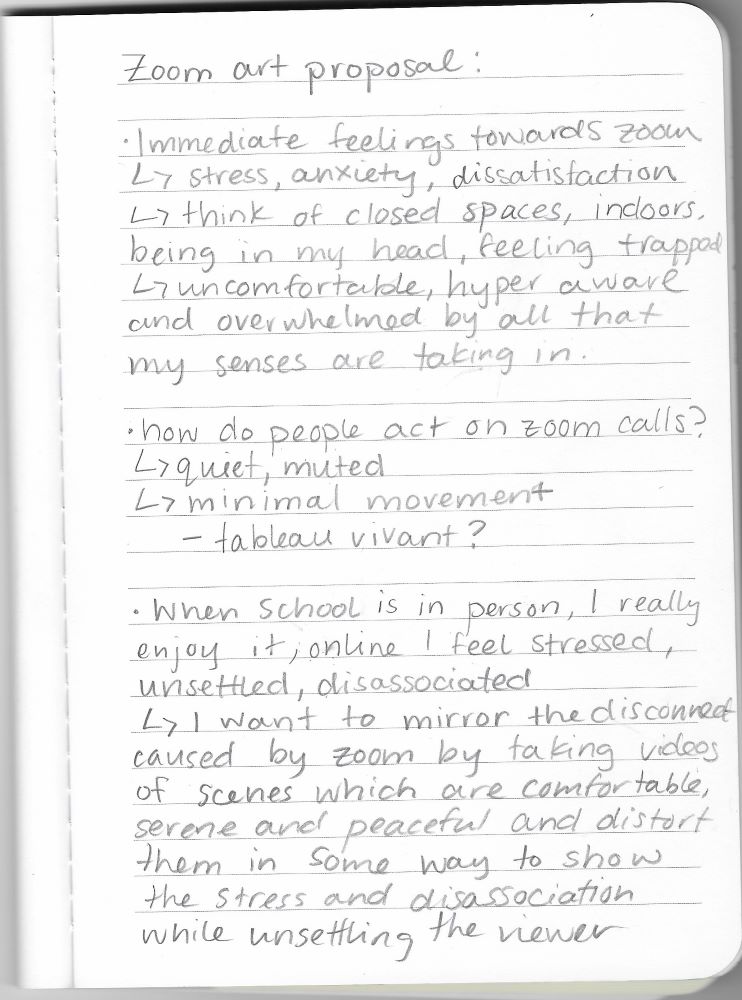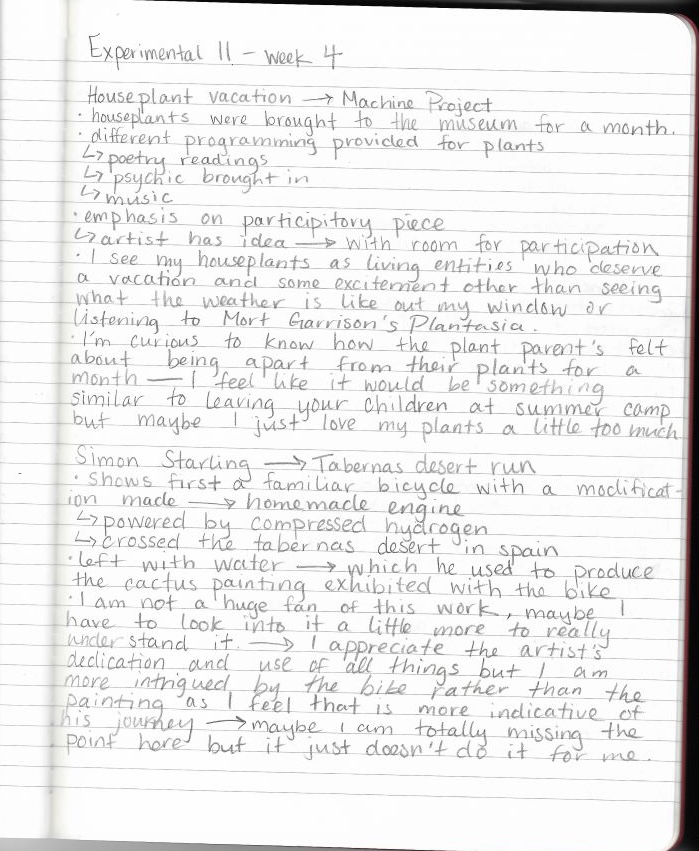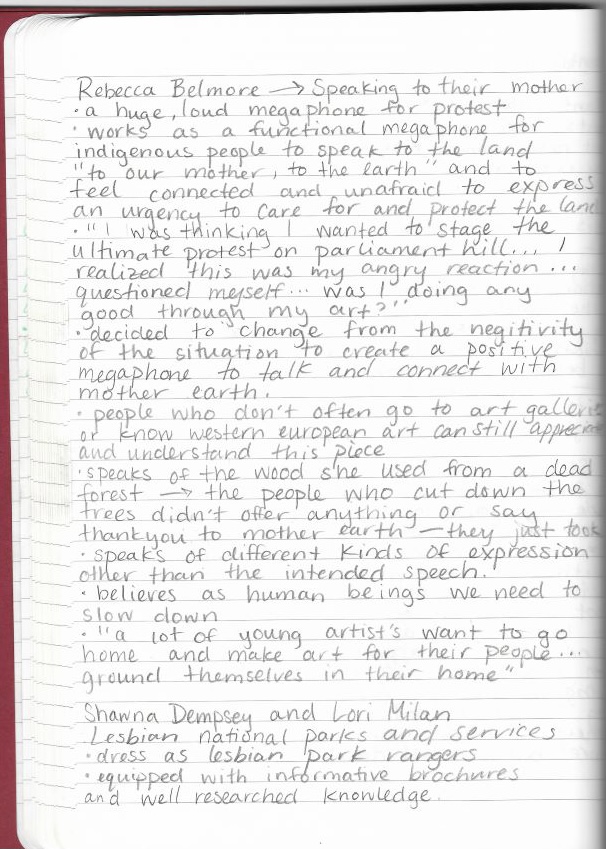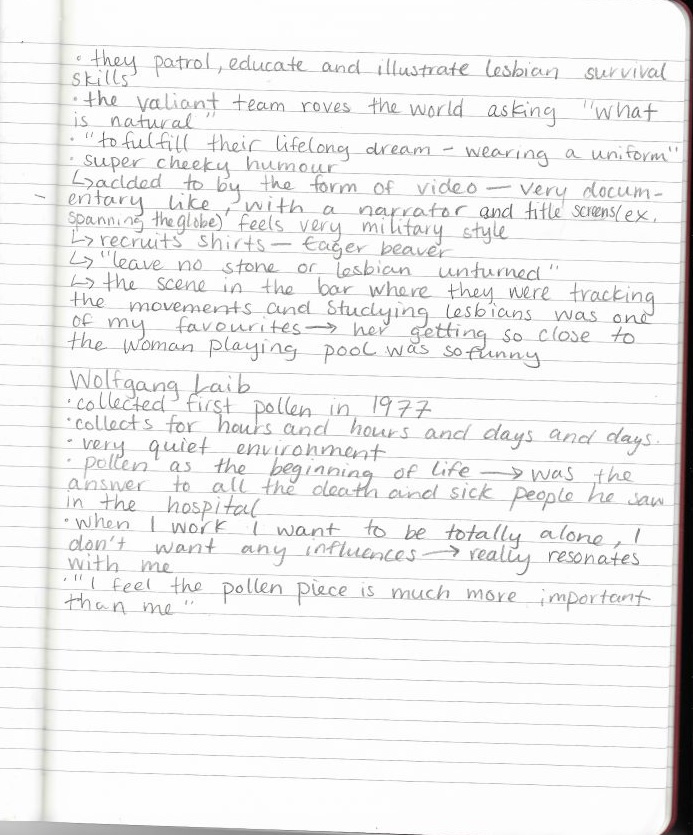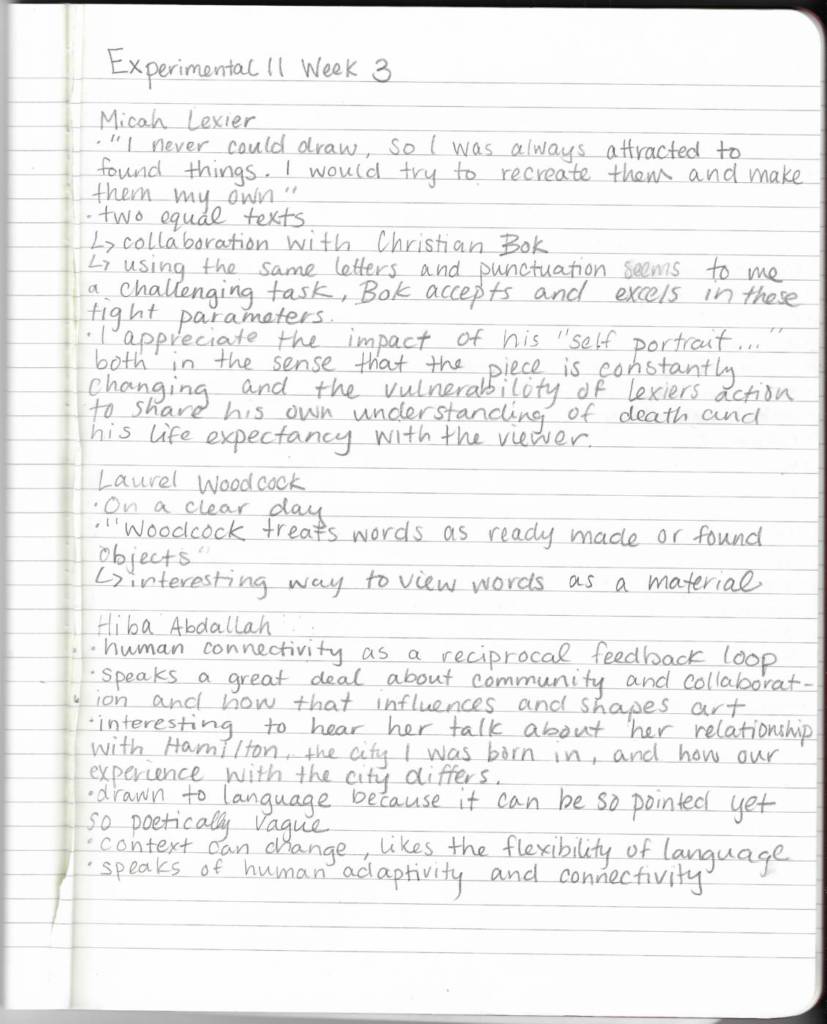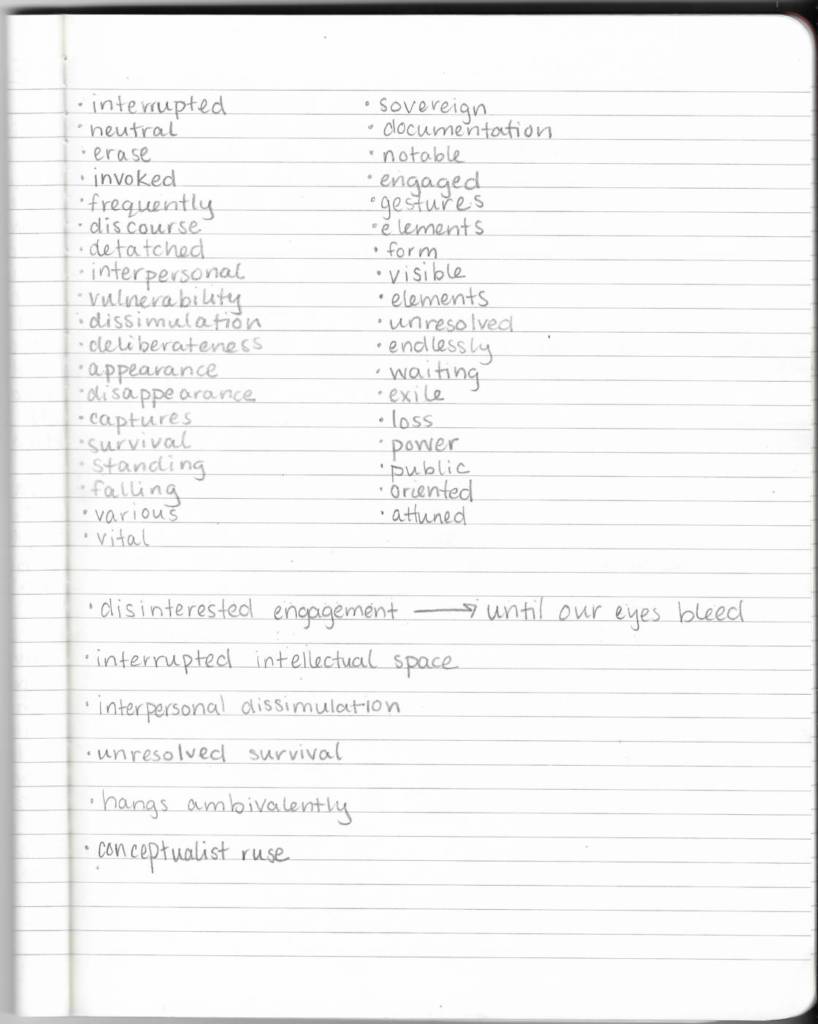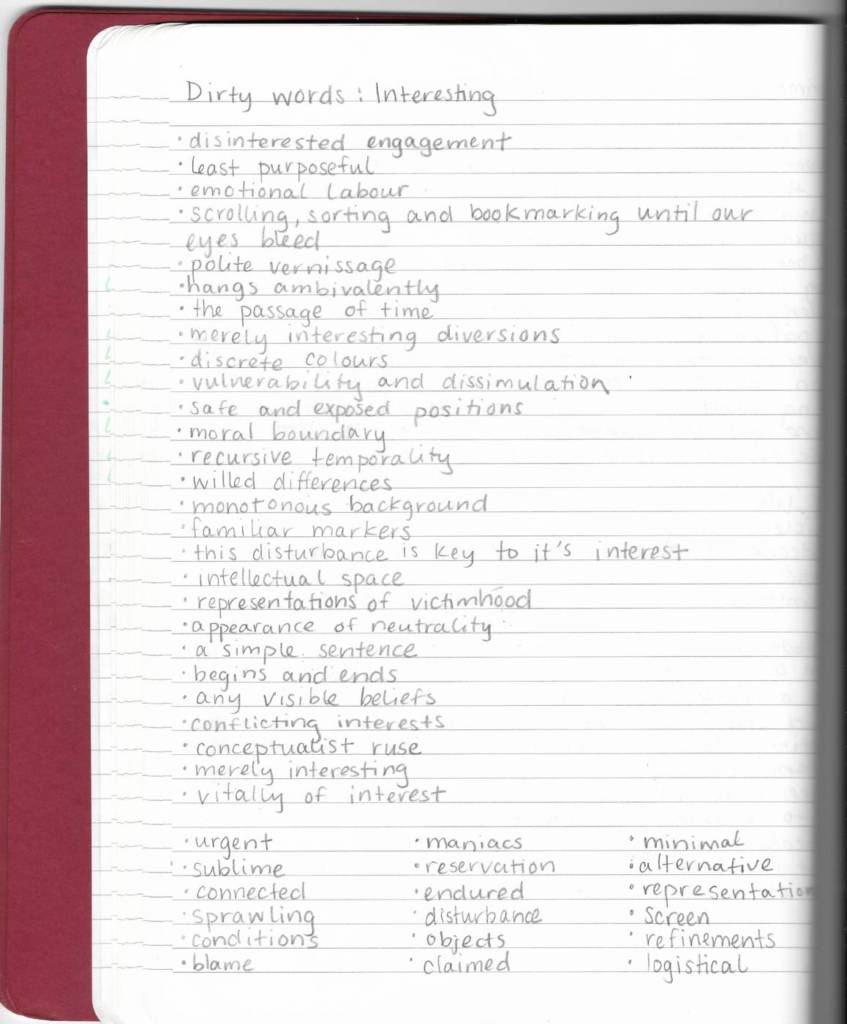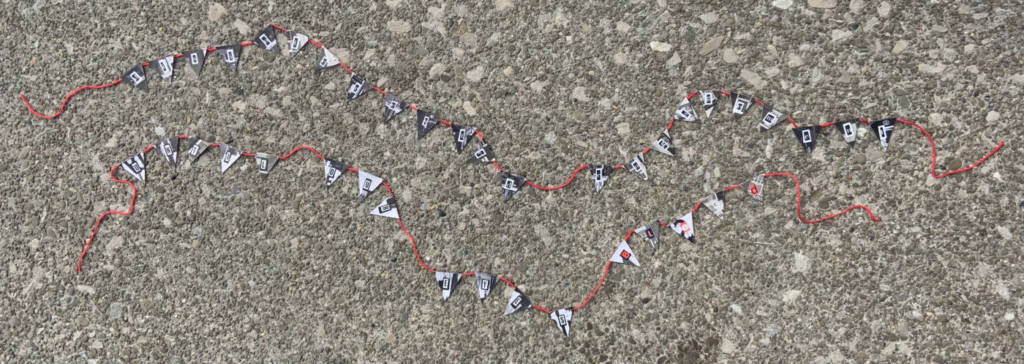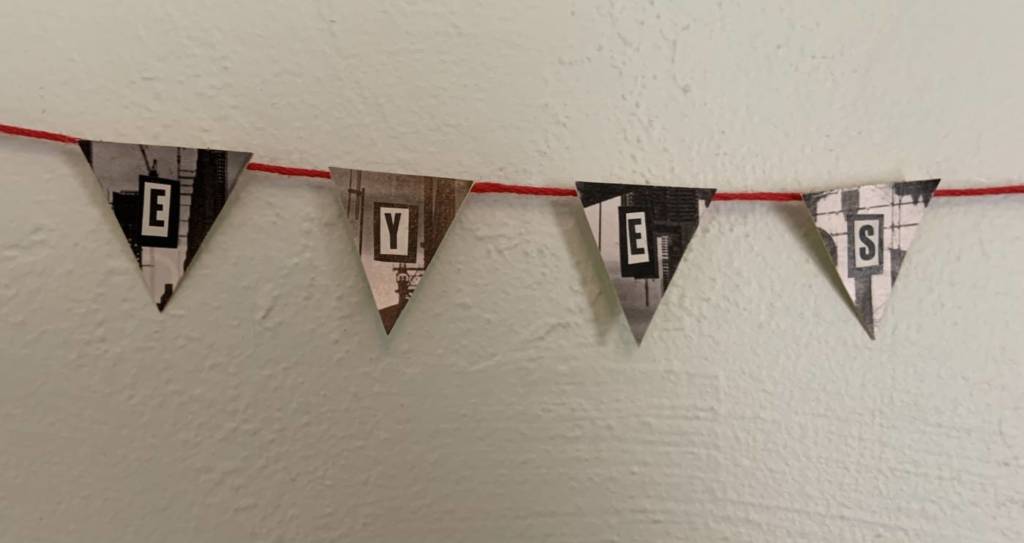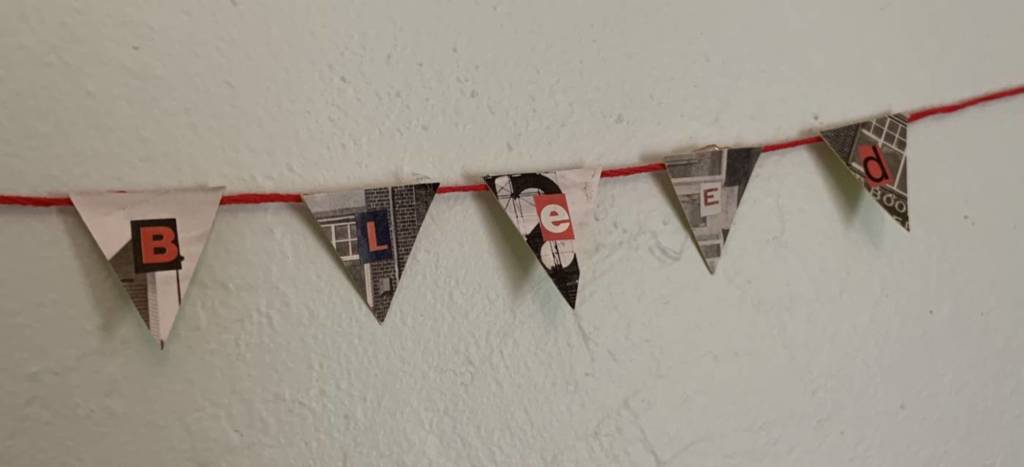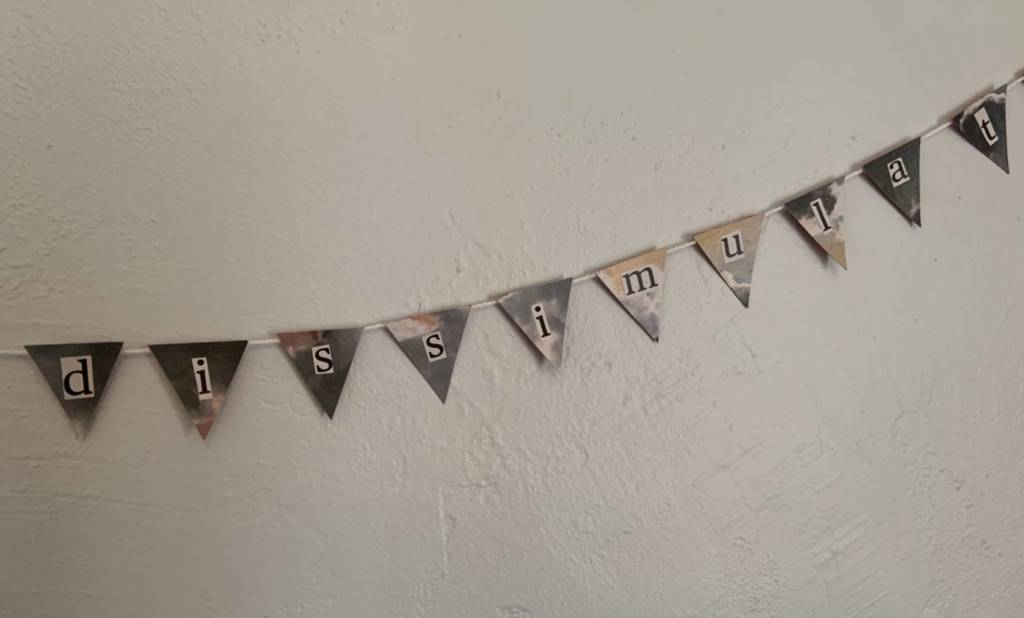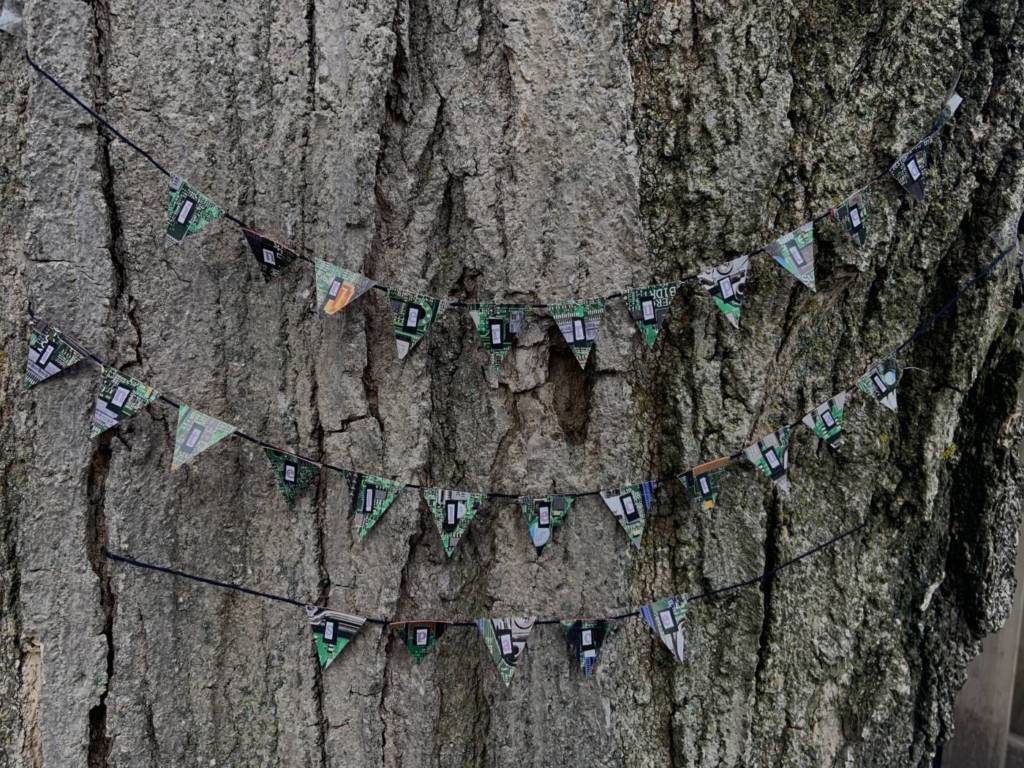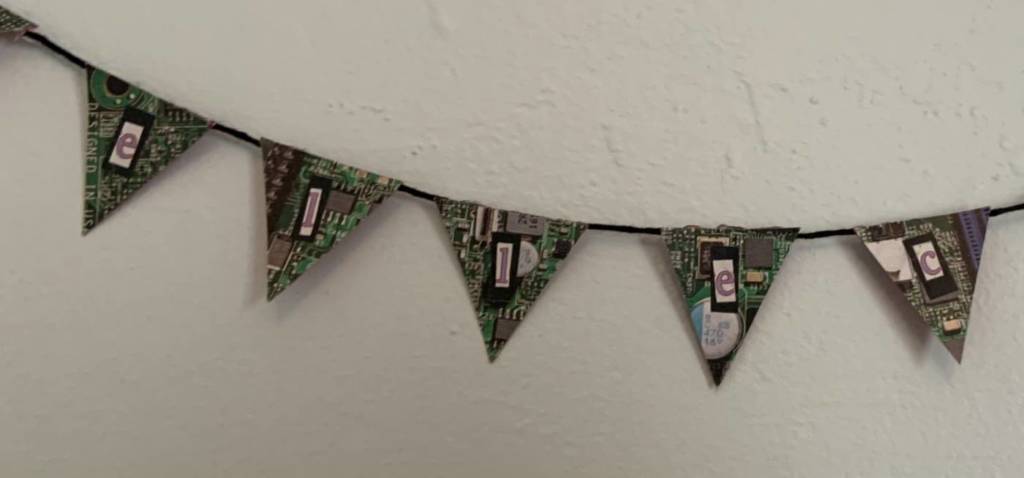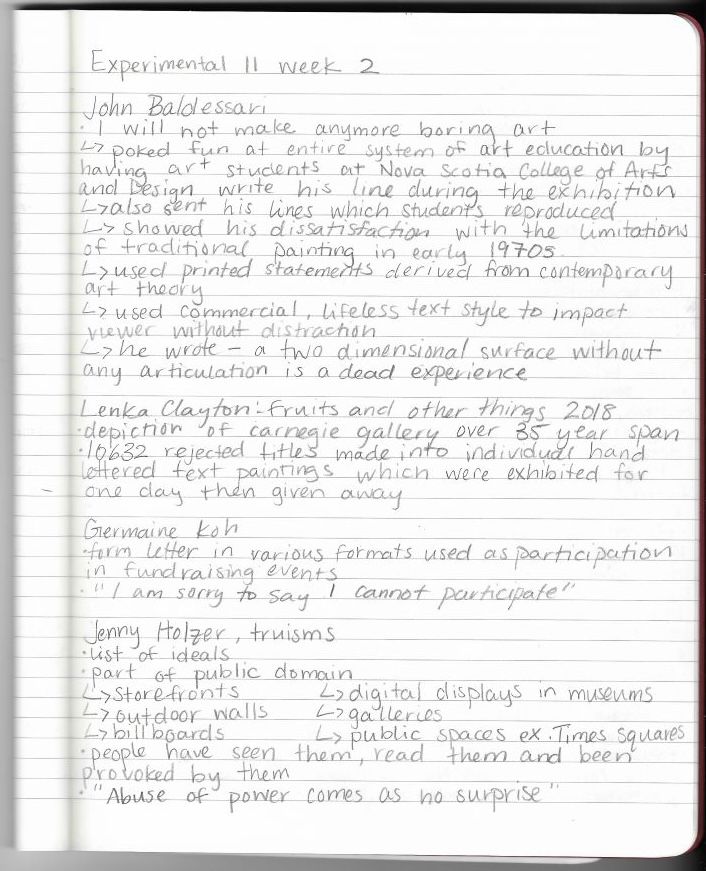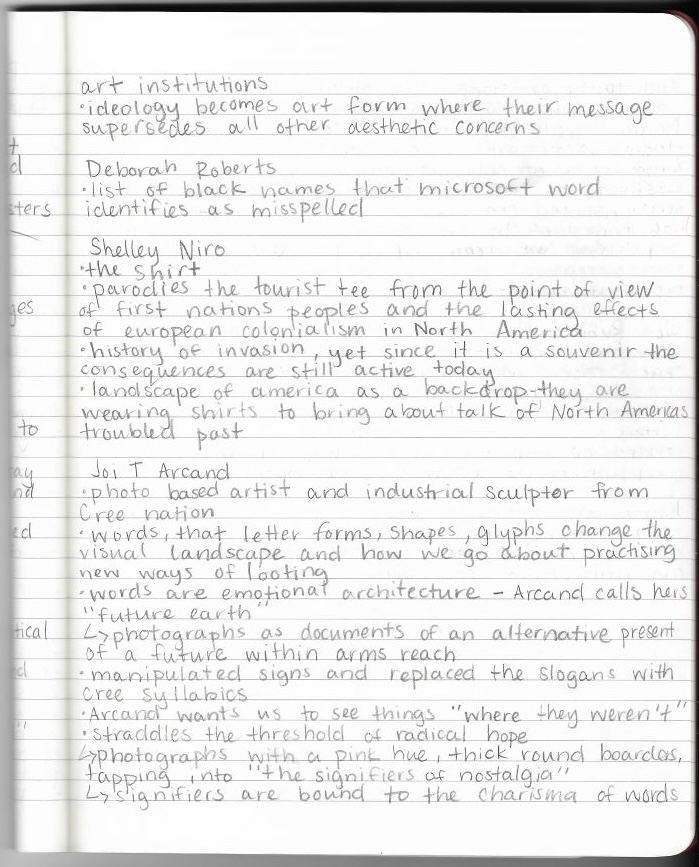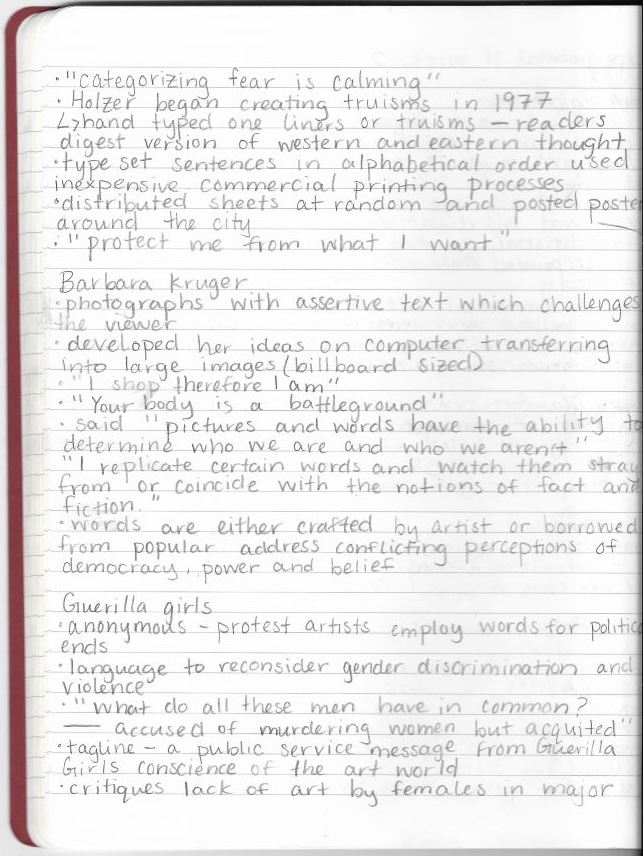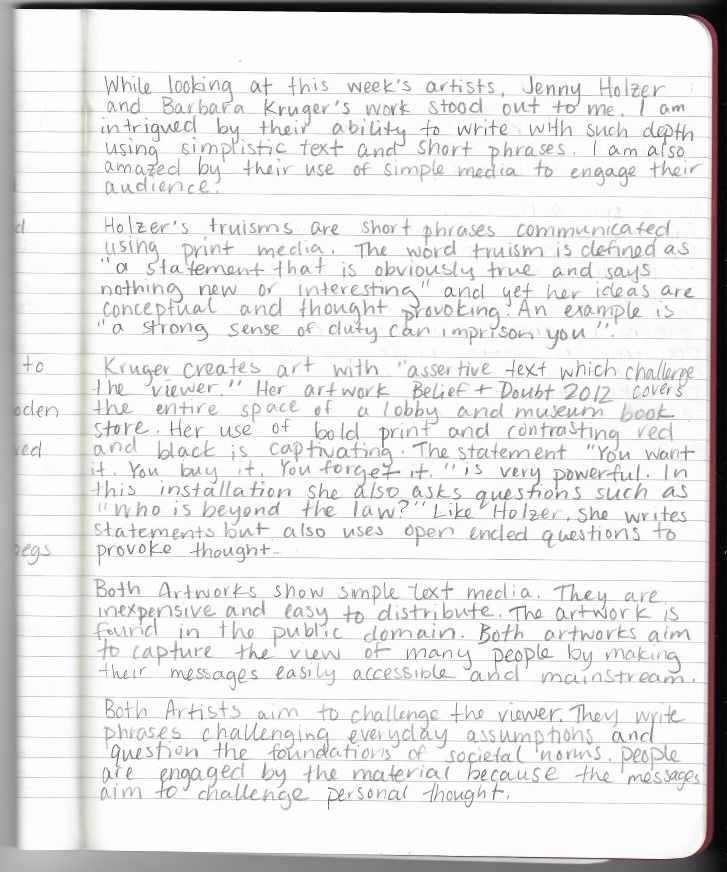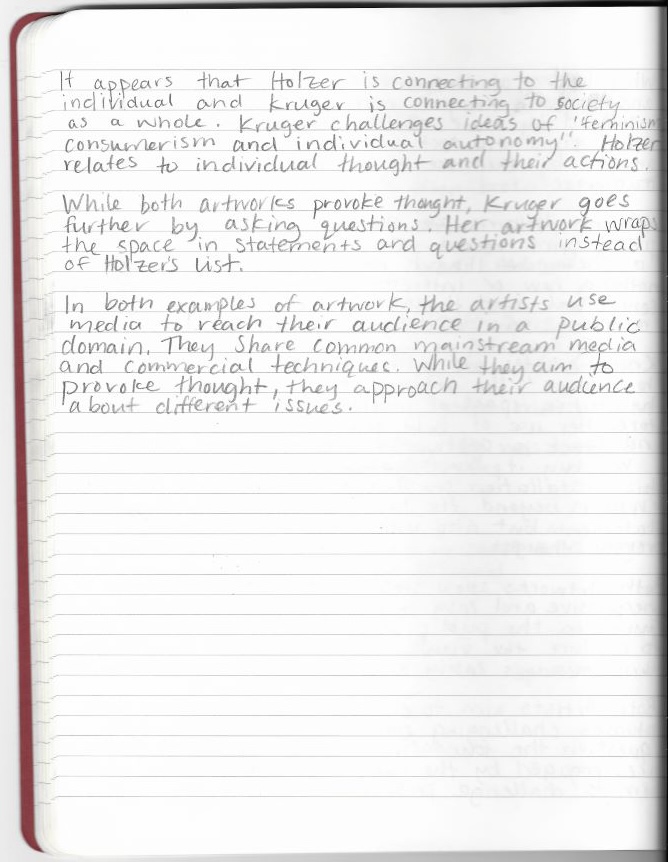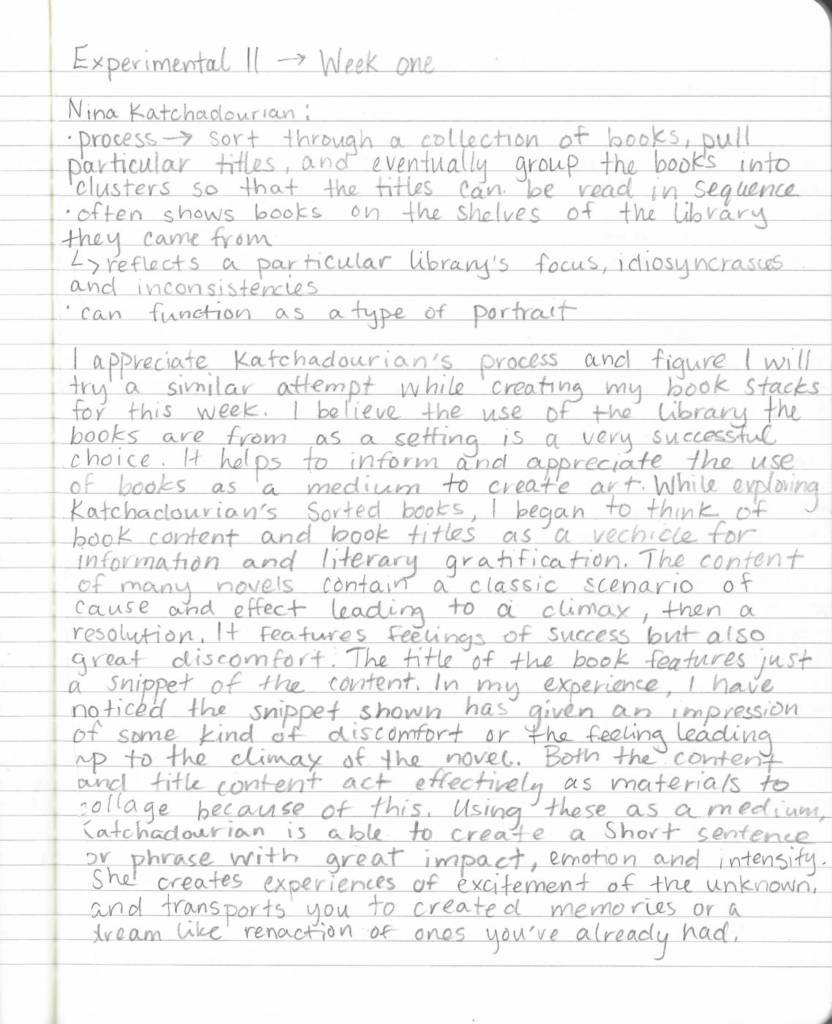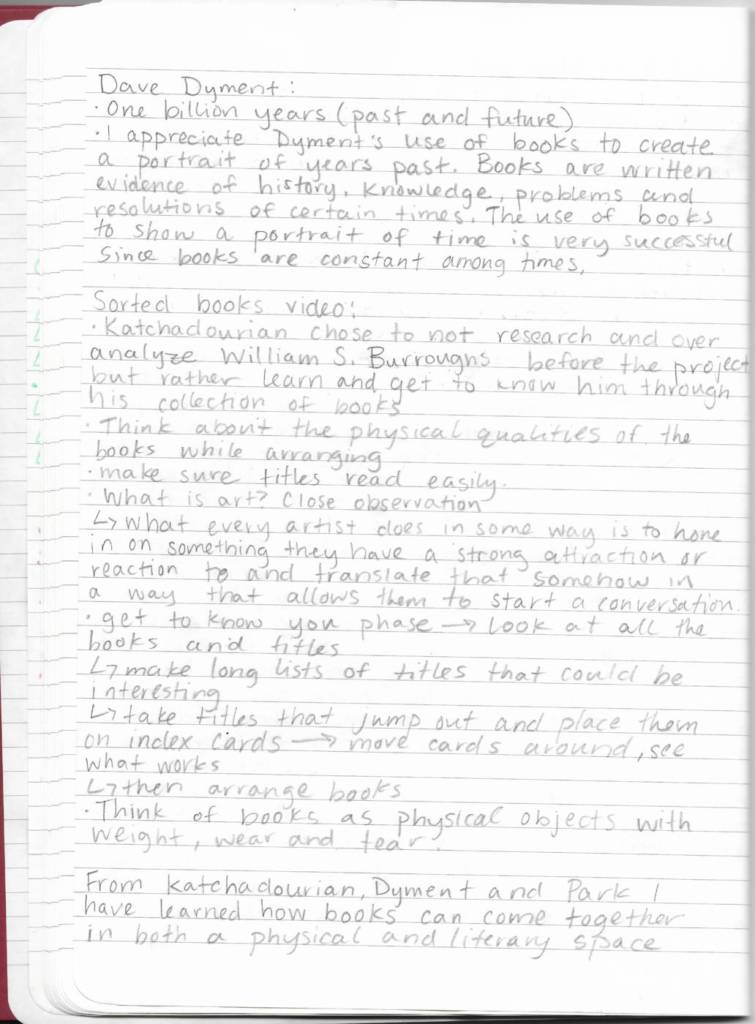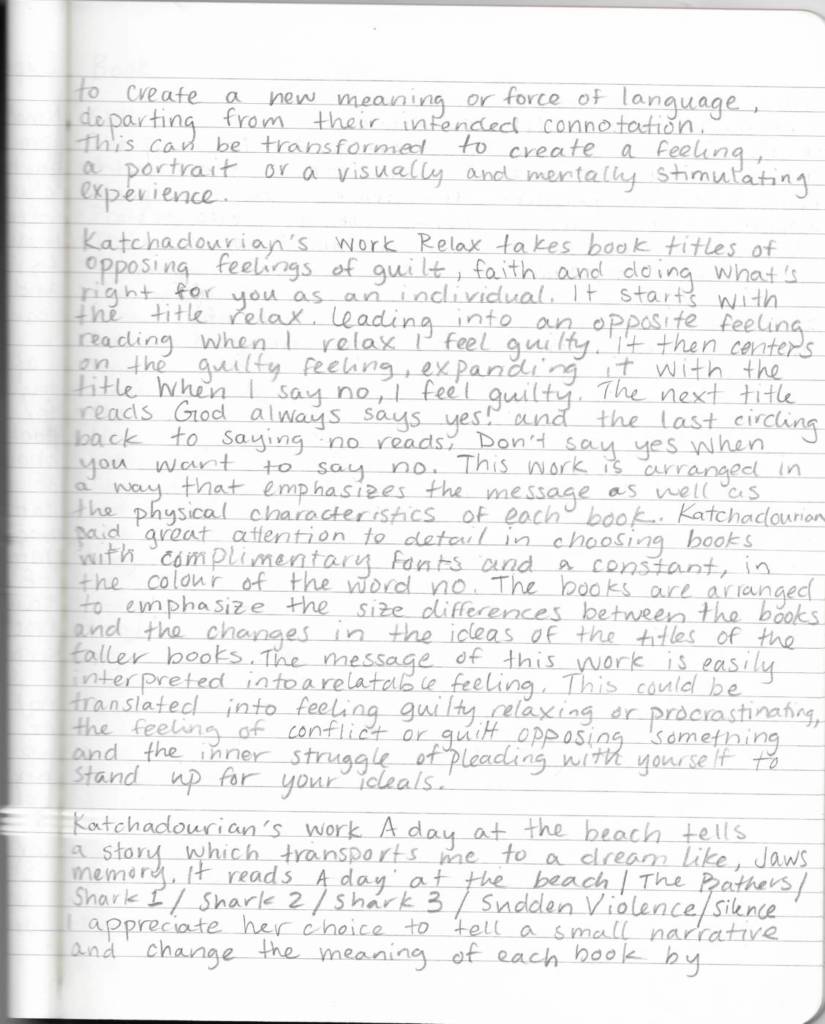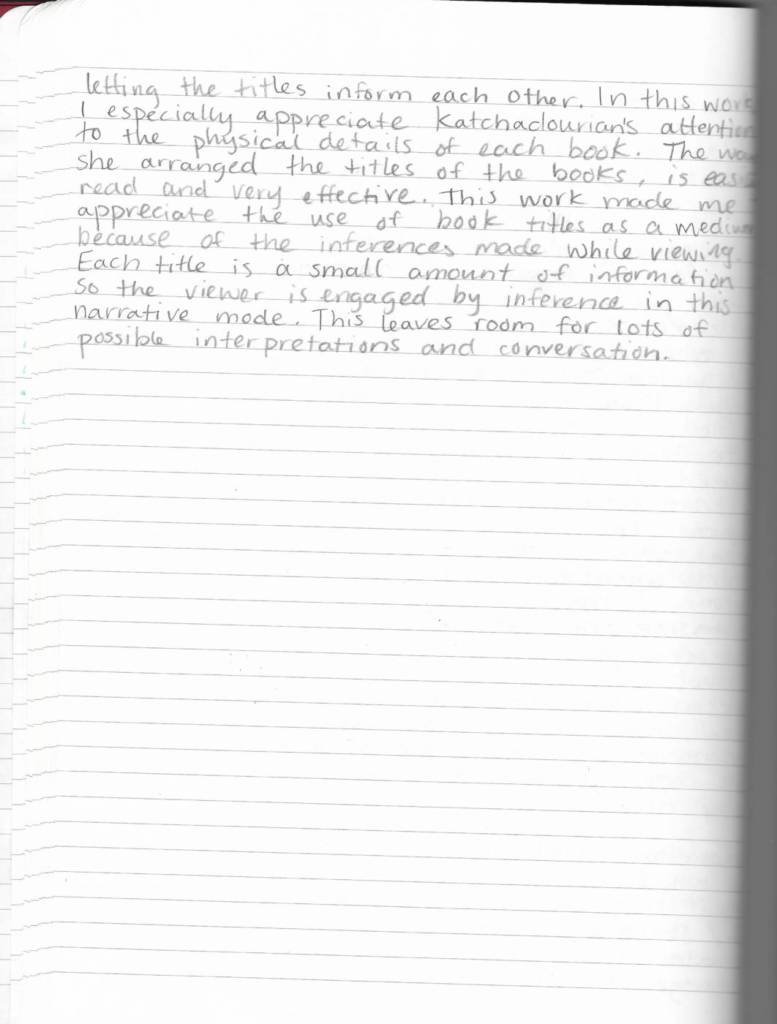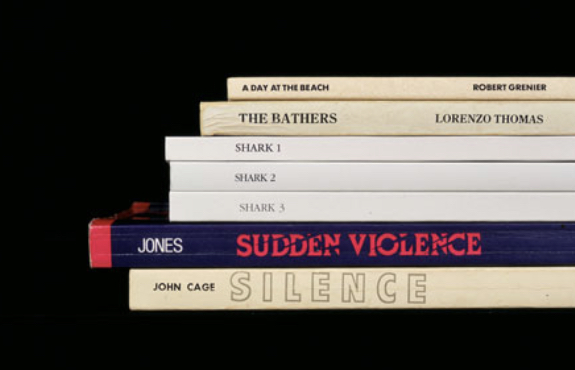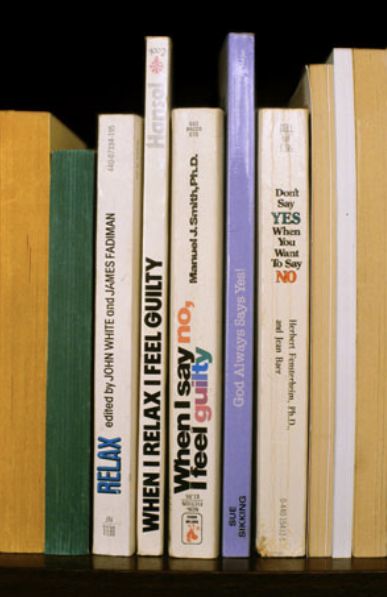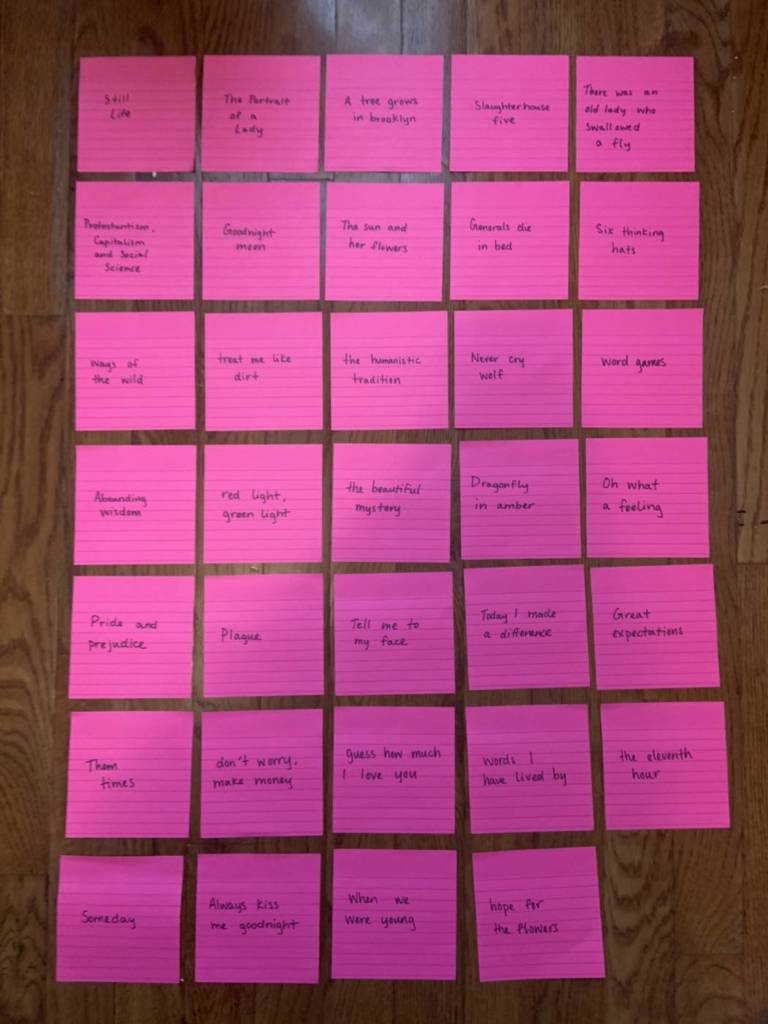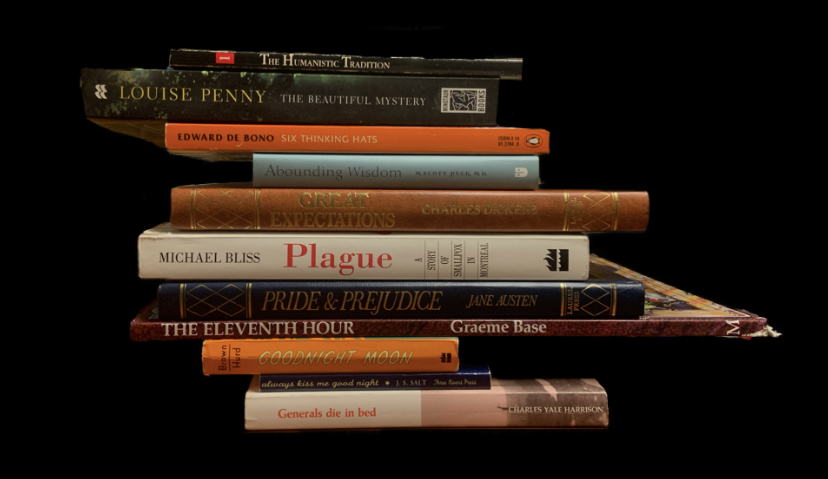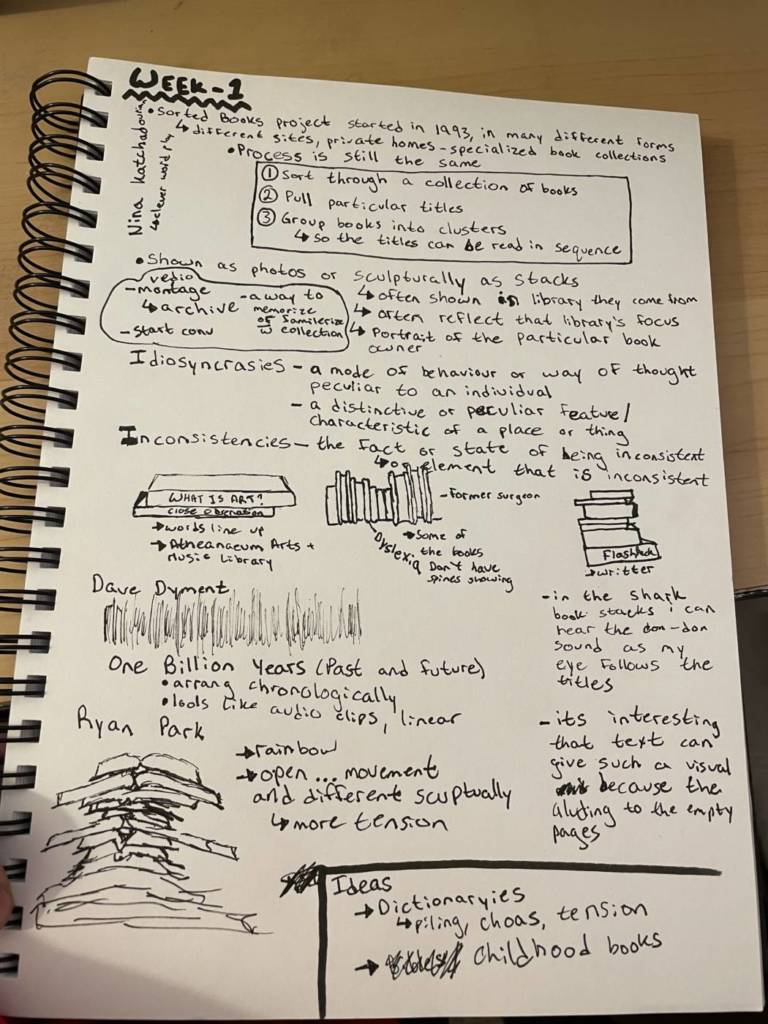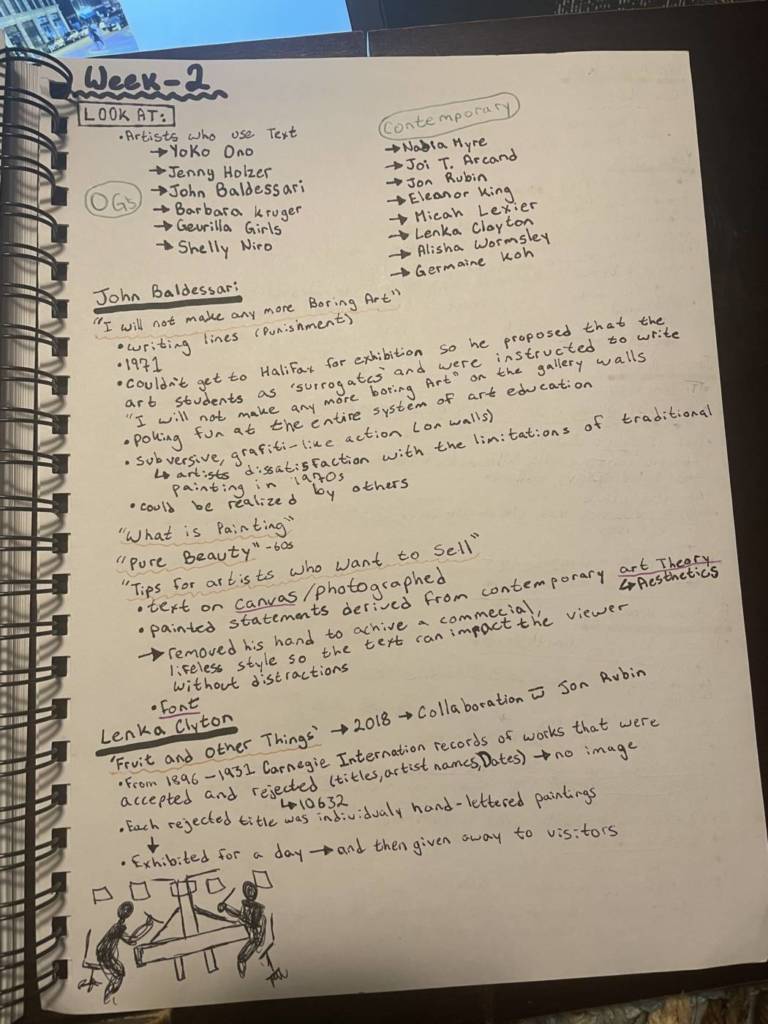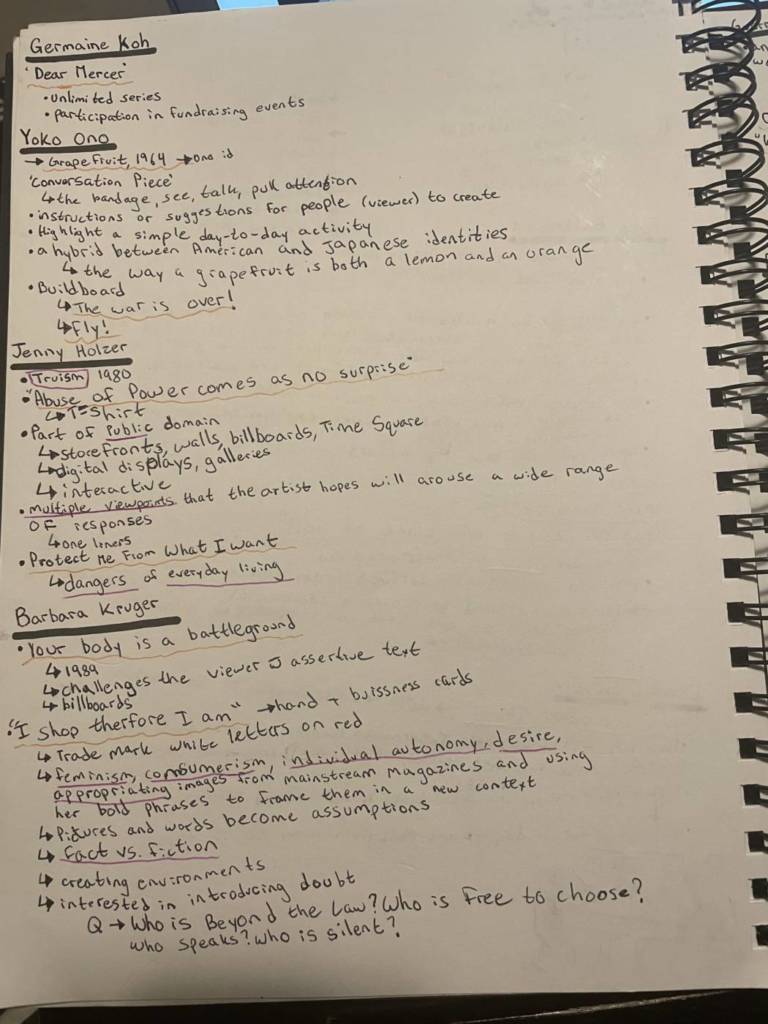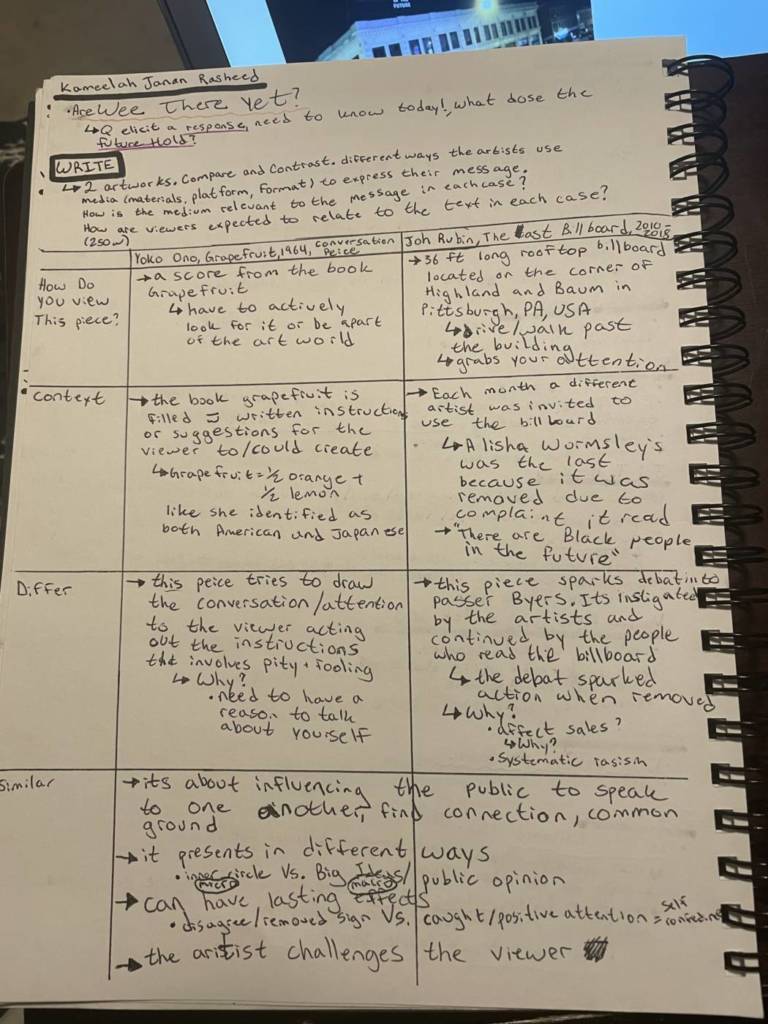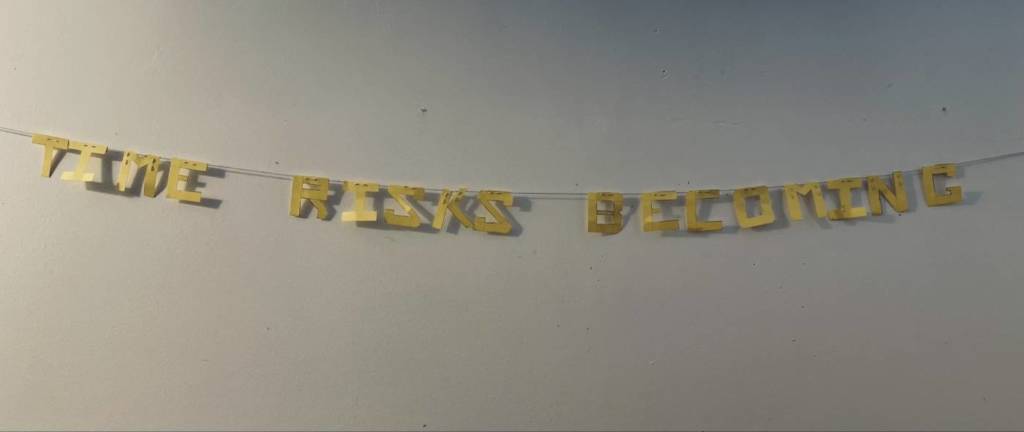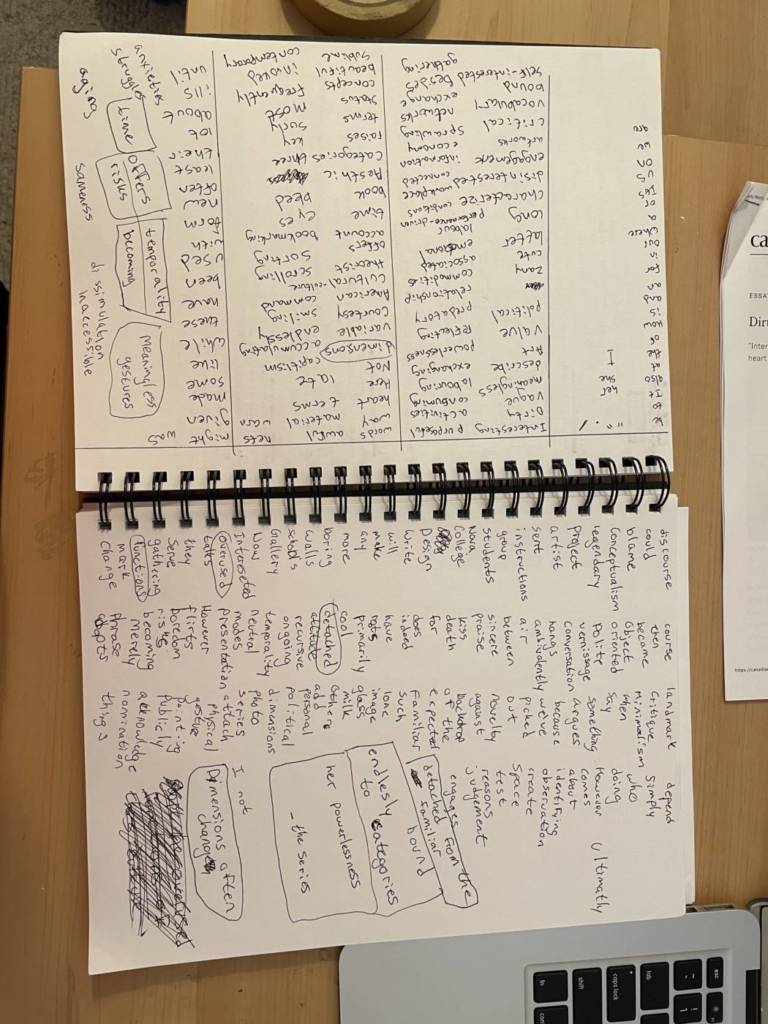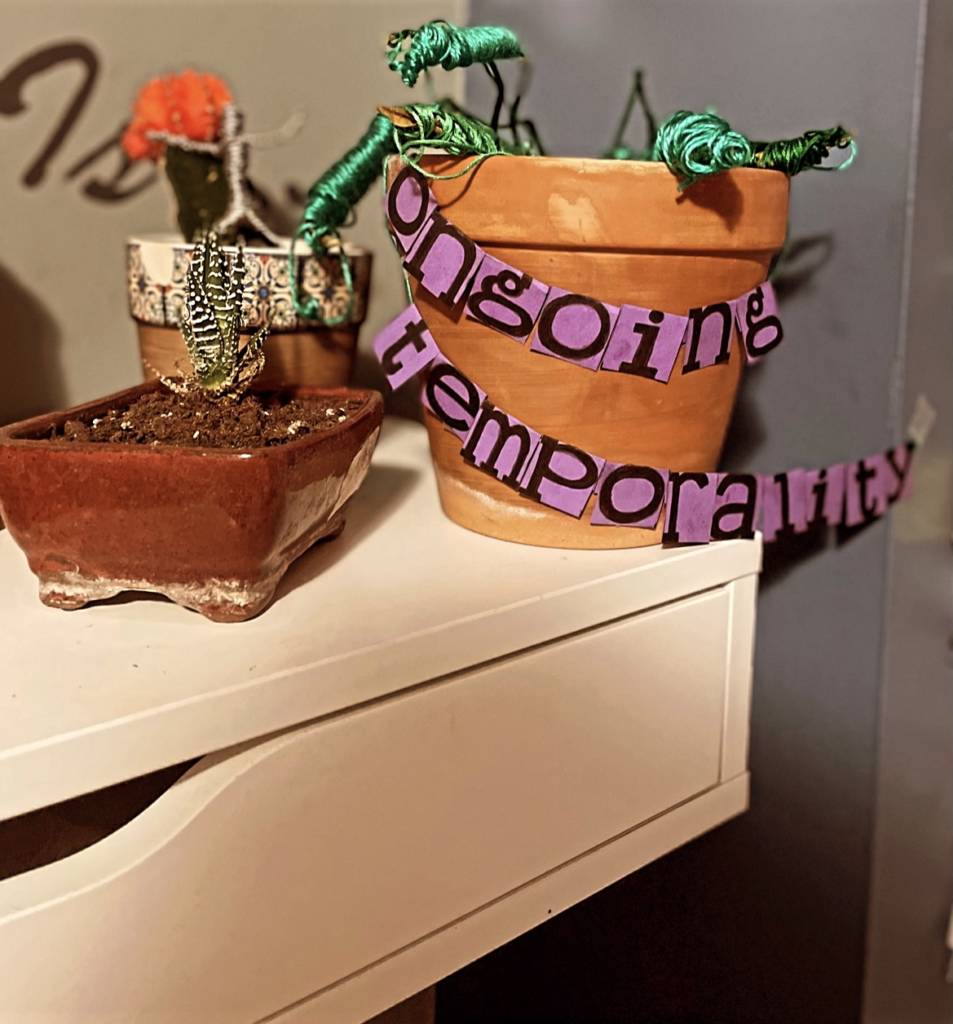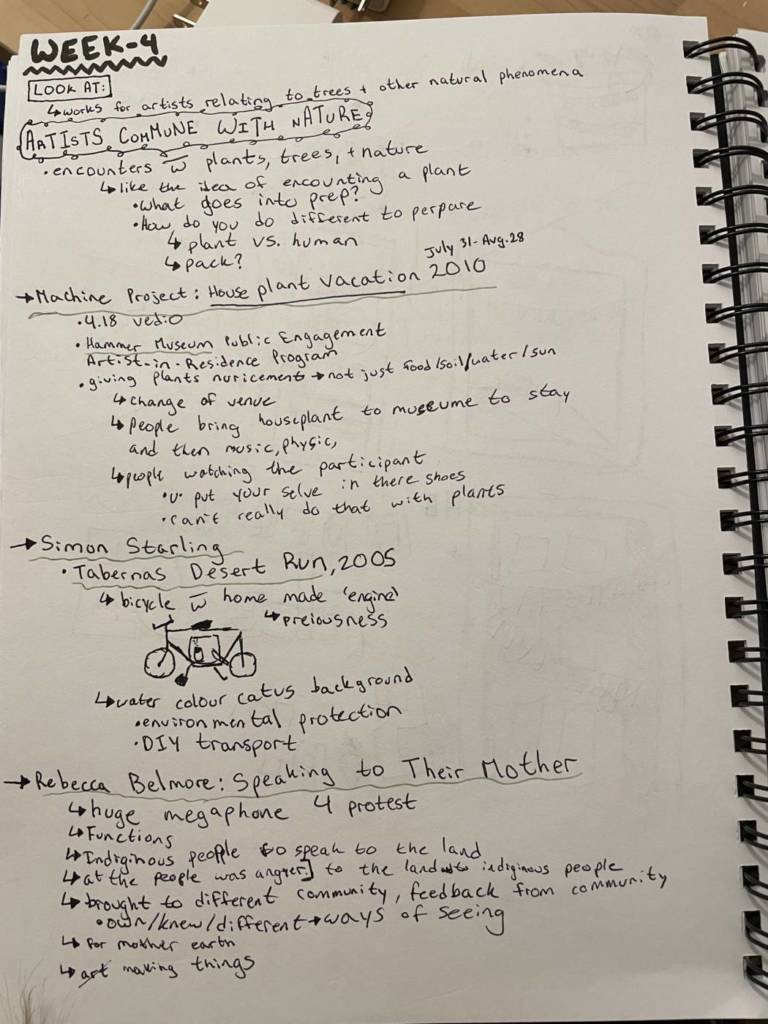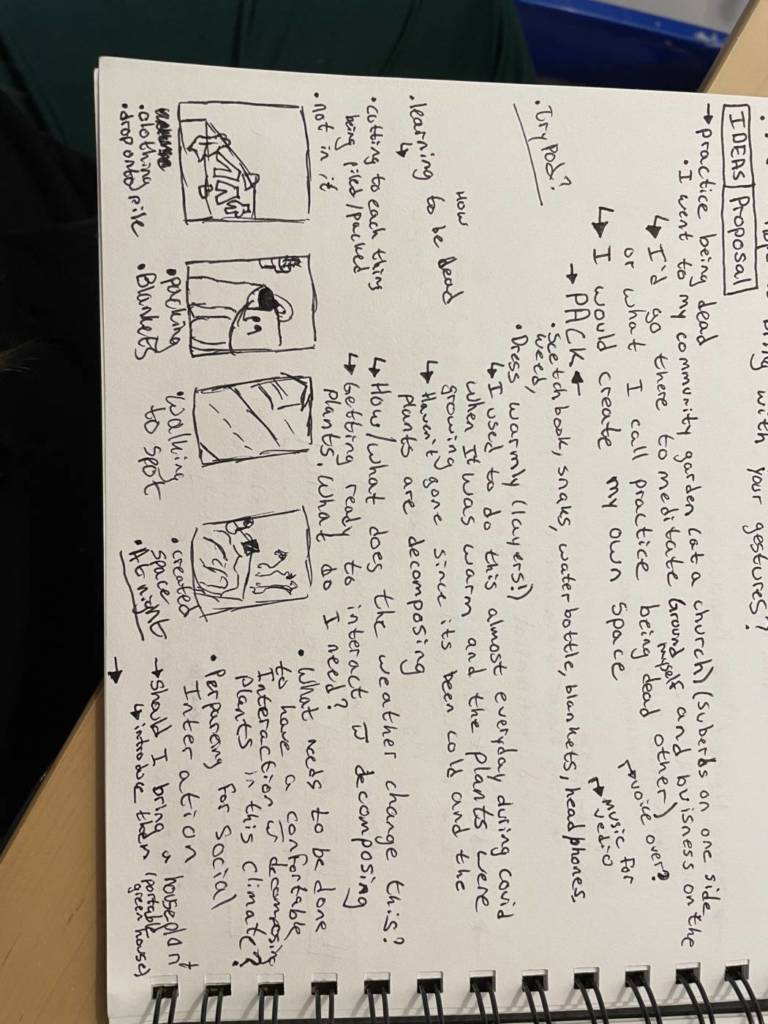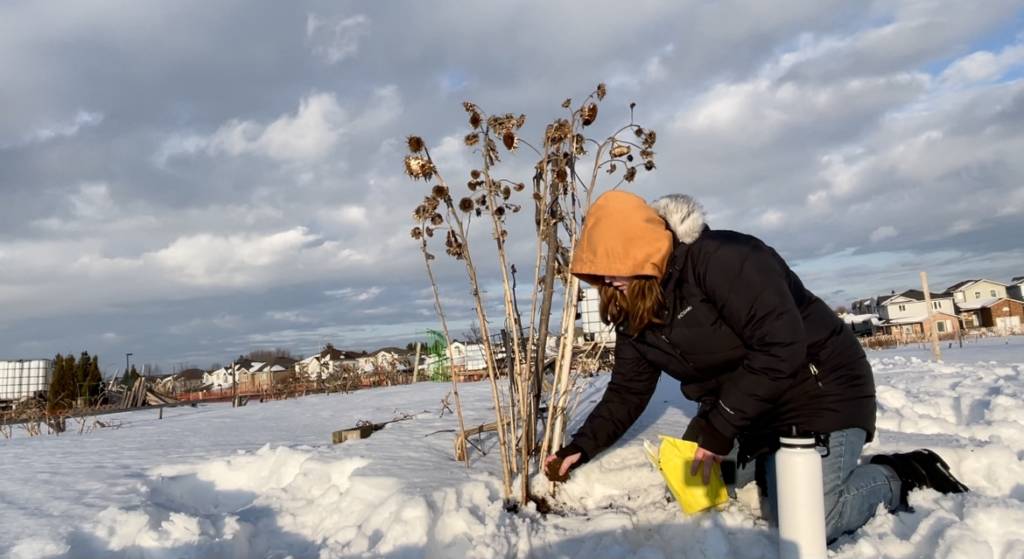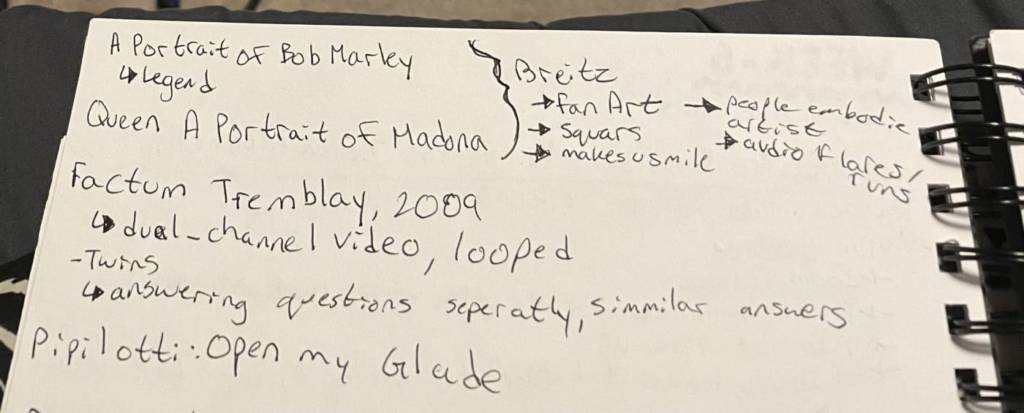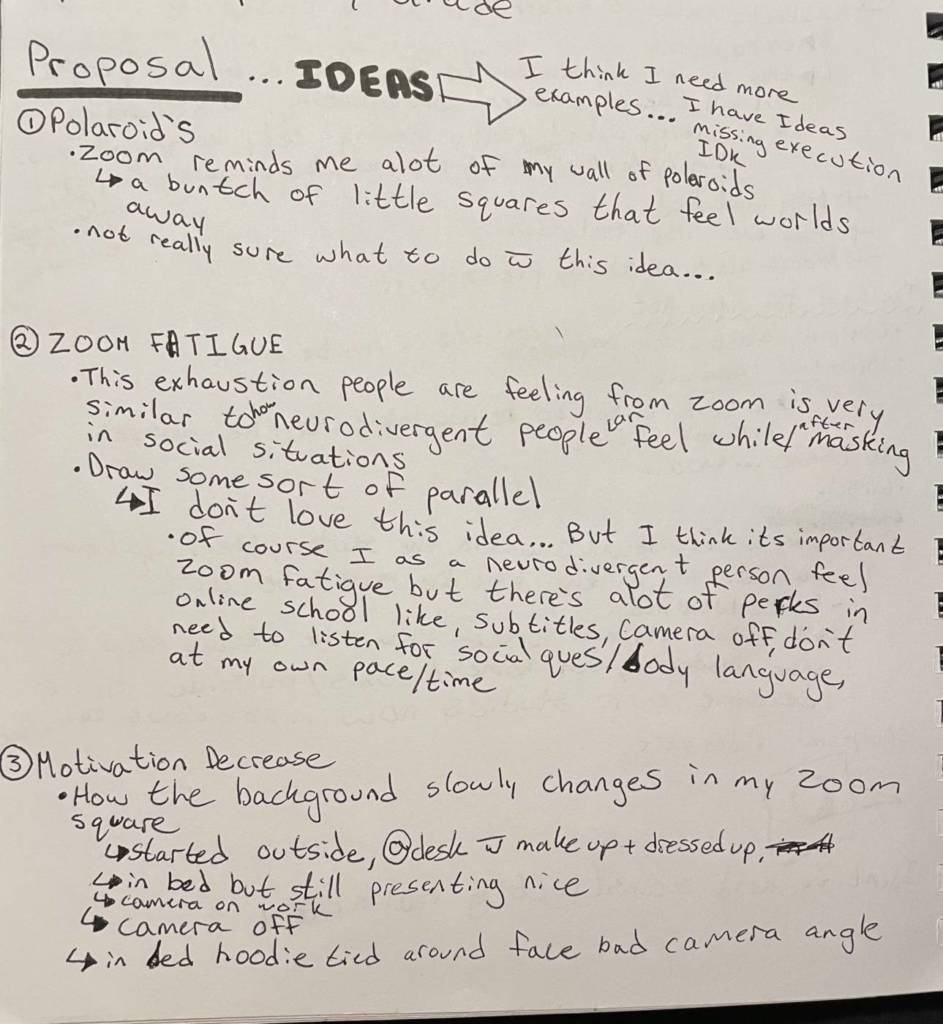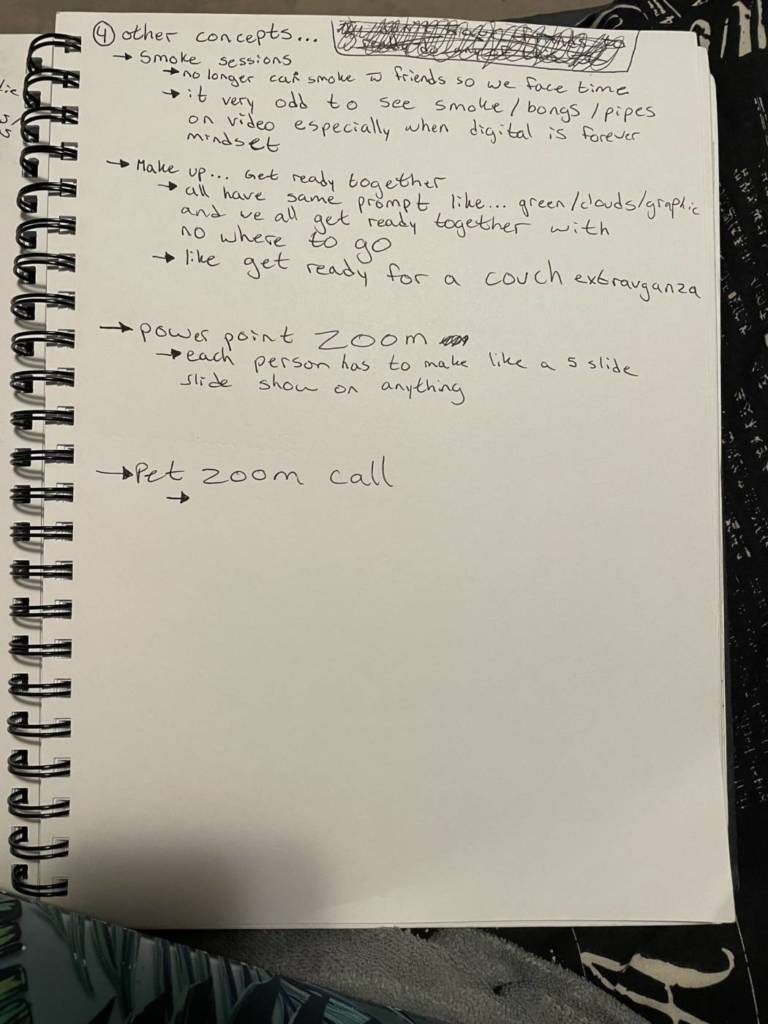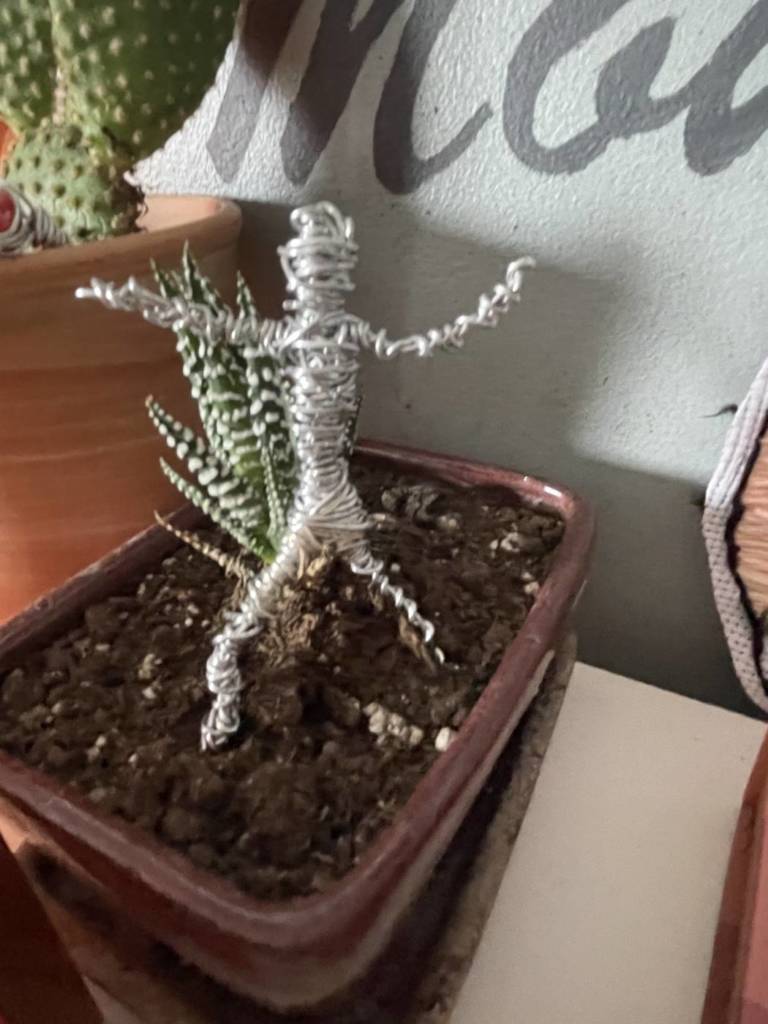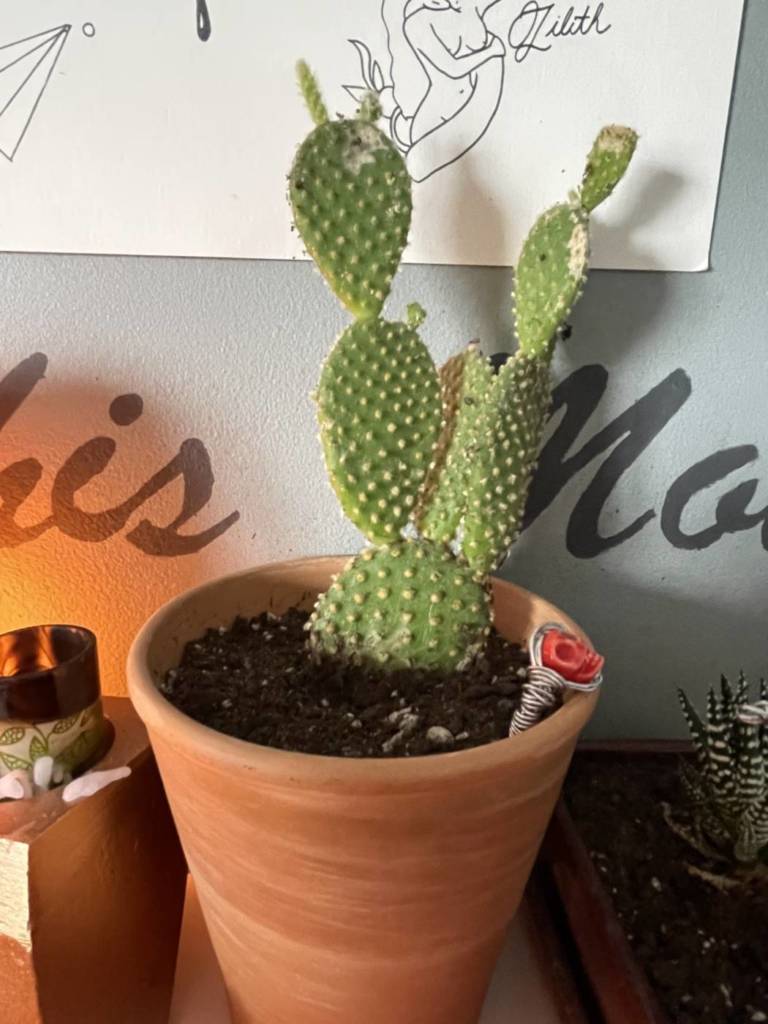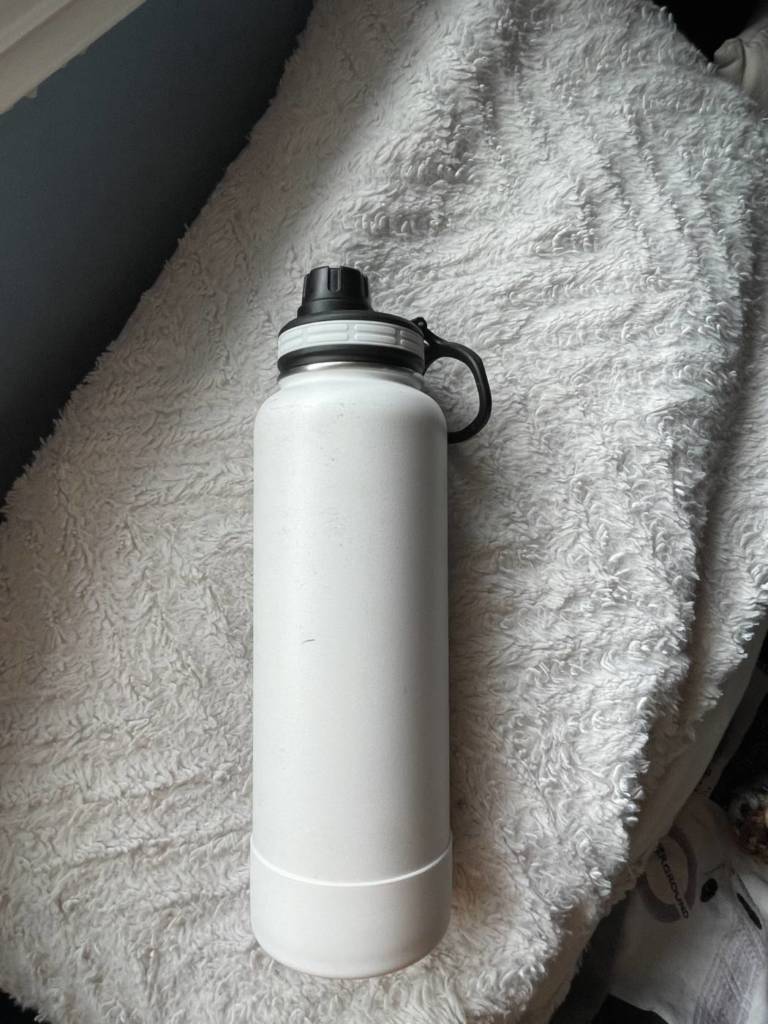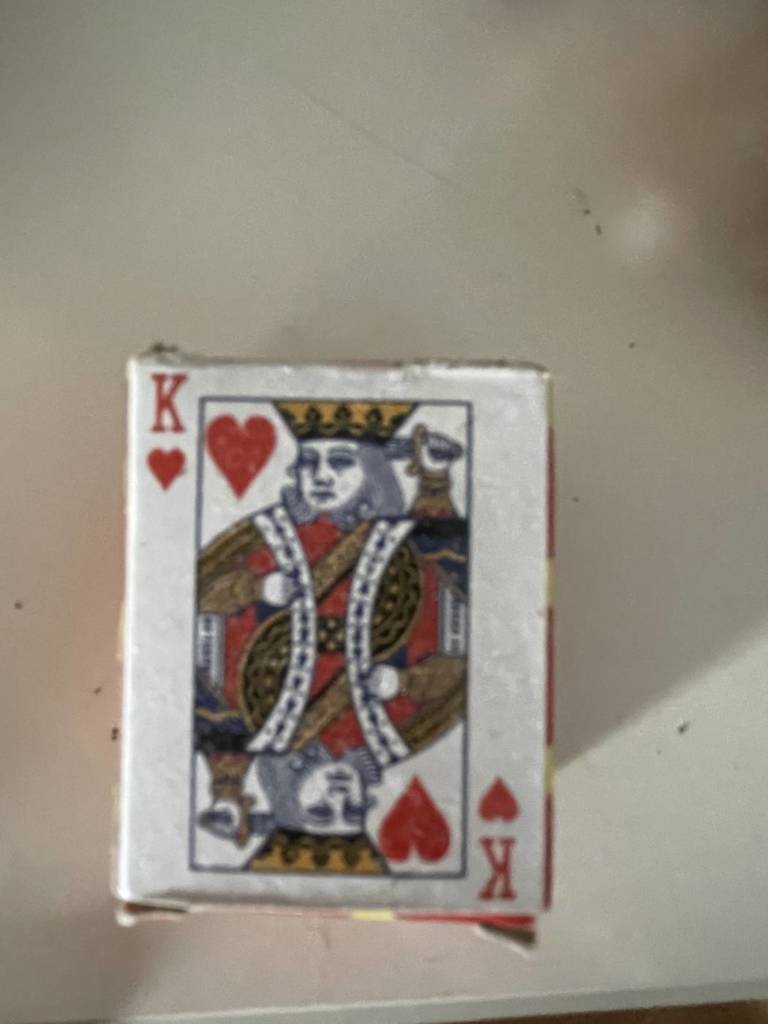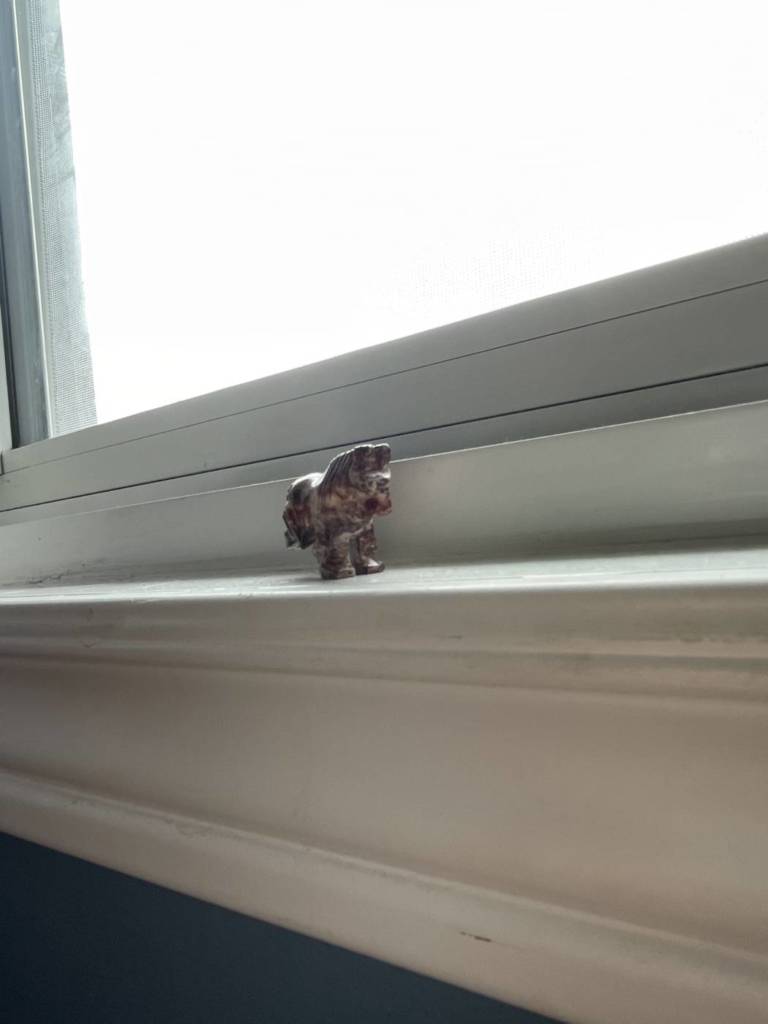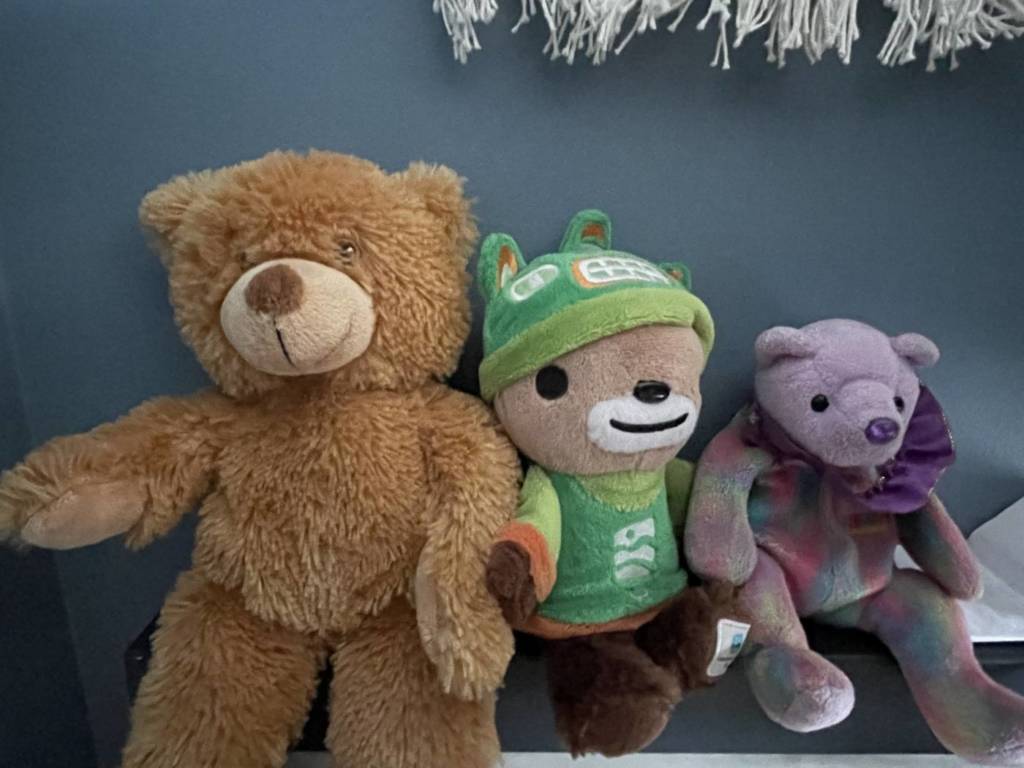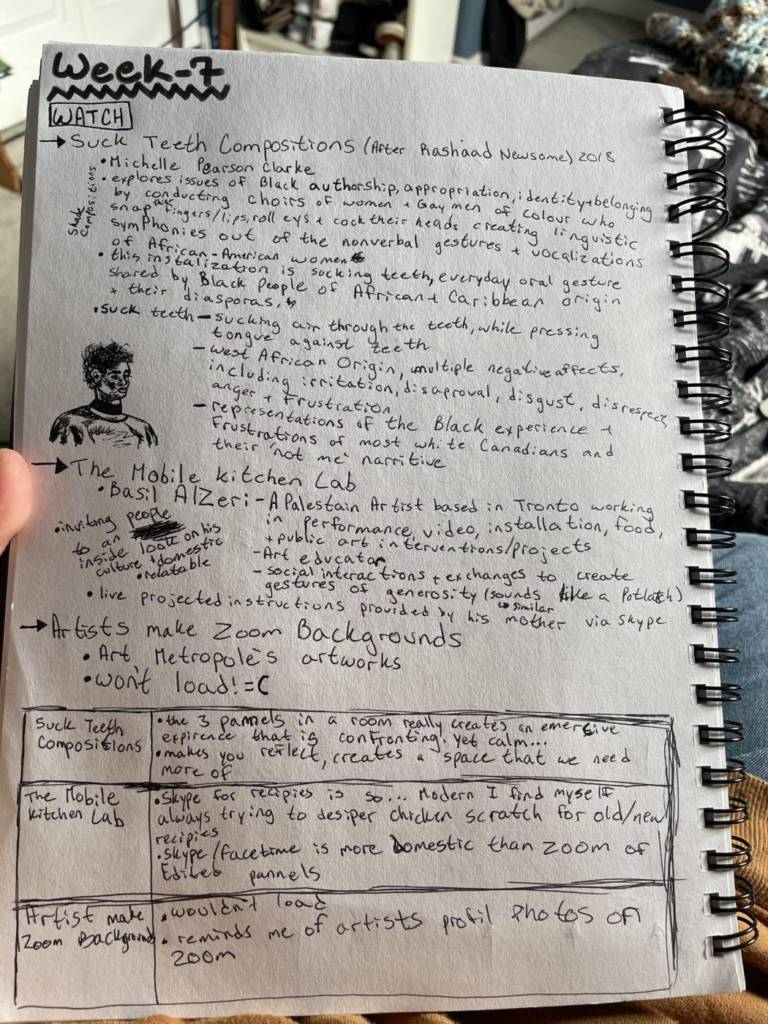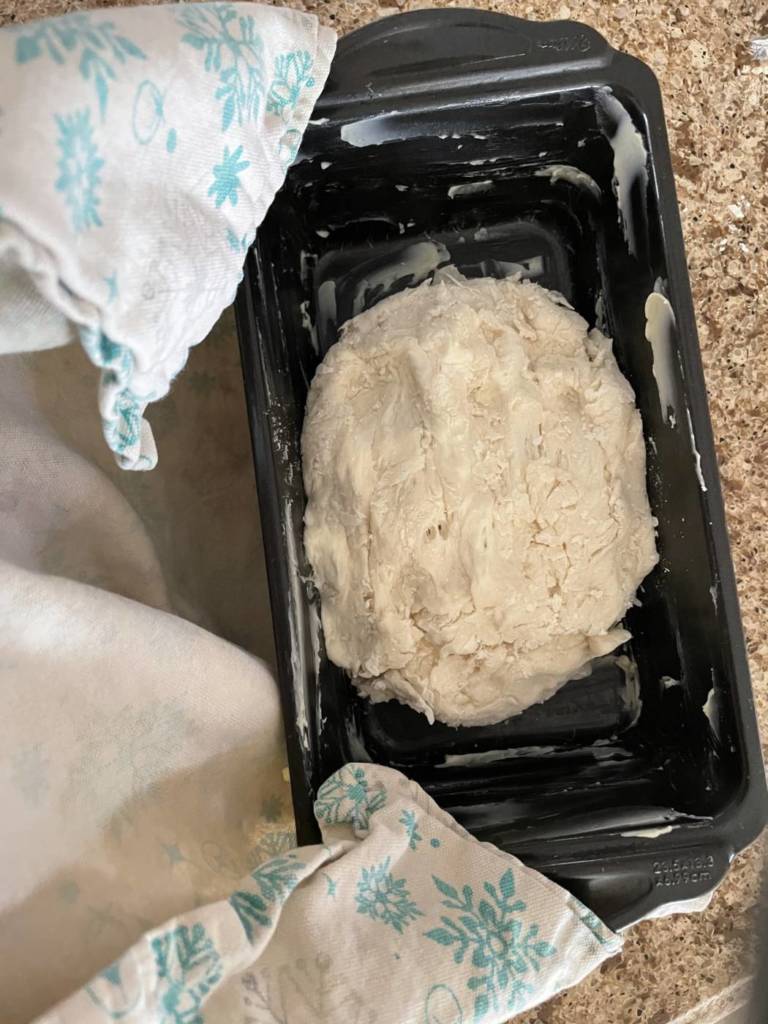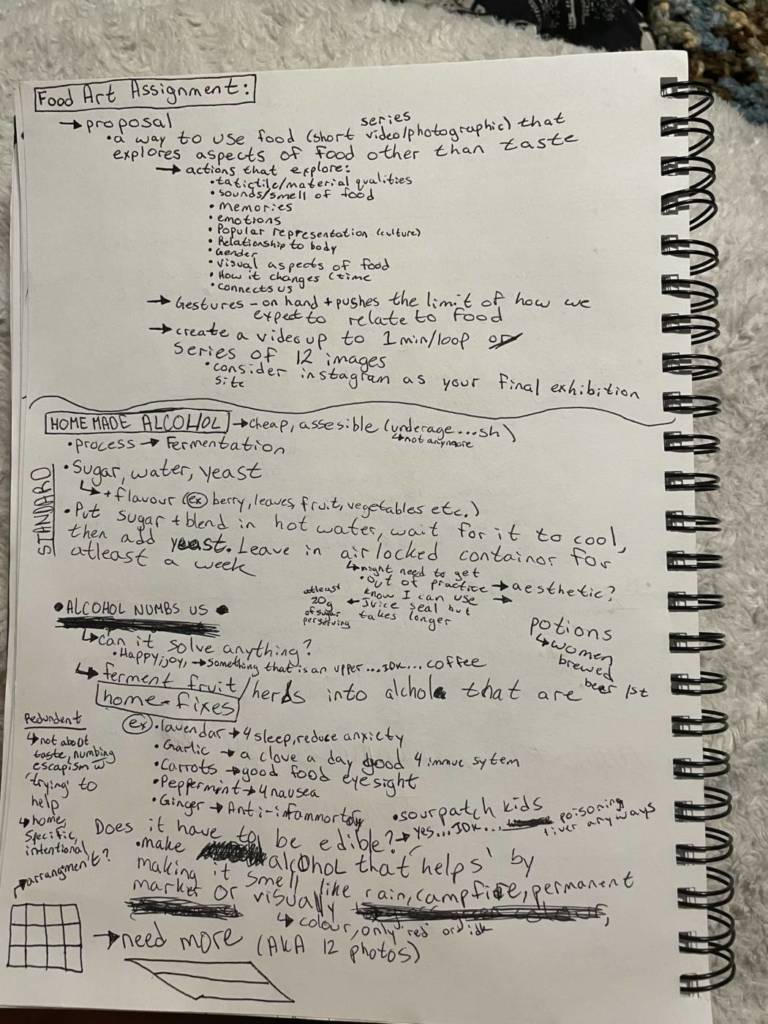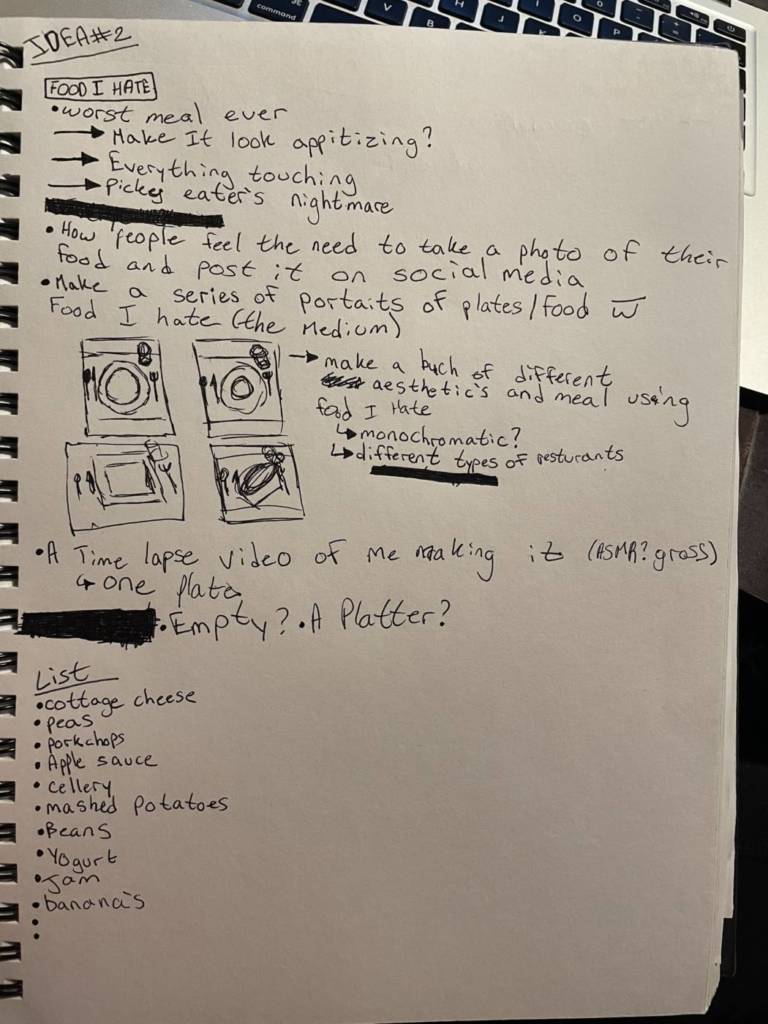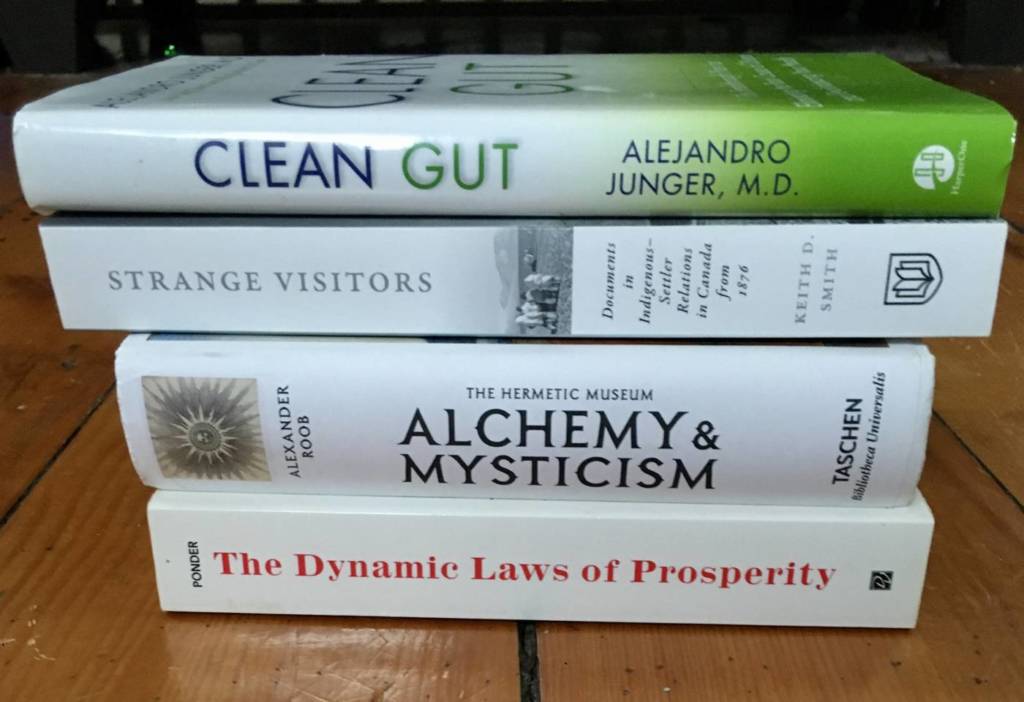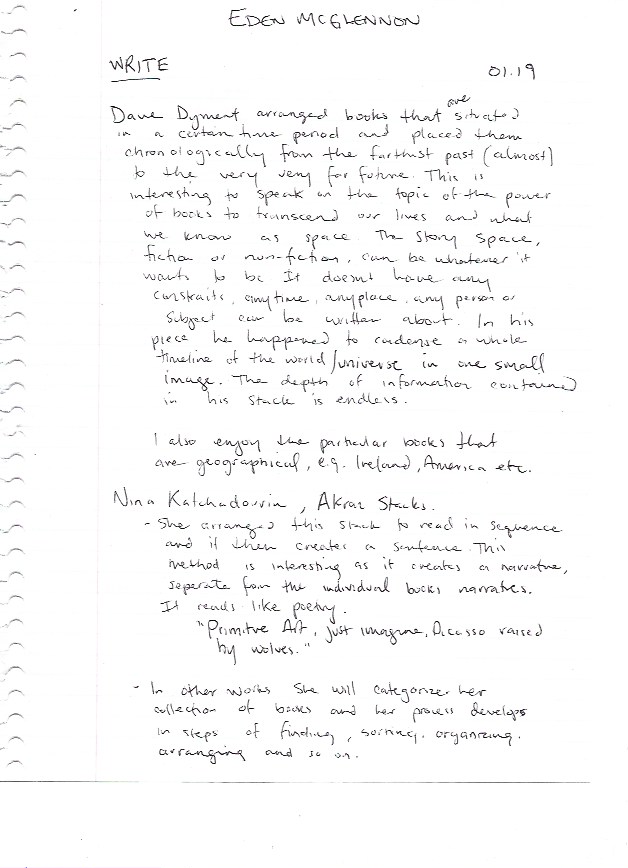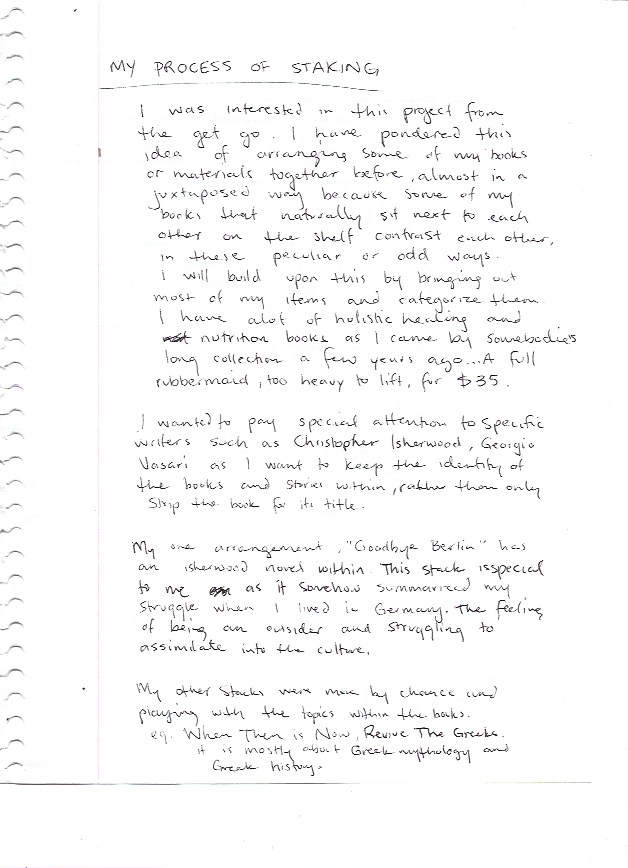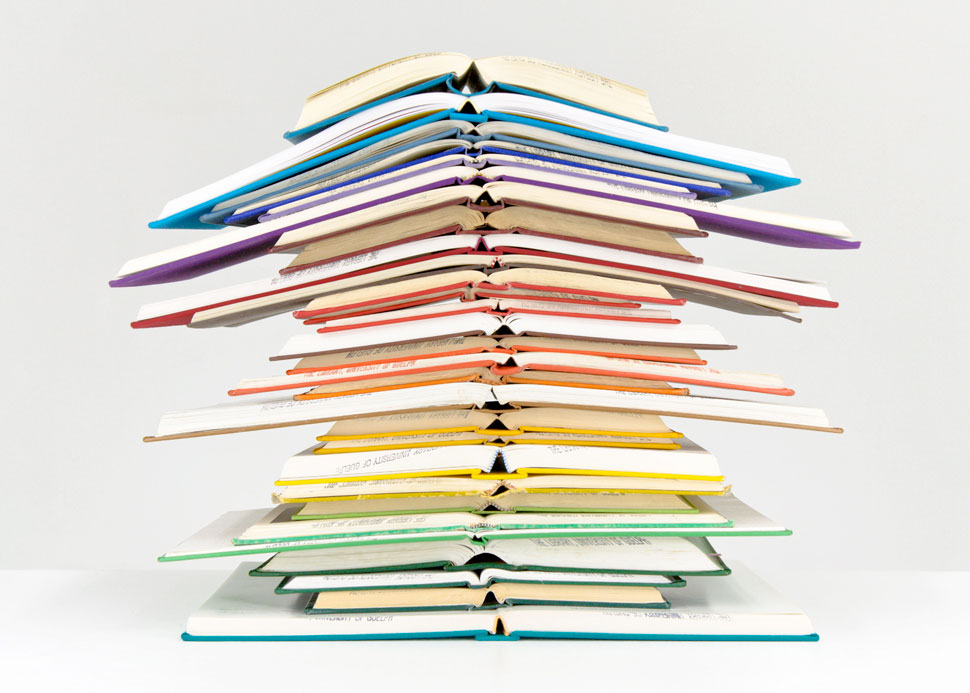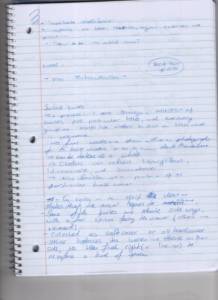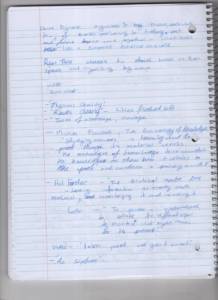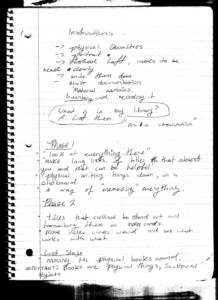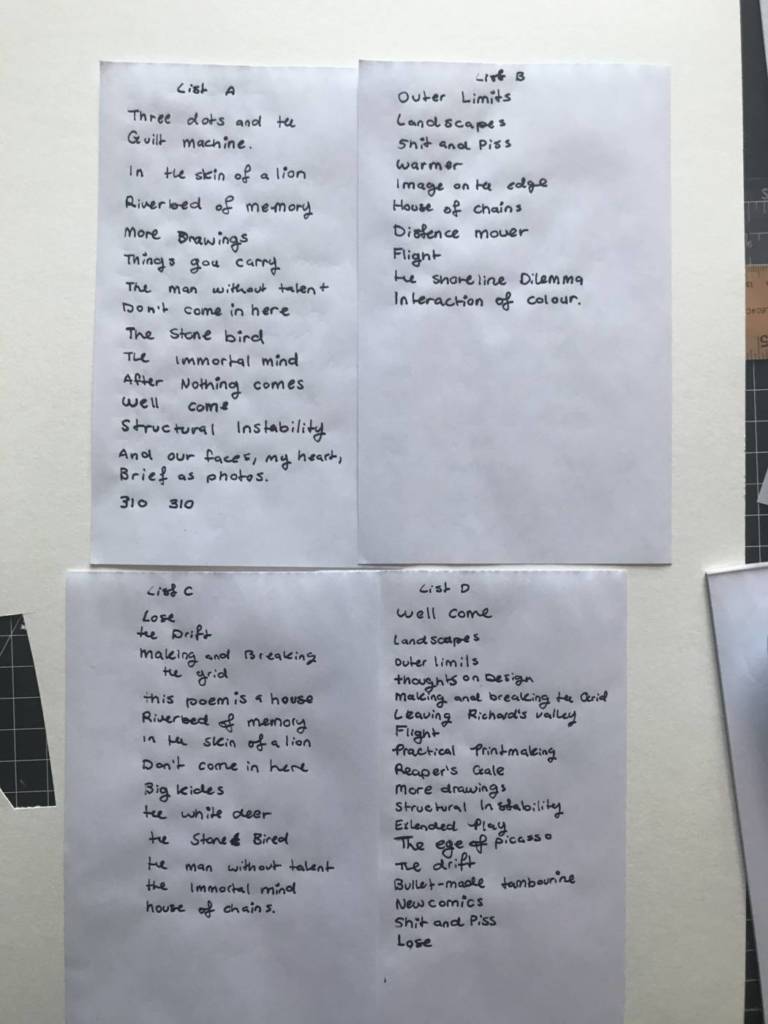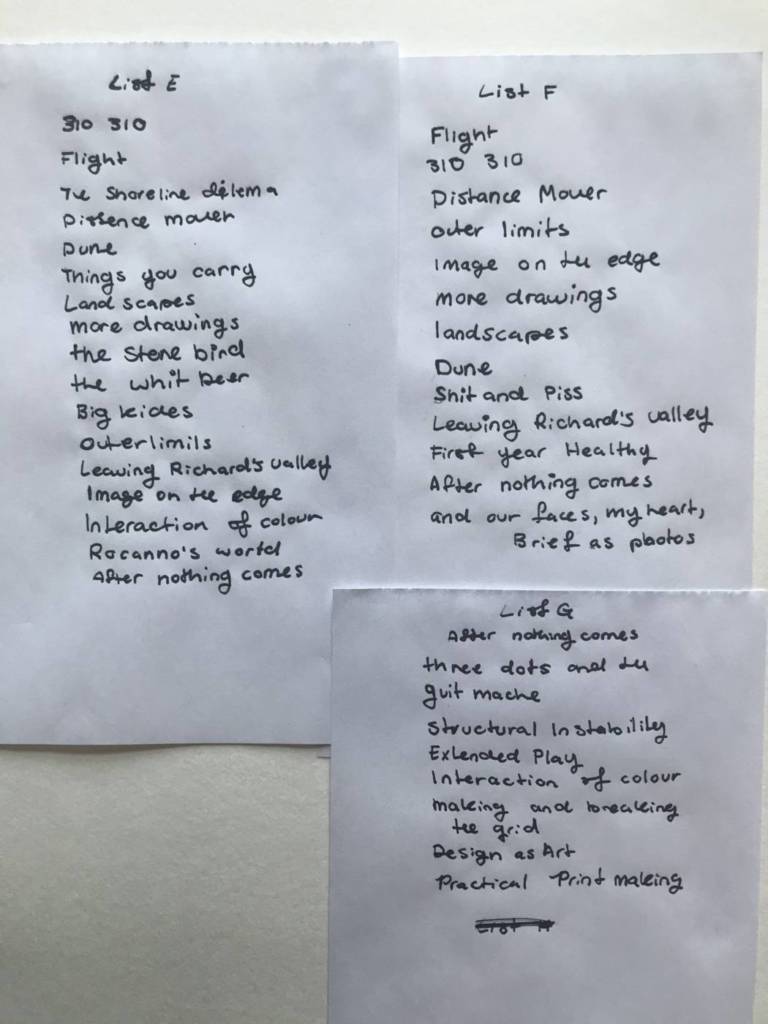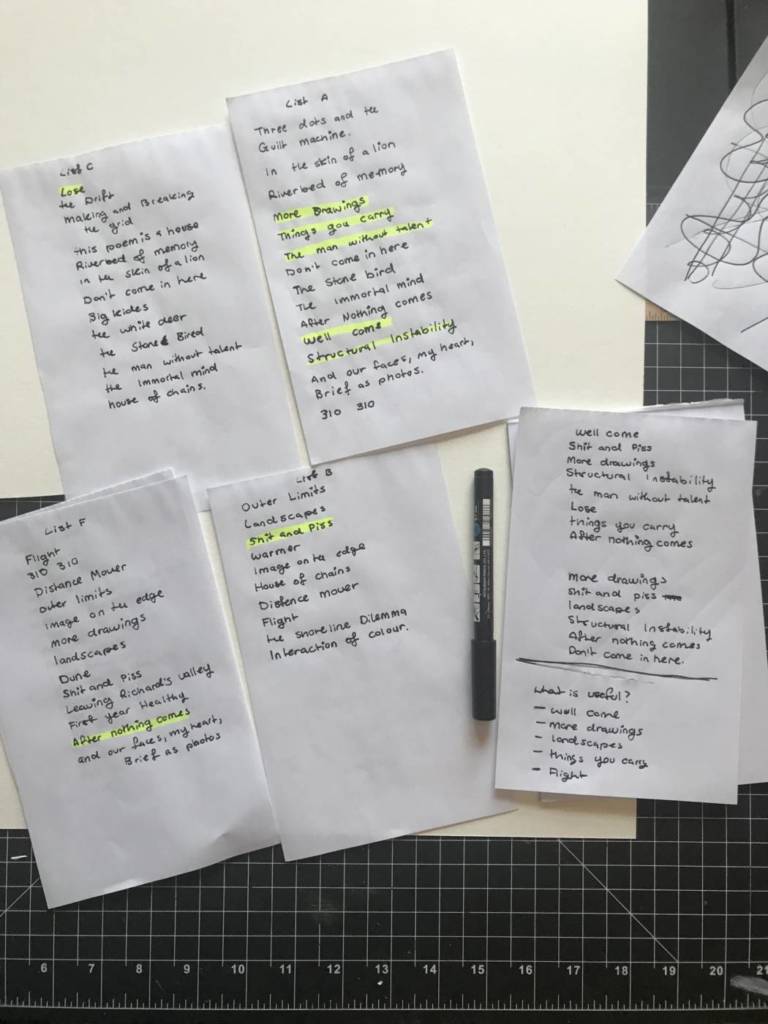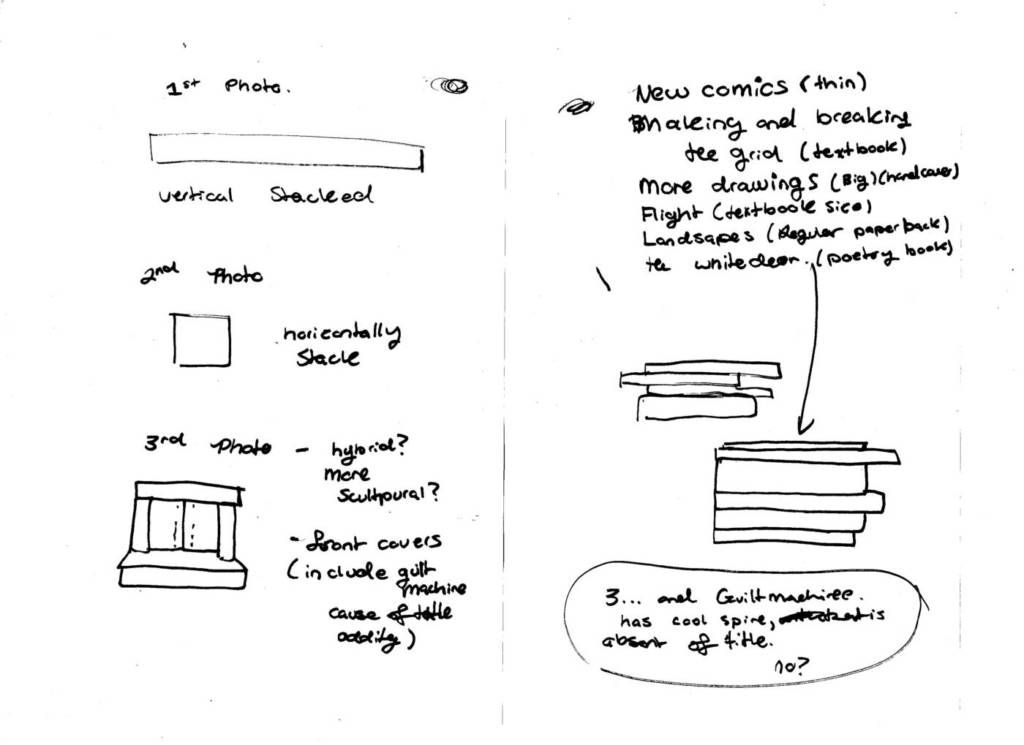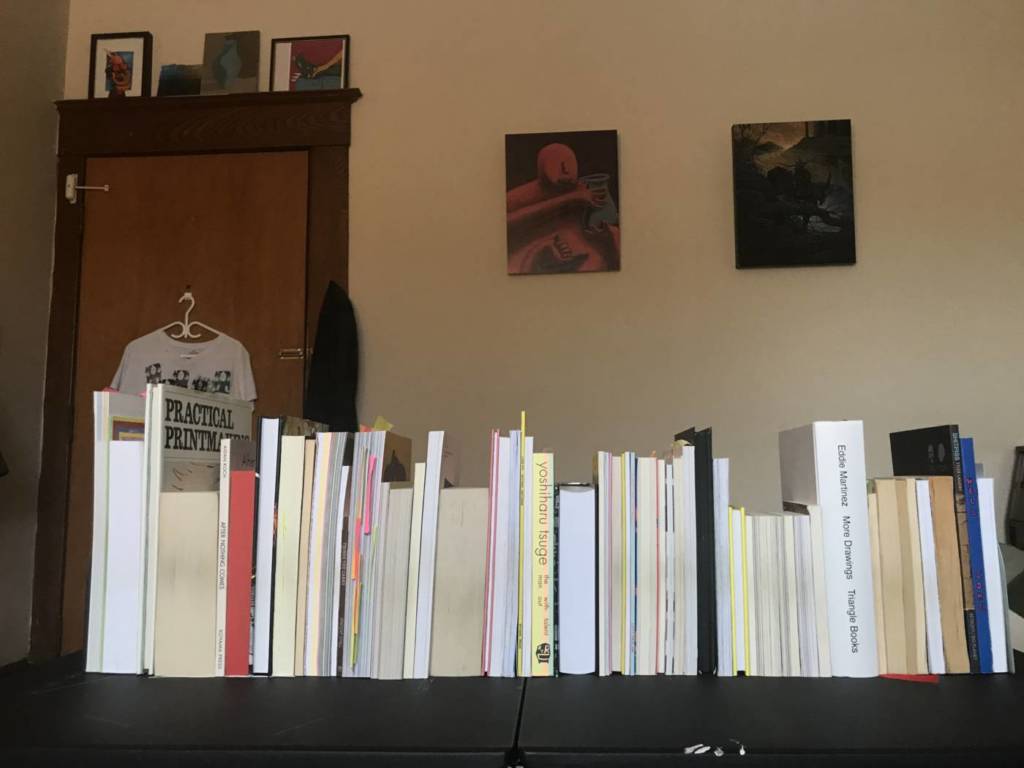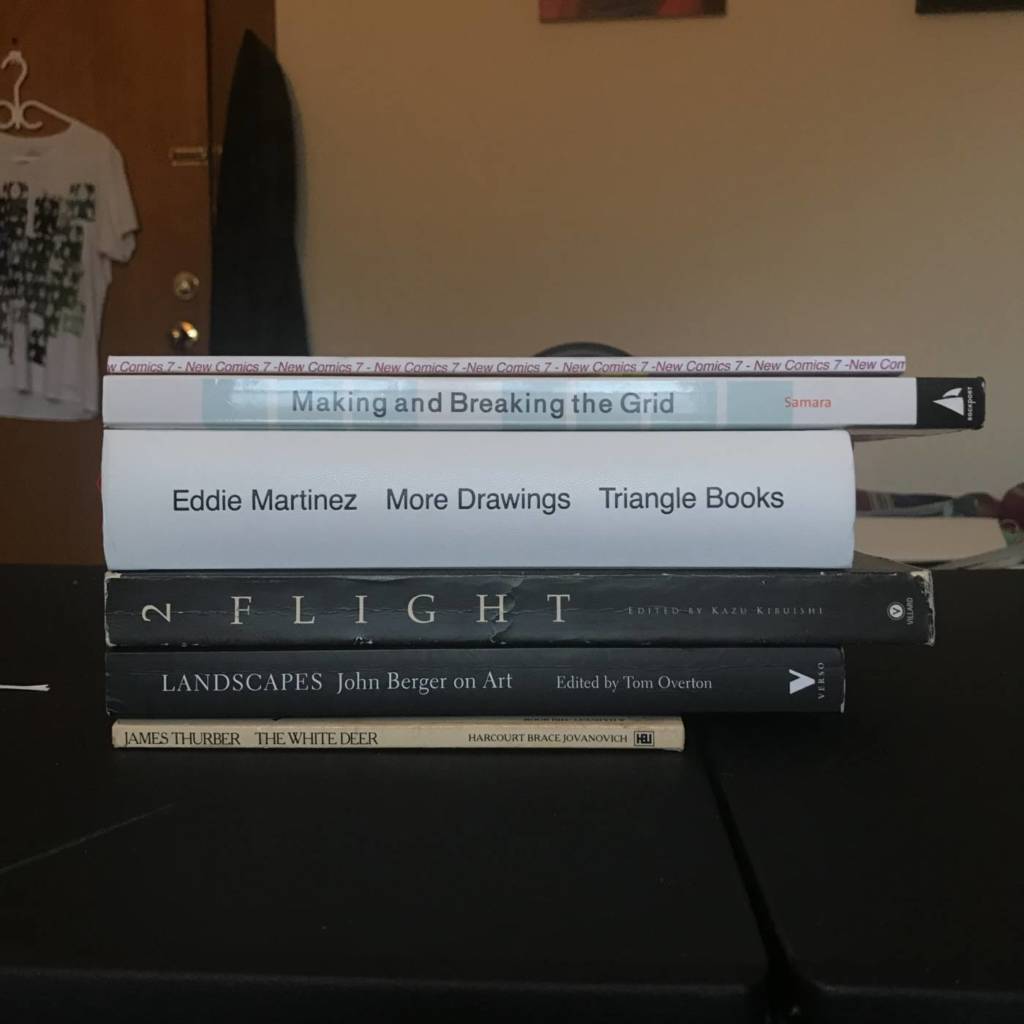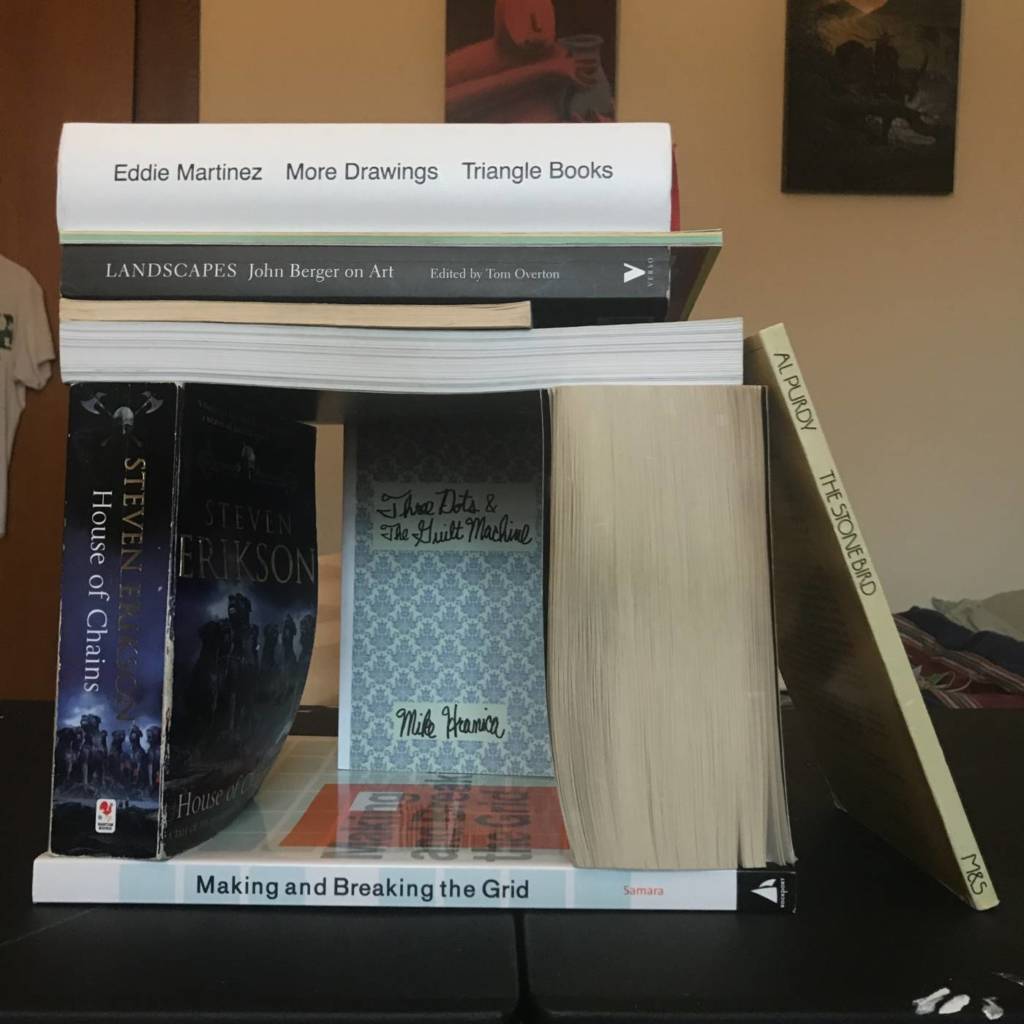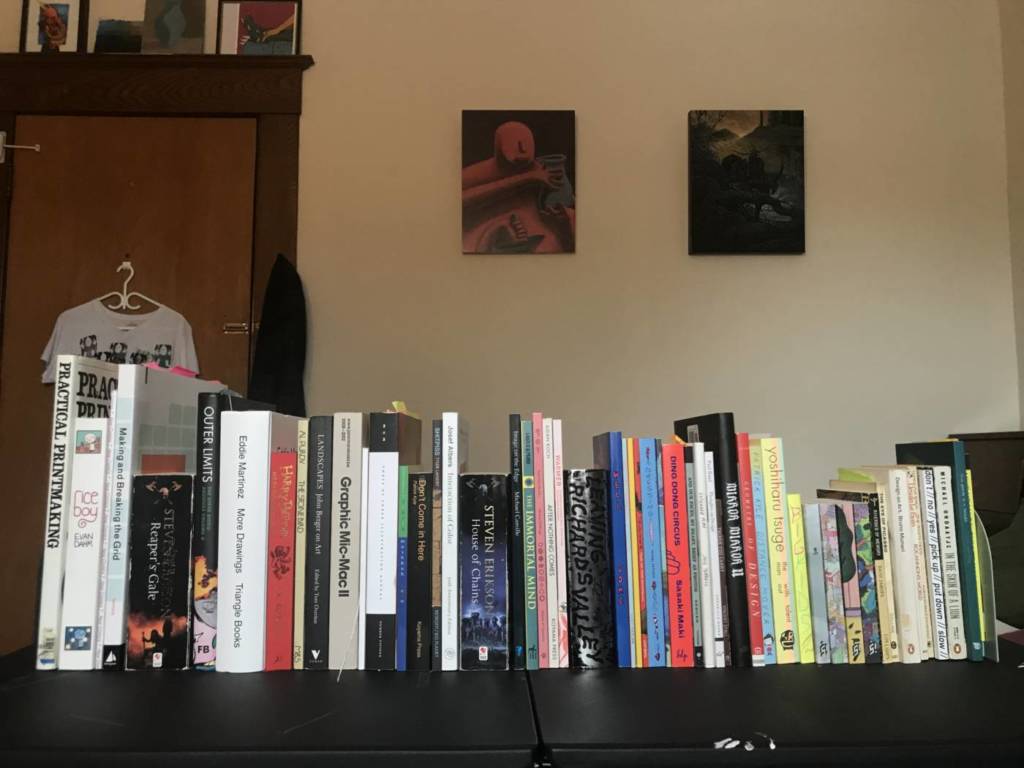WEEK 1
RESPONSE
The first work I looked at is “ A Day at the Beach” by Nina Katchadourian. Her strategy to select and order books is to write down every title within a library onto separate cards, and select a few that jump out at her. She relentlessly organizes and reorganizes thee title cards until she arrives at an order with which she is satisfied. Her decisions are based on how the books talk to one another, and in this specific piece, that manifests quite humorously. The final compositions expand the meaning of each individual book by telling a new story, one of a shark attack at a beach. This might tell us something about the book’s owner, such as an affinity to the ocean, or even simply living in a coastal place.
The Second work I am discussing is “ One Billion Years [Past and Future]” by Dave Dyment. He selected these books by finding titles that related to the passage of time, by mentioning years somehow. He composes them in chronological order, from “One Billion years ago” to “The Next Billion Years,” with others such as “Only 50 Years Ago” and others with similar titles. Together, these books tell a sort of loose history, and predict the future. Having an imaginable timeline laid out in book titles is a very fascinating concept. I suspect these books did not come from a singular library, so rather than revealing something about the owner, perhaps it is revealing of Dyment’s own interests in time as a concept.
PROCESS
I have an EXTREMELY limited supply of books. Any of the books I have are all with my mom, in boxes who knows where, since we are in the process of moving. All that I have with me in Guelph are the textbooks I’ve collected over the years. With a total of eleven books, it might sound sufficient, but truth be told I struggled. There was little interest or deviance between the appearances of the books, and almost all of them fell within one of two sizes. So, I decided to use word play to have the titles of individual books interact with another. My problem was that almost none of the titles worked well together (I changed my focus of study once or twice before settling on a studio major). How could I convey an idea with the title of one book? I looked towards Ryan Park’s, and a few of Nina Katchadourian’s, work and realized that the titles of every book did not have to be shown to convey an idea. I could use the books I had with less interesting titles as a sculptural building block to interact with the more engaging titles.
FINAL IMAGES
The Edge

The first arrangement seemed obvious to me, since I had two copies of “Image on the Edge.” Initially I was going to stack books neatly with these particular books simply on the edge of the others while backwards, but I decided to take the meaning of “edge” one step further and nearly topple these end pieces off of the shelf. With the only indicator of an image being on the edge of both the stack and the shelf, I am happy with how this turned out considering my challenges.
Leadership
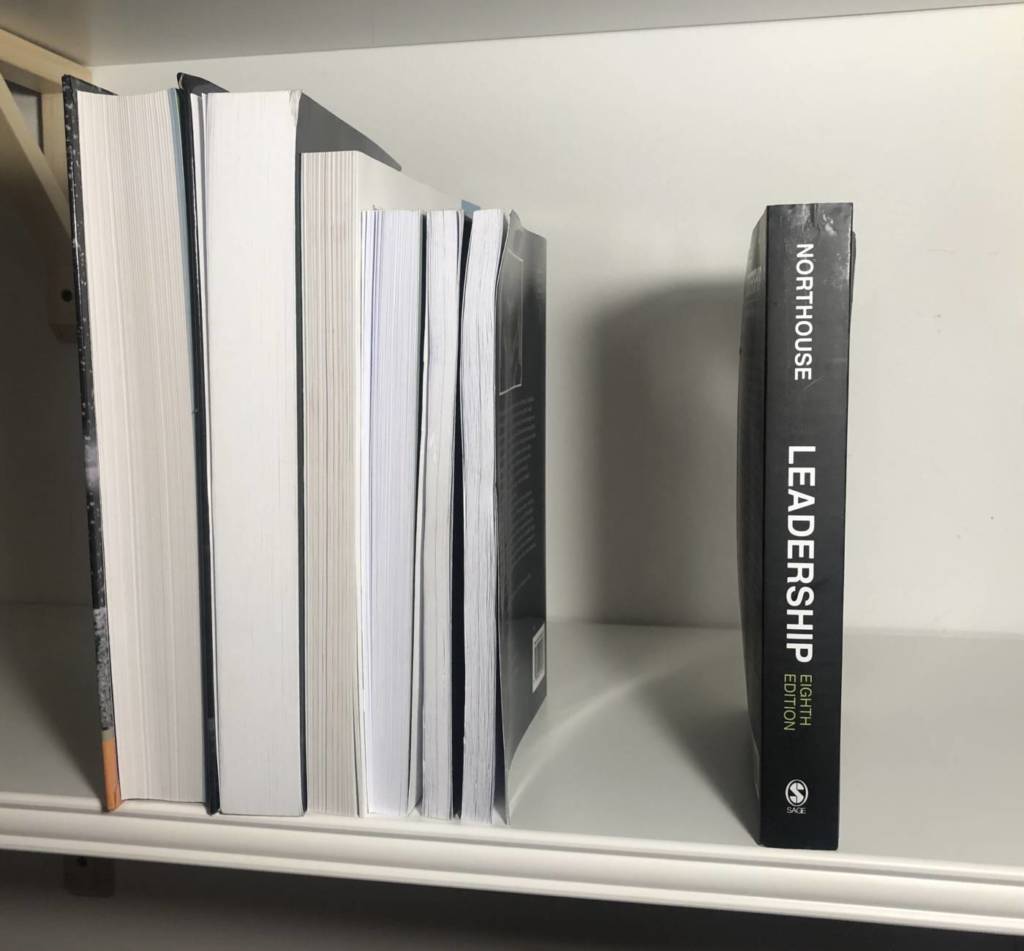
After using the books faced the opposite way, the other arrangements came slightly easier to me. I had a Leadership textbooks which I wanted to arrange to become the leader of other following books. The titles of the following books were unimportant to the concept, and would have in fact muddied this idea had I presented them. I would have ideally liked to have books of descending order to make the leadership book look the biggest (therefore older and wiser in appearance) but unfortunately, it was one of my smaller stature books. I solved this problem by creating a gap between the leader and the following books. I lined them up in an orderly row, with the leadership book a few “steps” ahead so it would appear as if it were leading the way.
The Power of Critical Thinking
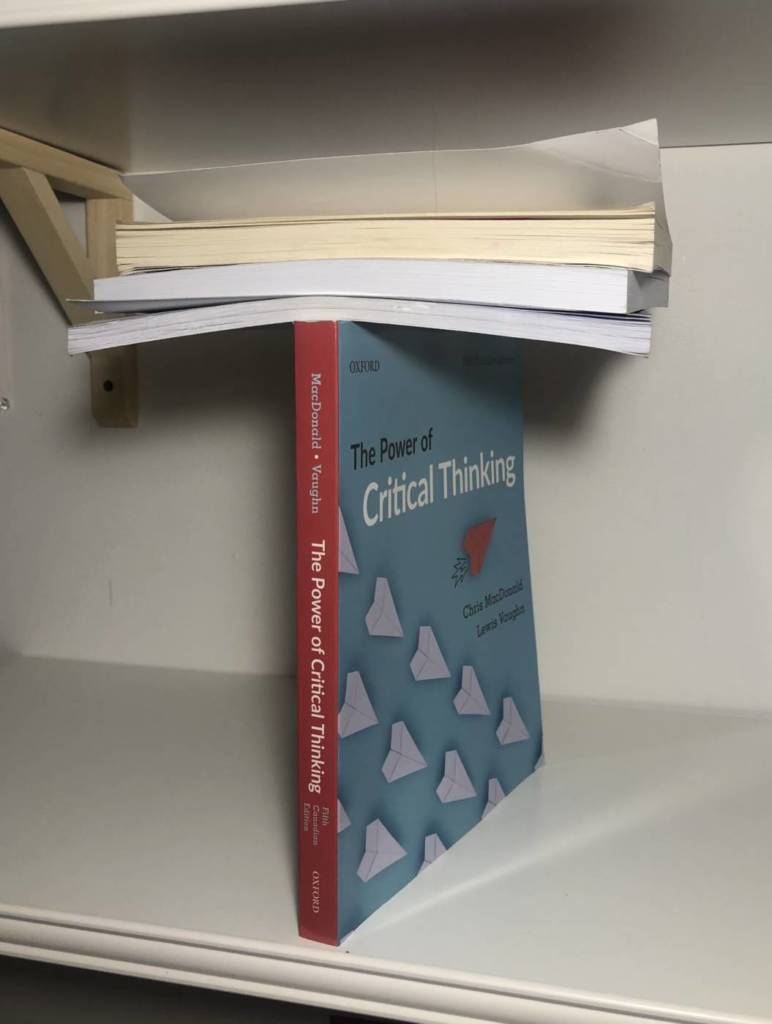
In my next stack, I wanted to play on the word “power.” I figured what better display of power than to seemingly defy physics? I carefully (with plenty of failure) balanced a few books on top of my vertical copy of “The Power of Critical Thinking.” I’m sad to report his flimsy paperback textbook did NOT stay upright on its own. But with some balancing, (and admittedly a hidden support system) I was able to capture this shot of this “powerful” book. I like this one since critical thinking seems to be in short supply these days, and I think the world would literally be a lot stronger if everyone brushed up on their critical thinking skills.
The Throne
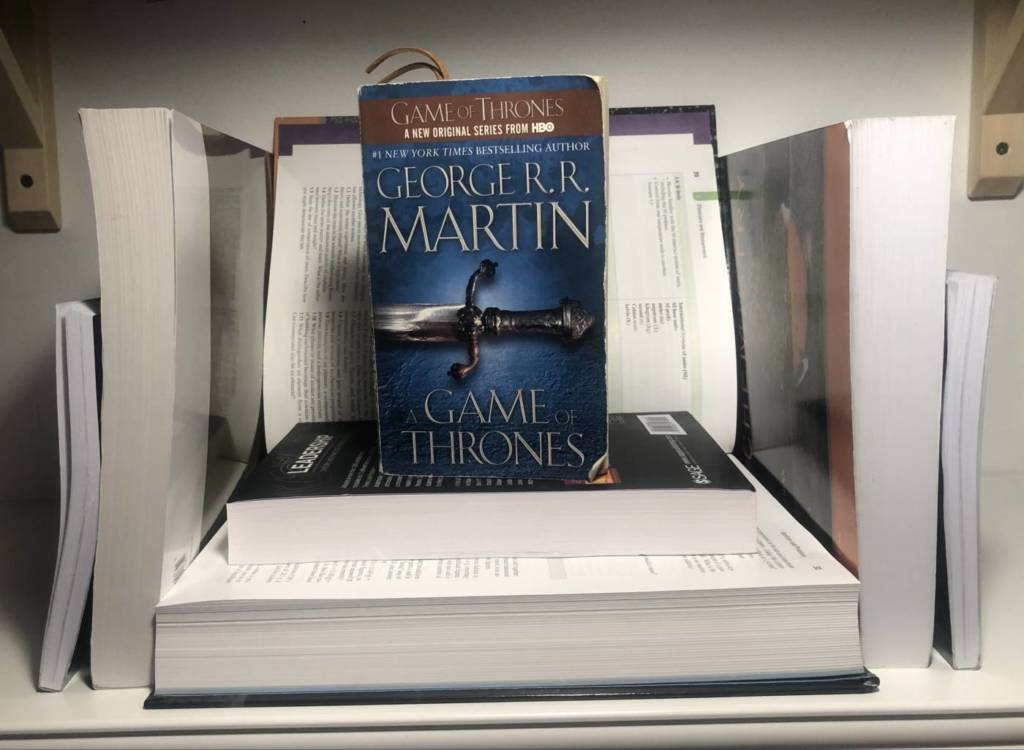
Last, I wanted to use my singular non-textbook-book somehow. I pondered this a lot, and since using other books as a building block when the titles did not compliment each other had worked previously, I easily settled on a similar arrangement method. I think I took books as a sculptural unit to the next level with this stack, building a throne of books for my “A Game of Thrones” book. The word “game” also came into play when my huge, seldom read, chemistry textbook which provided the foundation of the throne came crashing shut just milliseconds after this shot was captured. This was surprisingly hard to balance, due to my untouched, tight-spined books.
WEEK 2

Belief+Doubt by Barbara Kruger uses immersive installation as the method to express her message. Every inch of interior space is covered with massively sized words, overwhelming the viewer with text.
Here on Future Earth by Joi T. Arcand uses photography to express her message. This photo series evokes great feelings of a familiar world, only something seems slightly off. The text we are used to seeing in a small town – such as store fronts and road signs–has been fully replaced by Cree syllabics.
Both works use text displayed in an environment in unexpected ways. Where Kruger places text on multiple surfaces, unrestricted by where text is most typically observed, Arcand uses text in predictable places, but uses a an unknown (to the majority of viewers) language with an unknown alphabet. The sense of space is important to both works, in that Kruger’s piece deals with experiencing the space as an installation work, and Arcand’s – though photographs – evoke a sense of familiarity that can transport the viewers into feeling like they have navigated that kind of space many times previously. It would also be fair to say that existentialism would be at play in both of these artworks. For Barbara Kruger, the text itself asks questions and makes statements such as “PLENTY IS ENOUGH,” and “WHO IS FREE TO CHOOSE?” which address societal structures and begs viewers to reconsider what they think they know. The sheer scale of these words also puts emphasis on how the message is meant to be received. For Joi T. Arcand, the viewer is left to feel as if they are disoriented and foreign in an all too familiar place. For viewers that can understand the Cree syllabics, perhaps they are led to reflect on what the modern environment would look like had colonization not occurred (still probably not quite like Arcand depicted).
WEEK 3

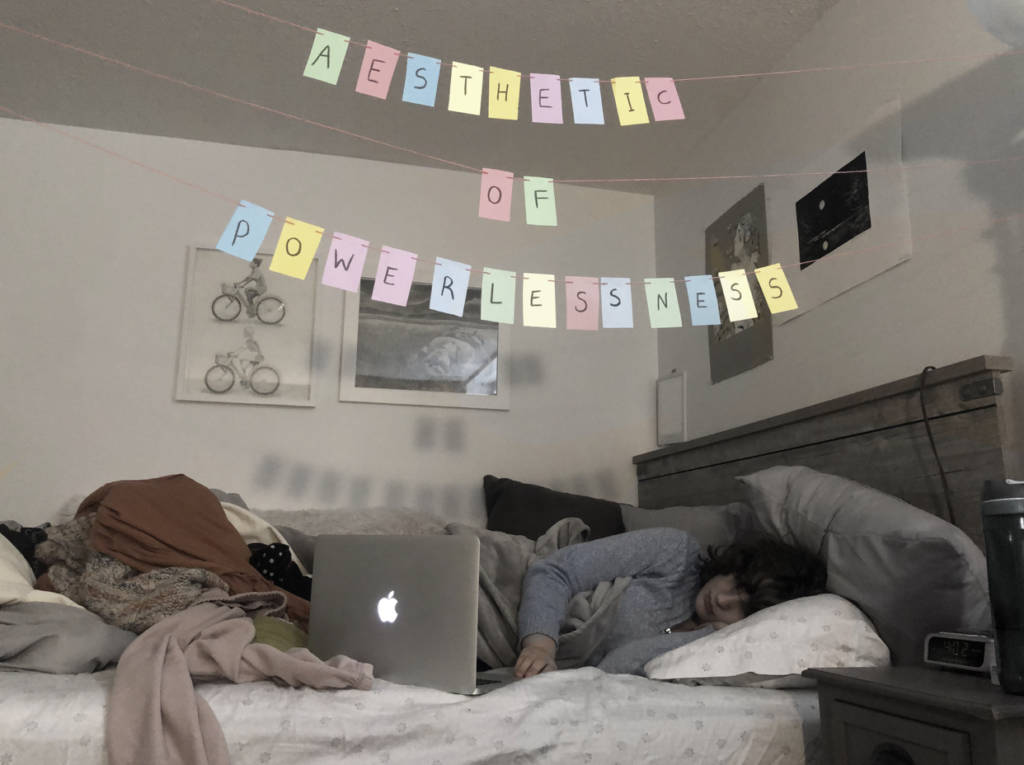
“Aesthetic of Powerlessness”
I lifted many phrases from the article, but became most interested in “aesthetic of powerlessness.” I thought it was interesting since most times, powerlessness is hidden away from the world, and instead wanted to put it on display, and show the “aesthetic.” I also wanted to capture multiple layers of powerlessness in a single image, with themes of poor mental health, total dependance on technology, the unavoidable lifestyle adjustments of a pandemic, and anything else that might lead to the monotony of an everyday life of powerlessness.
I used many uplifting colours in the banner to act as an oxymoron of sorts. I enjoyed the idea as a banner used for celebrations (such as “happy birthday”), and thought it would be interesting in conjunction with a condition that causes most people great shame. I also lowered the saturation of the photo to make the life and aesthetic more dull, and to come across even more powerless than the content of the image suggests. At first I began to remove the shadows cast by the banners, but then ultimately decided to leave them in because my original intention was to cast a spotlight on this hidden human condition, and though the shadows make for unideal composition, it further showcases a raw, and un-orchestrated aesthetic. Therefore, I made the spotlight both figurative and literal.
WEEK 4

VIDEO PROPOSAL: “DORMANT”
I struggled a bit in thinking of how to relate to nature in the winter months. Most everything is dormant. If it were any other season, I would love nothing more than to convene with nature and all of its magnificent beauty. But I greatly dislike winter, and what nature brings with the season. But, I realized I do not need to “do” anything for this video other than lean into my instinctual reaction to nature during this time of the year. My feelings toward nature during this time should provide the content for how I communicate with what is around me.
I want my video to be calm and meditative. Perhaps a bit melancholy, but ideally it will capture a submission to nature. An exercise that enforces learning from the natural wildlife that pauses its vivaciousness during the winter time. I also wish to reflect on the natural condition of seasonal depression.
Similar to Rebecca Belmore’s Speaking to Their Mother, I wish to convey the communication between the earth and people. Only instead of speaking to the earth, I want to show the earth speaking to us, and the powerful commands of nature.
Similar to Benny Nemerofsky Ramsay’s “Trees are Fags”, I wish to look towards trees (among other natural life) to learn their wisdoms, and become aware of my mind and body.
I have prepared a monologue. Every statement comes at a 30 second interval on voiceover, in between the statements, simple visual actions will be taken to allow resonation.
Script is in bold– Instructions for actions in regular text.
- Approach from off camera, poorly dressed for the winter.
- It seems that as the seasons pass and change, so do I.
- I put on outerwear (prepare for the conditions).
- It’s cold, very cold.
- Stay still. Breath long, hot, visible breaths.
- What must I do to feel warmth?
- Turn to face the tree (right side of the shot).
- I’ve noticed the sunlight doesn’t last very long these days.
- Kneel.
- My energy is quite low.
- Sit on the ground.
- I think I’ll go to sleep for a little while.
- Lay down on side facing camera.
- As the earth is blanketed in snow, so am I tucked in to slumber.
- Close my eyes.
- Let’s dream of something nicer for a while.
- Shift in slumber, change positions.
- I can’t wait to wake up to lovelier conditions.
- Be still.
- Until then.
The Setting:
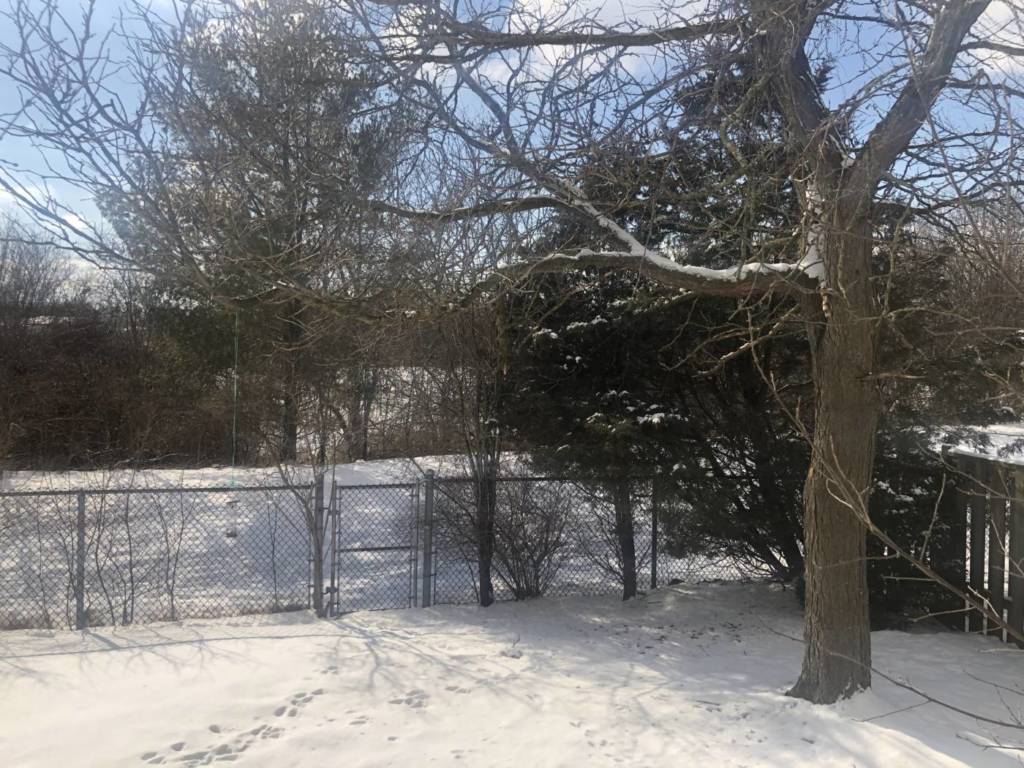
WEEK 5

When prompted to commune with nature, I felt puzzled as to what I could possibly do. I do not exactly feel inspired by nature during this time of year. No “exciting” ideas came to mind. With art, I struggle with simplicity, and rarely ever feel comfortable with the concept “less is more.” But with this project, I was able to lean into my lack of enthusiasm, and just react and commune with nature the way I automatically do, even if that reaction is to just “be.”
I took inspiration from the artists Rebecca Belmore and Benny Nemerofsky Ramsay and their works. Belmore’s Talking to Their Mother inspired the idea to listen, respond and converse with nature. Nemerofsky Ramsay’s Trees are Fags reminded me of the connection to trees and other life forces found in nature. Together, both of these works guided me to the connective self awareness of one’s own mind and body, and what the acceptance of what nature insists of us looks and feels like outdoors.
The technical aspect of this video was challenging. I had no filming equipment, and I shot the footage after the winter storm, away from my house. Even a make-shift tripod was not a plausible option for me. Instead I employed my brother and roommate as my camera crew. Even with instruction, a couple of the shots did not come out as I envisioned, but I did with what I had, and made formal decisions based on what I managed to collect. Audio was even trickier, as many of my video clips had traffic noises in the background, due to one of my locations being nearby a major intersection, during peak time. I managed to cut out this traffic noise, as it had no place, and no significance to my concept. Though the professional quality is questionable, I made sure to set my intentions with the other formal aspects, and stick to them.
Dormant
This video is a response to winter. The response is to shorter days and longer nights, the lack of light and warmth, and the way the earth shuts down and is at rest for quite some time. I often find myself following nature’s lead in the winter months, having not much energy to spare. Here I situate myself among nature, and insert my own personal experience with in the natural world. I discovered my own instincts are not unlike the way that wildlife reacts to the changing season. The experience was validating, in that slowing down, or needing to rest is a universal experience; life cannot be measured by productivity. It is my intention that this video may serve as a reminder of this sentiment. While watching this video, take the opportunity to meditate, and be aware of your breathing, heartbeat, and reconnect with your core life force.
WEEK 6

ZOOM VIDEO Proposal
I wish to play with different camera angles on zoom. This idea was inspired from joining a zoom meeting with my roommate where I could be seen within her frame, as well as my own. I thought the phenomenon was silly, entertaining, and quite fascinating.
The most interesting thing about zoom, in my opinion, is simply the use of multiple live videos on a single screen. Usually, zoom reduces us to 2D figures, where we only ever see each other from straight on, head and shoulders. My plan is to set up multiple cameras around me, take advantage of the multiple screens, and observe myself from every angle. In a pandemic, we are missing out on the presence of others, so I intend to stimulate my presence more holistically, rather than just a face in a tiny square.
I am unsure how many cameras I have access to for this task, but I know I have at least four. At minimum, I plan to set up cameras in front, behind, and at both of my side profiles. Hopefully, If I can manage to acquire more cameras (at the permission of my roommates), I might position more cameras to capture myself from even more angles than one would typically see in real life.
This video is not just about recontextualizing the body in our modified world, but for me to also observe myself. It seems difficult for someone to truly observe themselves in an objective manner, so this will be an additional goal of mine.
I will look to Pipilotti Rist as inspiration, where her work “Flatten” shows her from an unexpected angle.
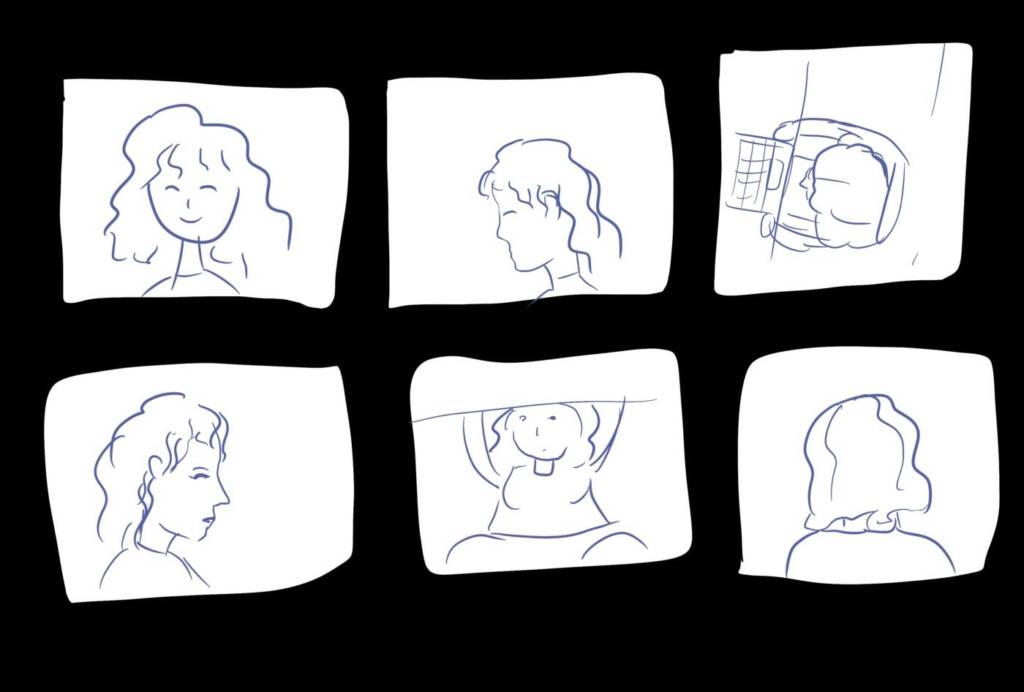
Week 7

When prompted to make zoom art, I immediately thought of our limited perception of each other during the pandemic. We no longer see each other as we are, it is either a straight on shot of someone’s head and shoulders, or a blank screen without a name, no more than that. Our perception of our peers and colleagues have shifted, it is hard to imagine them out of their primary zoom backdrop, doing anything other than staring at their screens.
I am definitely the person on a zoom call to hide with my cameras off unless I am displaying proper zoom etiquette. Though, the latter scenario is quite rare, as I am a neurodiverse person who struggles to sit still or focus. When the camera is on, I am hyper aware of my every action, but when they are off as they usually are, I exist without worry and pay no attention to my actions. So, naturally, I decided to turn on a bunch of cameras, and just forget about zoom etiquette.
Following the video proposal, I received encouragement to become more experimental when put on camera, and it was suggested that I perform an action that requires looking, or even self-perception, such as braiding my hair. When reflecting on this feedback, I knew I simply had to put myself on display and see what manifested naturally without any premeditated thought. I accepted the challenge to act more experimentally, but knew I wanted to explore perception in a way where I was captured beyond a single action.
Therefore, my intention with this video is to perceive myself, and be perceived by others beyond the stagnant head and shoulders framing, moving around in my own space. Taking inspiration from Benny Nemerofsky Ramsay’s video art, which resembles surveillance footage, I set up 9 cameras all around my room at many different angles, and started a zoom conference.
With my unguided task, I am both the experimenter and the participant; I had no idea how I would respond to the conditions of my own creation. But, despite any insecurities, fears, and opportunities for embarrassment, I still performed in front of the many cameras. This task was not completed with ease or comfort, where I shared glances with myself on the monitors, and saw myself in the grid during the filming process. I kept busy with action as to simultaneously not focus on the appearance of my body, and to look even more intently after the fact.
When reviewing the footage that I gathered, I made quite a few observations:
- I looked at the cameras quite a bit.
- Many of the actions were nervous ticks (playing with my hair, checking the time, etc) that I frequently do when I am uncomfortable/bored.
- I attempted to use my space to its full potential (running, dancing etc), which is an uncommon behaviour.
- In the moment I was less concerned with the appearance of my body, but was very judgmental of myself watching it back.
This experiment proved to me just how much perception and expectations change a behaviour. Though I relieved myself of the expectations and etiquette of a video conference (being still, focused), the fact that I knew I was being recorded still dictated much of my behaviour. Other than the nervous ticks, though they hinted at my discomfort, my inhibited behaviour is very telling towards how my concern of perception is far stronger than my concern for etiquette and politeness.
A formal decision that I made was what I wore: all black to make my body stand out among a busier background, which also helped to convey a sense of continuity between frames so the space could be easier understood by the viewer. Another formal decision I made was to use raw, unedited footage. I know that if I decided to edit, I would alter the results of my experiment to look a certain way, defeating the purpose of observing and perceiving natural action. Last, the specific positioning of the cameras was a result of where I could place each device safely, while obtaining the maximum amount of varied angles.
Zoom: Uncut
This video came to be due to my longing to look at other people, as well as being perceived by others naturally in real life, and the intimacy involved with simply existing and being each other’s presences. Online, this simple occurrence has been taken away due to “Zoom Etiquette”, so I wanted to artificially create a sense of three dimensional perception, so my peers could view me beyond my head and shoulders in a little box. So, I attempted to emulate this perception on zoom, only to figure out this experience is impossible digitally. Though the three dimensionality of my body was achieved, my behaviour itself is not natural, preventing true perception. What this video resulted in was a discovery that zoom etiquette might not be the true culprit of this personal and social disconnect, but the fear and insecurity associated with perception itself. Different from the fleeting moments of real time, cameras and screens immortalize our actions and allow for further review and the possibility of judgement. This piece depicts the strange phenomenon of knowing that I am being watched and recorded, while pretending that am okay with that. This is an invitation for you to perceive me to the best of your ability, despite obstacles of health, safety and technology, and despite my mental discomfort, until we can once again perceive each other face to face.
Week 8

To me, bread is a symbol of love. Every day that I lived in my mother’s care, she would make me a sandwich for lunch. Well into my adulthood, and even when I return home to her, she without fail will make me the most gorgeous and delicious sandwich. Long before she had me, she learned exactly how to craft an amazing sandwich through her teenage job in a reputable deli. As I grew and my palette matured, her selection of ingredients broadened and became more refined. I would sit down for my lunch break, and unpack a new creation each day, and without fail a different type of bread would greet me; ciabatta, tortilla, sliced, flat, baguette, bagels, pitas, Calabrese, and rolls.
Beyond my daily lunch, bread is constantly offered to me by my Italian grandmother. Paired with prosciutto and cheese, or to soak up sauce or oil left in my plate, it is a staple on my Nonna’s table. Having had lived with her twice in my life —the more recent time being this past summer— her offers of bread are both well-meaning and never ending. Sweet breads such as panettone and easter bread are cultural holiday staples, and help celebrations feel complete.
The pandemic has provided everyone with the chance to take some time at home and discover new ways to occupy themselves. For many, this opportunity meant the rekindling of old hobbies, or the discovery of new ones. All of the displaced social energy had to be rechanneled at home, so in the closing of everyone’s favourite bakeries, many people took up the hobby of baking bread to provide them with comfort, as well as a sense of purpose and achievement. For more vulnerable groups, this action may have been taken up out of necessity of avoiding public spaces such as the grocery store.
In regards to the podcast, I found it shocked how they credited bread with the formation of civilization itself. I initially thought this was an outrageous claim, but upon further discussion, this observation revealed itself to be not only plausible, but correct. Grains and agriculture allowed for nomads to settle, and civilization evolved from there. It is central to our survival as a species, and quickly became the most sought after commodity.
Cooking and art intersect in that they both involve creation. They revolve around subjectivity, personal preference, and the delight of the senses. Food and art both facilitate a variety of opinionated responses based on the interaction with the respective creations. Beautiful colours and textures present themselves in both forms, as well as a sense of appreciation for the constituent parts. Both avenues involve technique, as well as diverse levels of skill and commitment, where each practise can be dabbled in or passionately mastered. The main way cooking and art are distinct is that interacting with food is a necessity for survival. While food and art both allow for the enhancement of life, food is an absolute requirement none can go without. Art is sustenance for the mind and soul, but food involves bodily sustenance as well, and we all must make deliberate interactions with food.
WEEK 9

My dough rose so much! I got two loaves somehow. Things like this usually do not work out for me, but today they did. I am not going to complain about extra bread, especially since it tastes so good 🙂

Proposal!
I have so many ideas it’s kind of overwhelming:
- Food as part of culture
- Seasonal foods
- Items posed to look like food
- Inventory of my house (between roommates with 4 drastically different diets)
- Gross recipes
- Food scraps/using waste
- Dismembered food
- Tiny food pieces/crumbs
- Close up texture shots
- Weekly diet
- Social aspect of eating
- Decomposing food
- Food Fight
- Eating food I hate!
- Surprise luncheon!
- Trying to catch food being thrown at me!
I want to do a project where I photograph my grandmothers fruit bowl once a week for a year to show how seasonal crops influences what she buys. I like this idea because she always goes through the effort to place and arrange them all nicely in her bowl. Not sure how this would work for a week long assignment, might just have to make it a personal project. But, I do love the idea of using fruit for the project, in relation to my grandparents, who have more than one fruit-based “ritual.”
Unlike anyone else I have ever observed, my grandparents eat as much of a fruit as it has to offer… seriously. Through both observance and instruction, I have taken up this tendency to minimize waste of the fruit. I never considered it interesting because I grew up thinking it was relatively normal. But, I started to observe other peoples fruit eating habits, and also began to receive commentary on how it is “interesting” how I eat fruit. Apparently it is evident that I do not want to waste any of the fruit, and it is something that other people have never considered doing. Who knew?
I propose that I will eat fruit with my roommate to compare how our upbringing and worldview affects how we eat fruit. I will photograph the uneaten fruit, how she eats the fruit, and then how I eat the fruit. This will be interesting because I minimize food waste as much as possible because of how my grandparents taught me how to eat fruit. I think it will be interesting to juxtapose my fruit eating habits with someone who does not eat as much as the fruit could possibly have to offer.
My intention is to compile a photo series, but I am unsure how to present this series. I will have to play around. The work “Rod, Bernie, Peggy, Aislinn” is informing this piece, due to the relation of family, and sentiment surrounding food and food consumption.
These are some fruits I plan to incorporate:
- Apple
- Pear
- Strawberry
- Peach/nectarine/plum (stone fruit)
- Watermelon/cantaloupe (melon)
WEEK 10

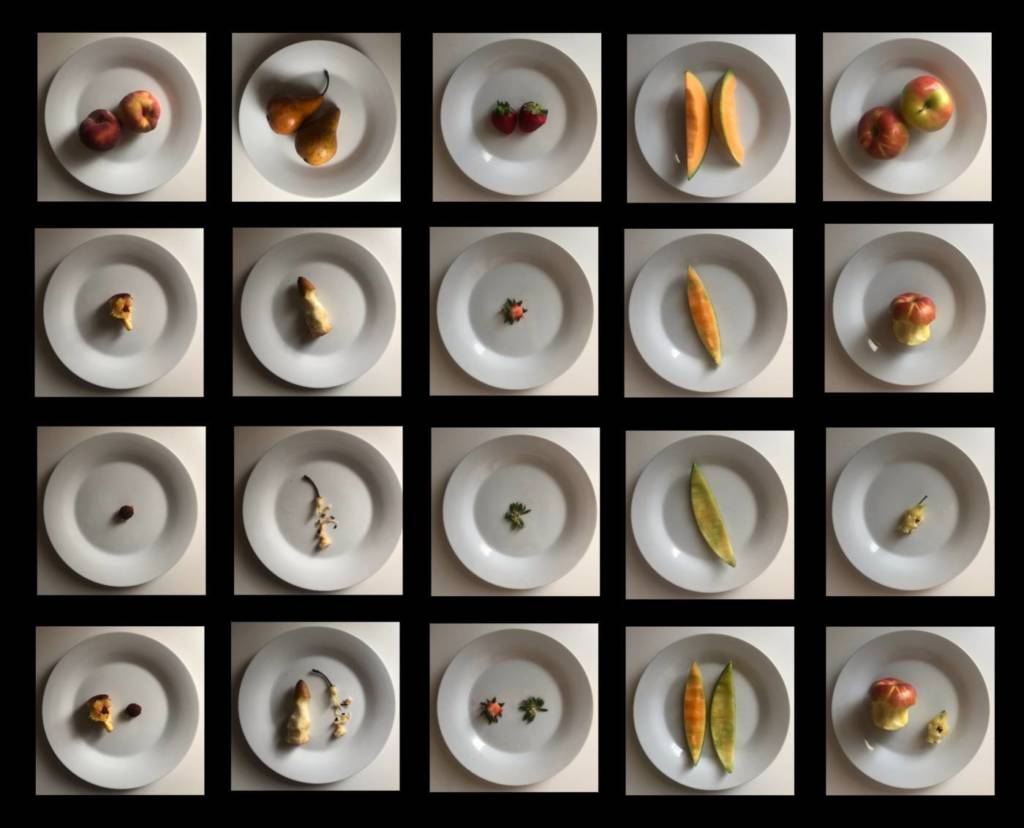
My grandparents used to be very poor, but they always made sure they had food. This meant sacrificing and saving on other necessities, and getting creative in obtaining food. They maintained a massive garden in the warmer months, and froze and preserved the produce for the colder months. They befriended farmers, butchered their own meats and ate as much as they could salvage, even the organs. Even now that they can afford to buy food, some of these habits have stuck, and food is still at the center of their worlds. The garden is still maintained, and certain purchased luxuries are savoured and revered. Food is everything to them, and I was definitely raised with the mentality that food is one of the most important things.
Fruit is definitely a clear favourite, and a staple for my grandparents. So much so that fruit is eaten as its own course during mealtimes – after the main meal and before dessert. They definitely view fruit as the pinnacle of luxury, and when we all eat fruit together it feels almost ritualistic to me. I have never seen anyone eat fruit like my grandparents. As a child I was often critiqued that I left too much flesh on the rind of a water melon, or that I did not eat enough of my apple. They would ask me, “Are you rich?” and then promptly take what I did not finish and finish it themselves. Their question was lighthearted and playful, but at the same time, they could not let the fruit go unfinished. Especially since I have lived with them for a period of time, their habits have worn off on me where I will eat a fruit down to the very seeds, stems, and rinds until there is nothing left. I find eating this way to be extremely mindful, and connects me with the process of eating, and knowing why I eat the way I do. Sometimes, eating this way feels laborious, but still, I enjoy it.
Others will observe me eat fruit, and comment on how it is strange and amusing, and then I will explain how these habits are a result of my grandparents. So, I have compared my inherited fruit eating habits with someone who did not have the same cultural influence that I had. Neither way of fruit consumption is incorrect, but I find it absolutely fascinating how much that how we eat a piece of fruit can say about our family experience. My intention with this piece is to simply appreciate the fruit, as well as give it a new function- as art. Though I am not sure my grandparents would understand this use of fruit, I know that I am using it to its full potential, which is ultimately what my grandparents strive to do each time they indulge.
WEEK 11
I finished my food art in week 10, so not much from me this week. Baking and following instructions makes me anxious, so luckily for me, my roommates like to bake as a hobby, so we had everything on hand! Making my own recipe up would positively make me crazy! We thankfully had cake mix (funfetti of course) and I added in melted butter(the box called for oil but I had none), almond milk (did not want to use water), and three eggs! We also had frosting on hand, but that alone was not enough for me, so I naturally had to decorate the cake with whatever I had in the pantry… that happened to be Froot Loops, and I think they make the cake super cute, and added a bit of crunch. Monday night I made the cake, frosted on Tuesday morning! Thank you everyone for a great semester 🙂

